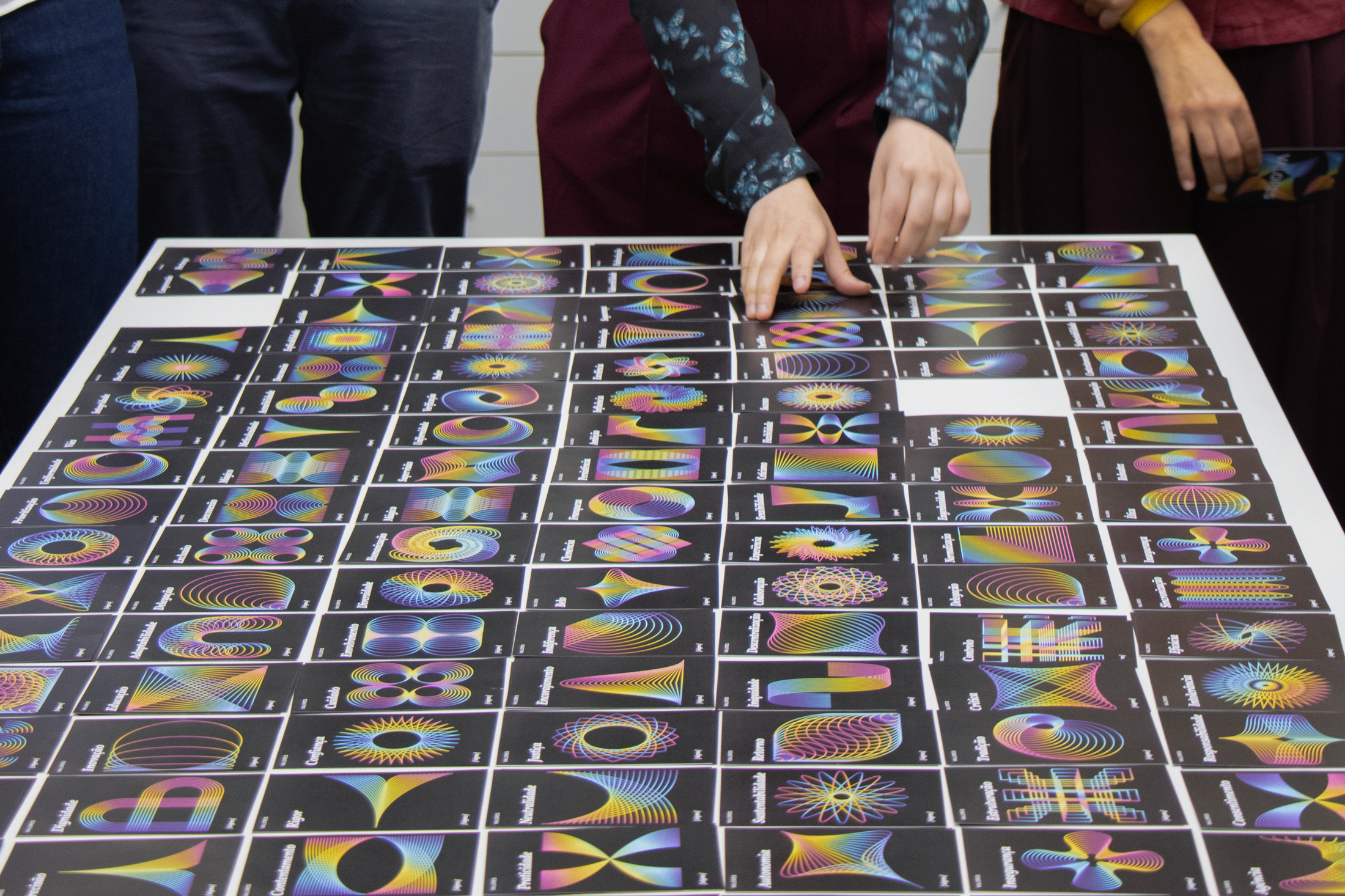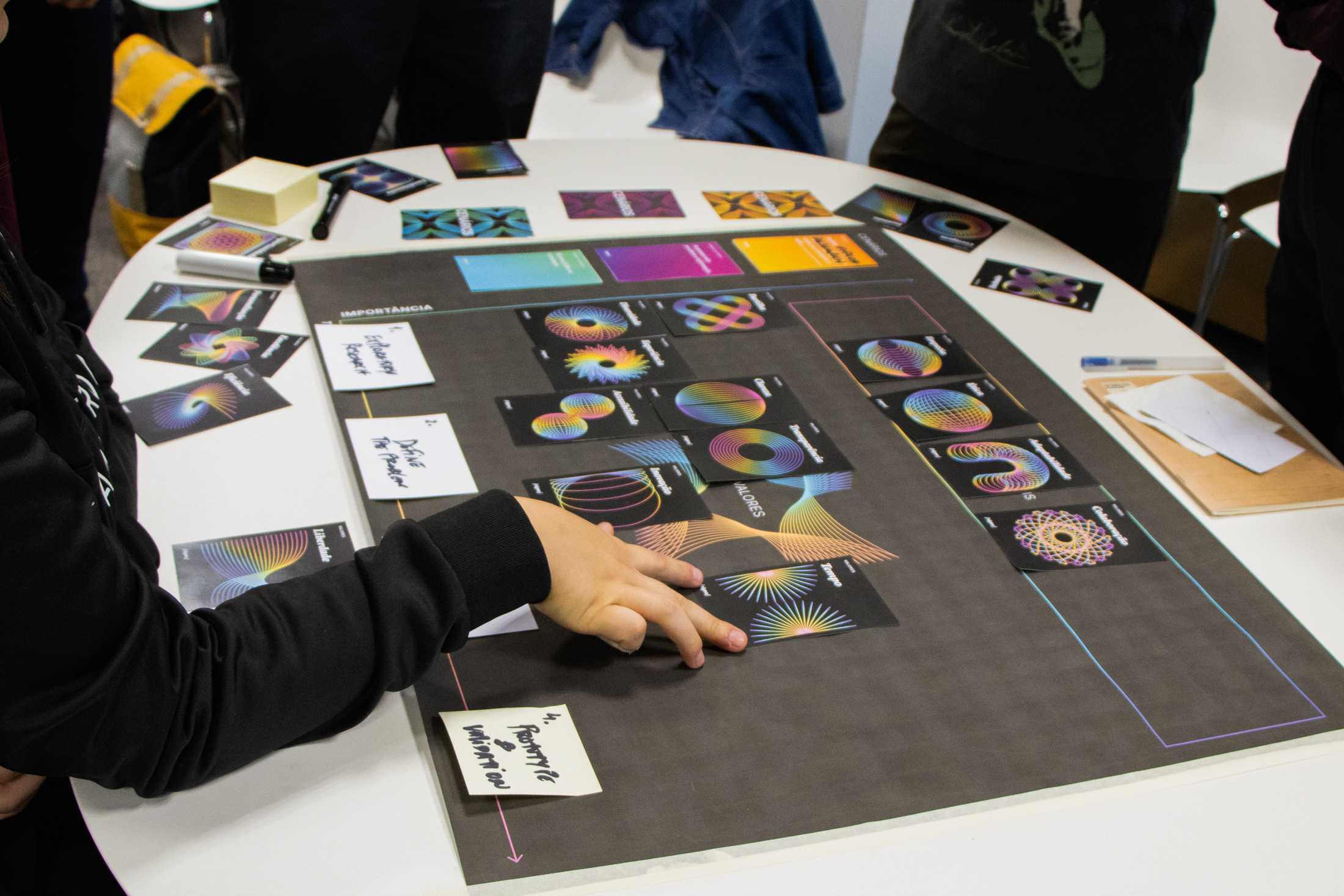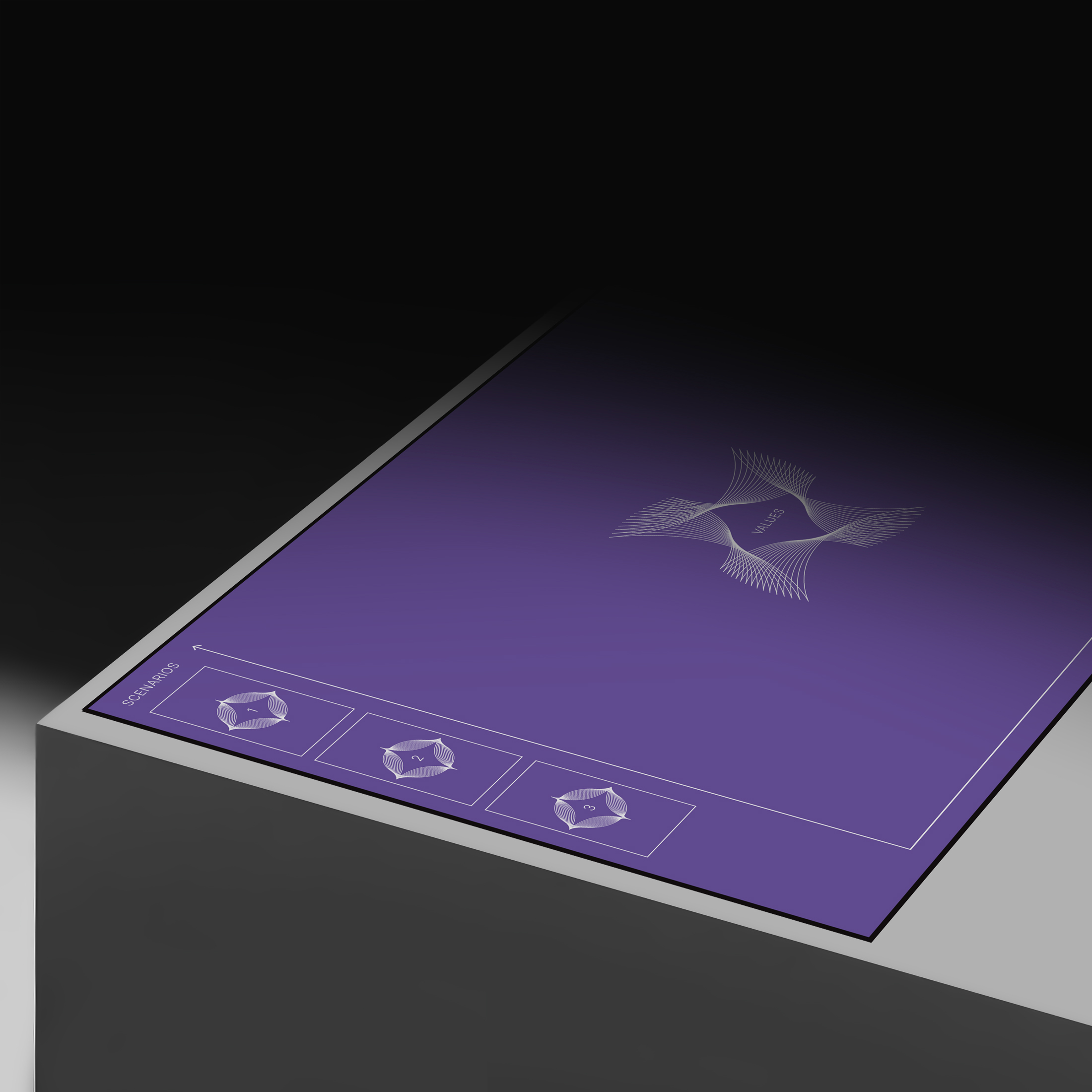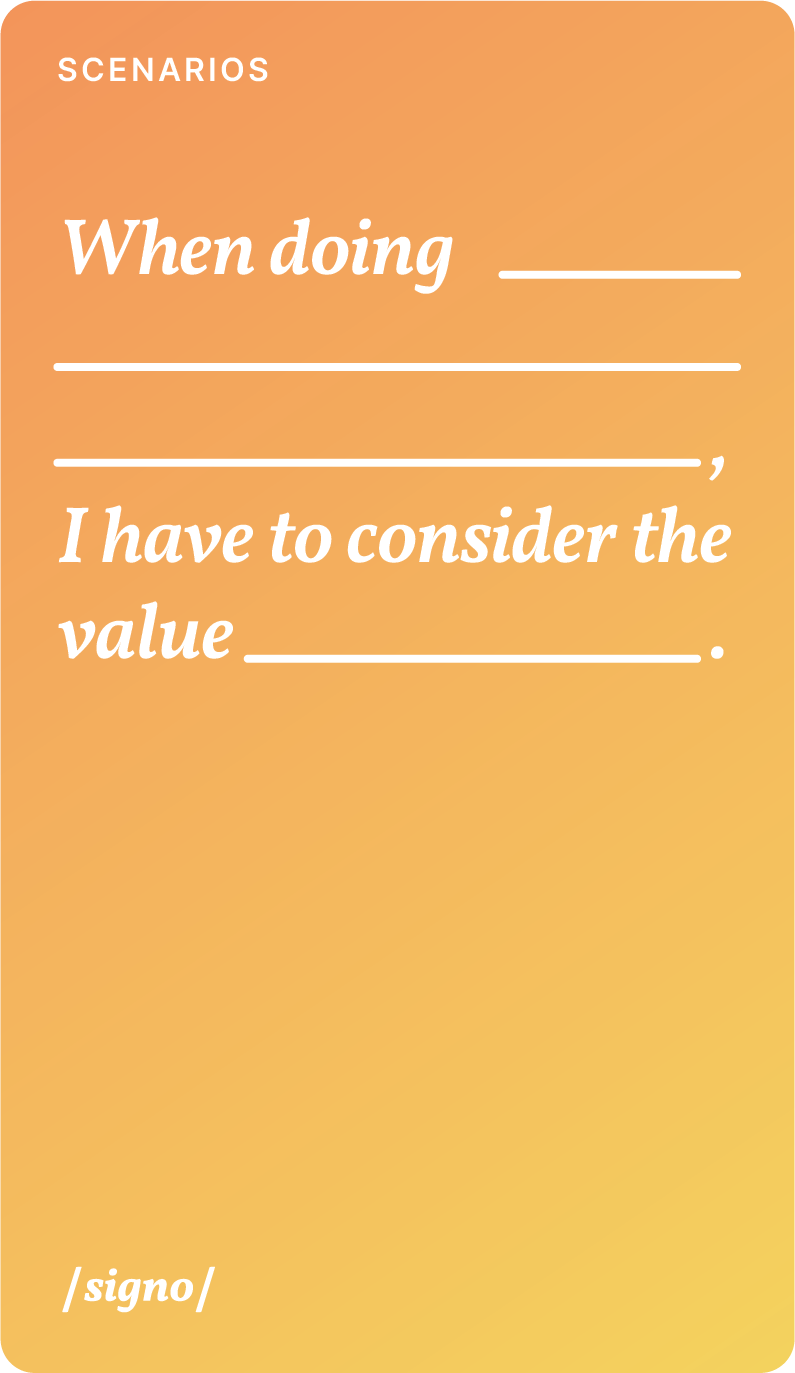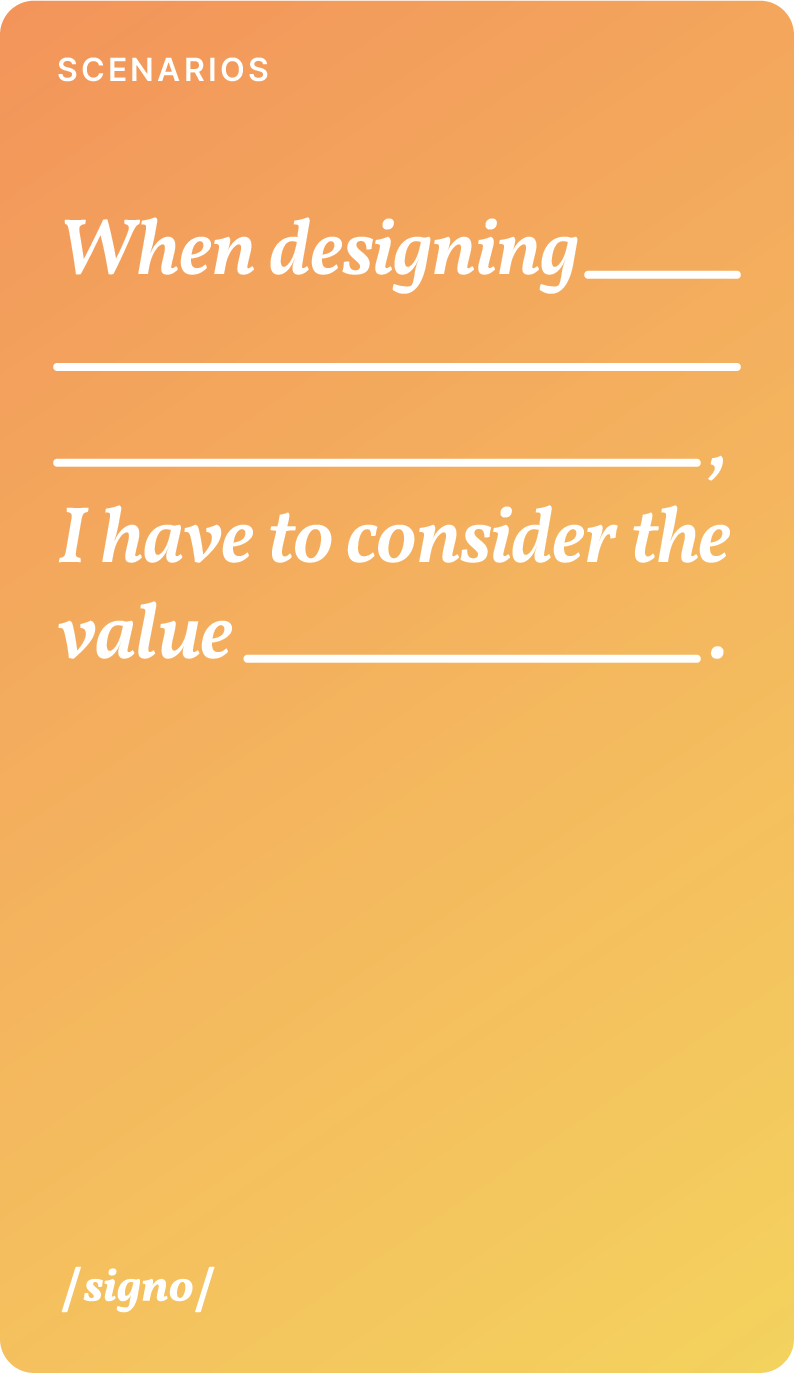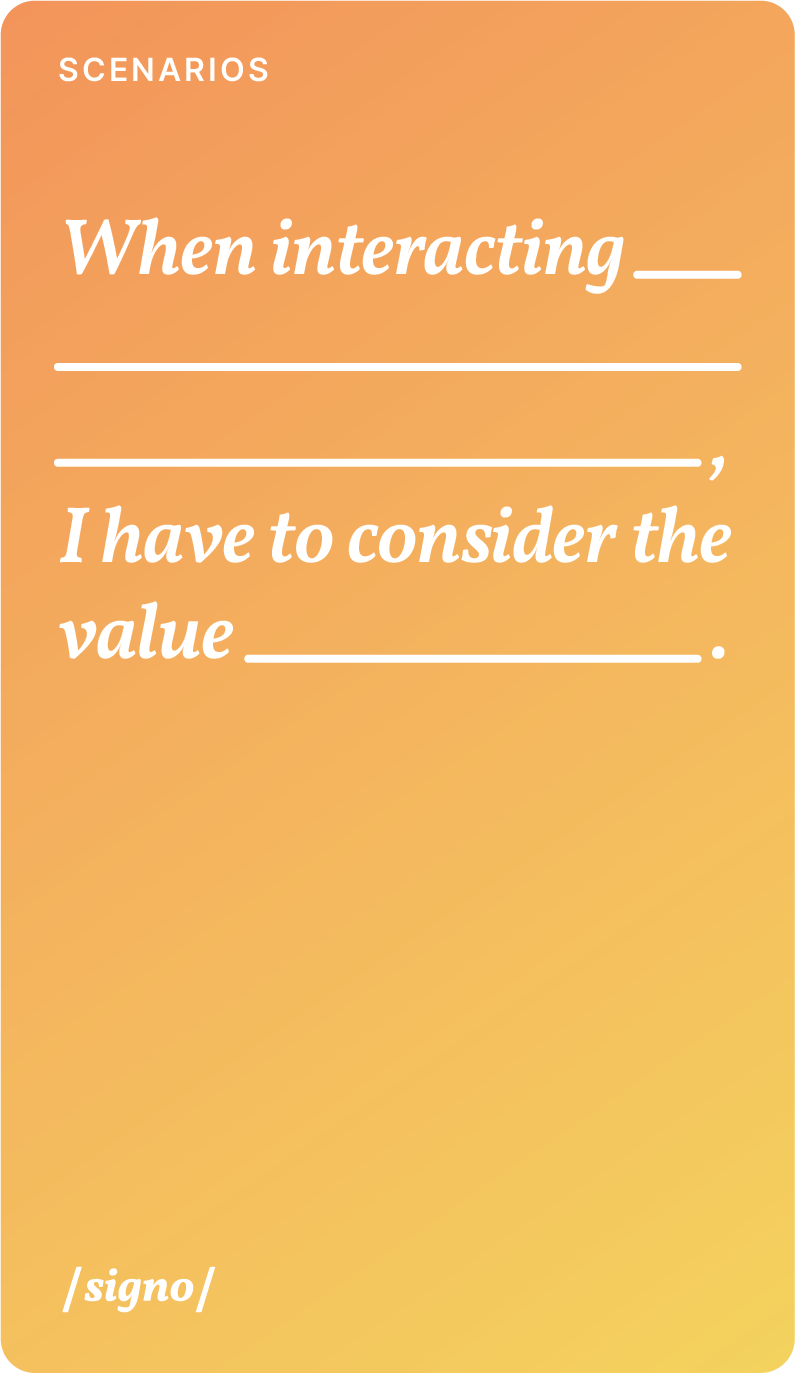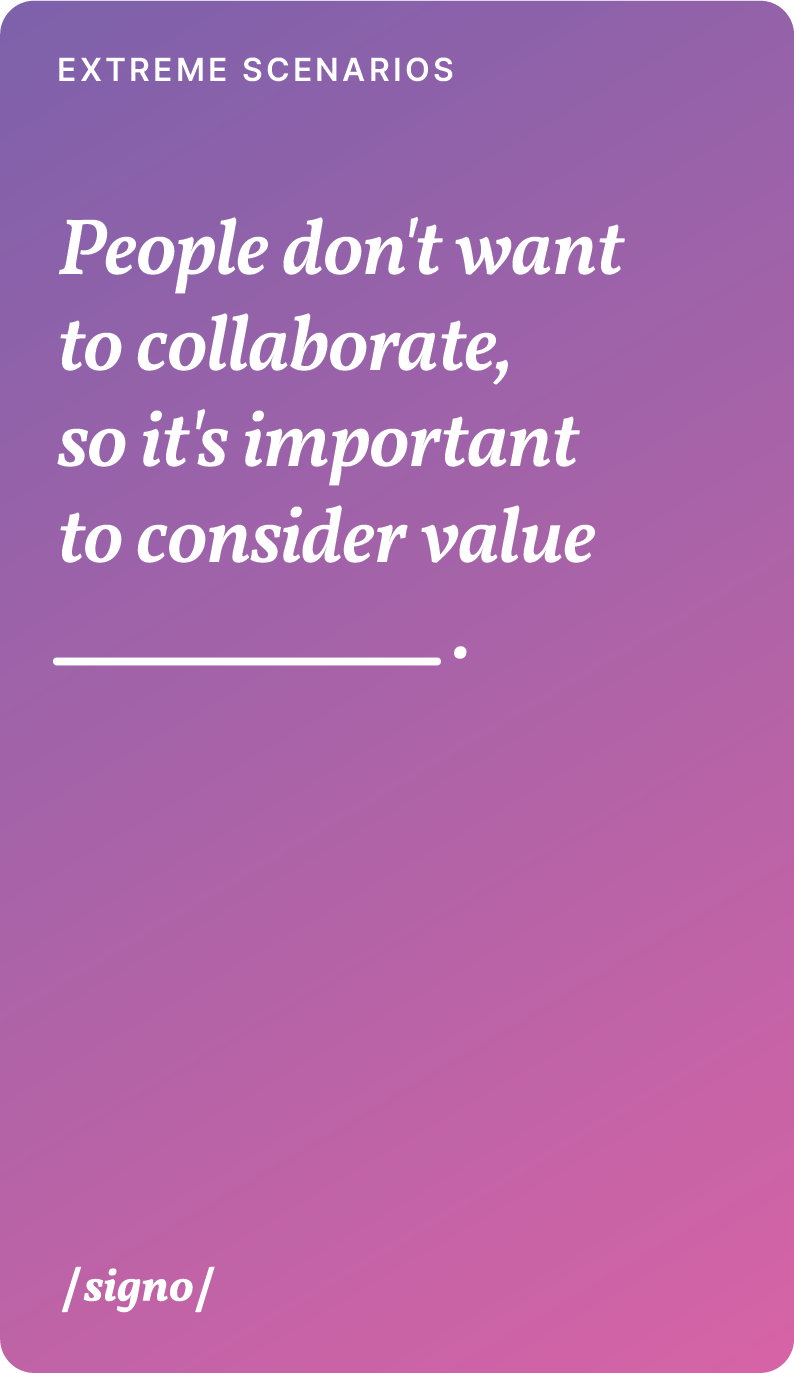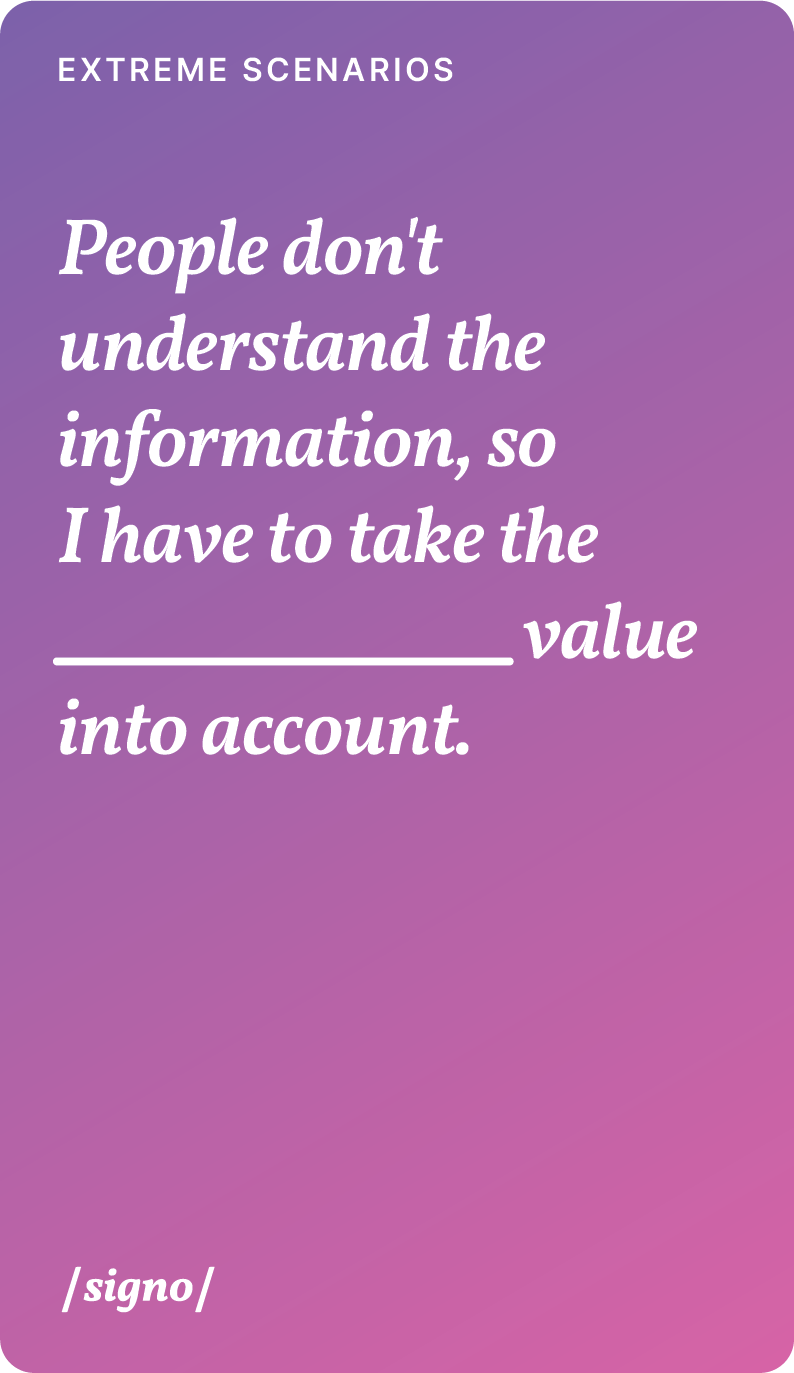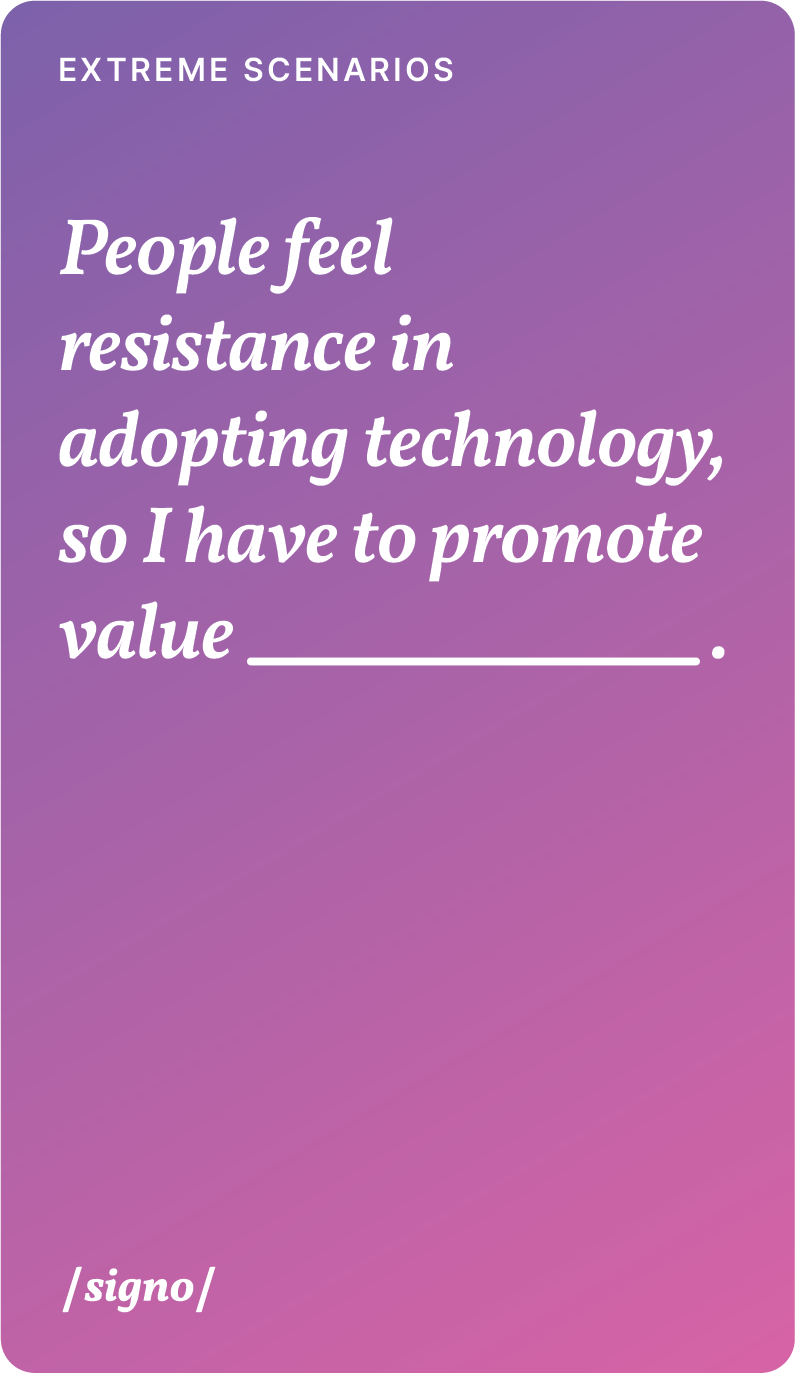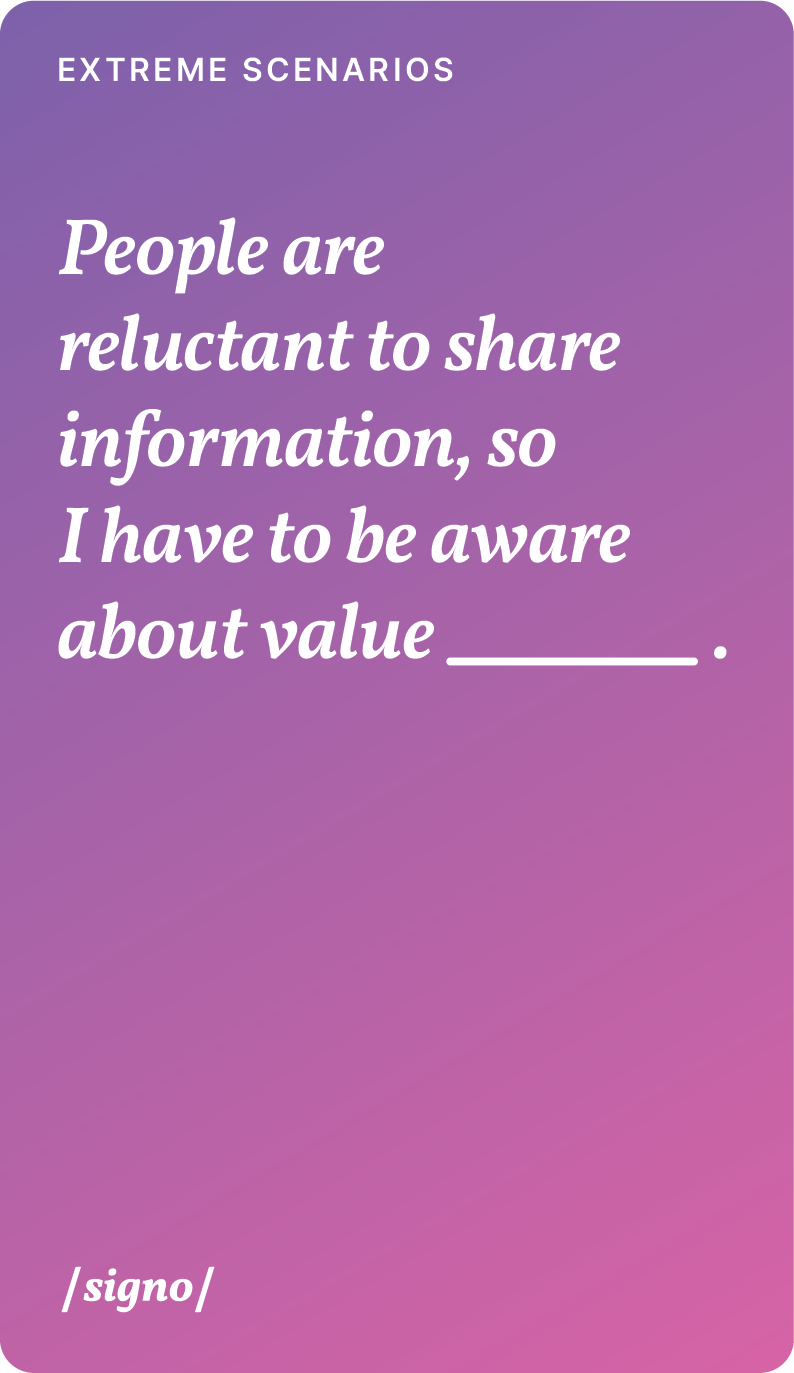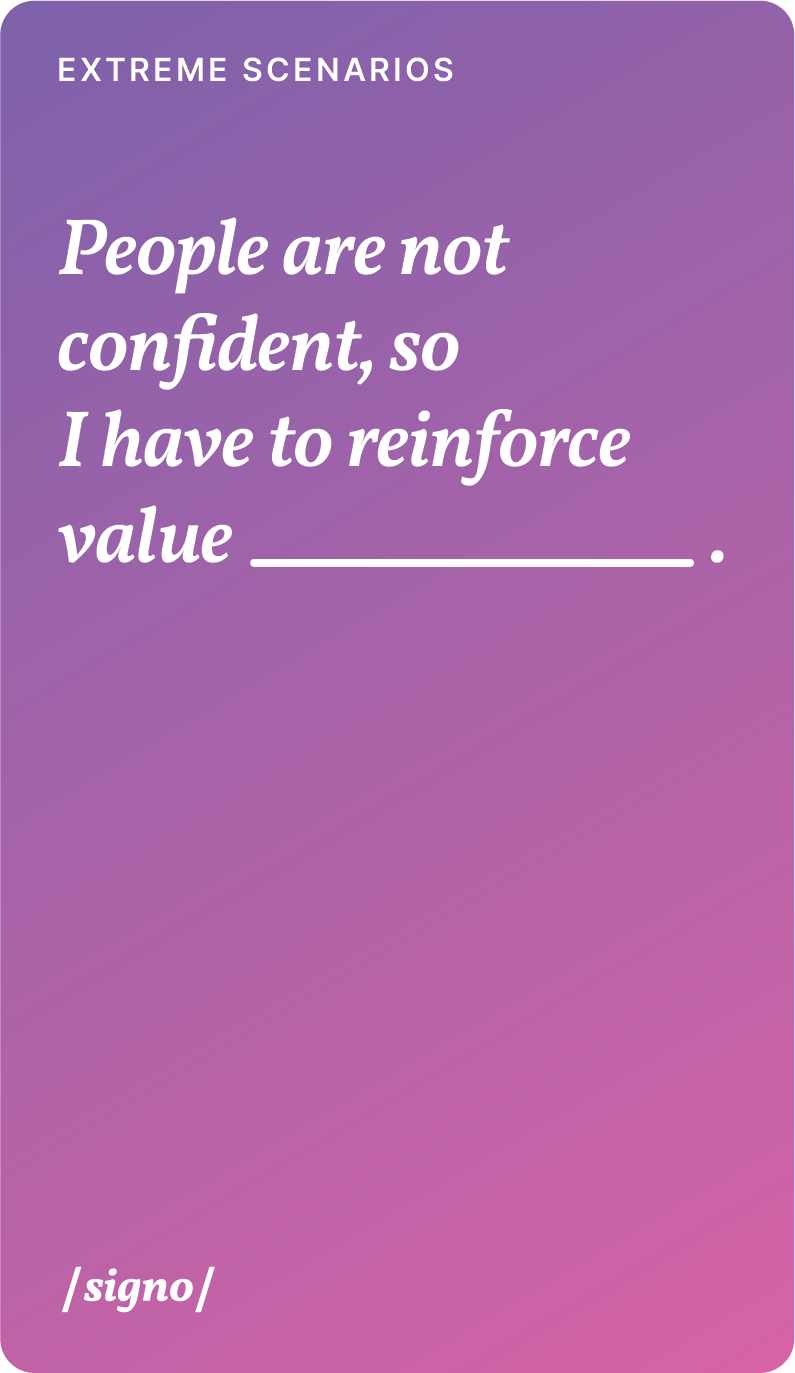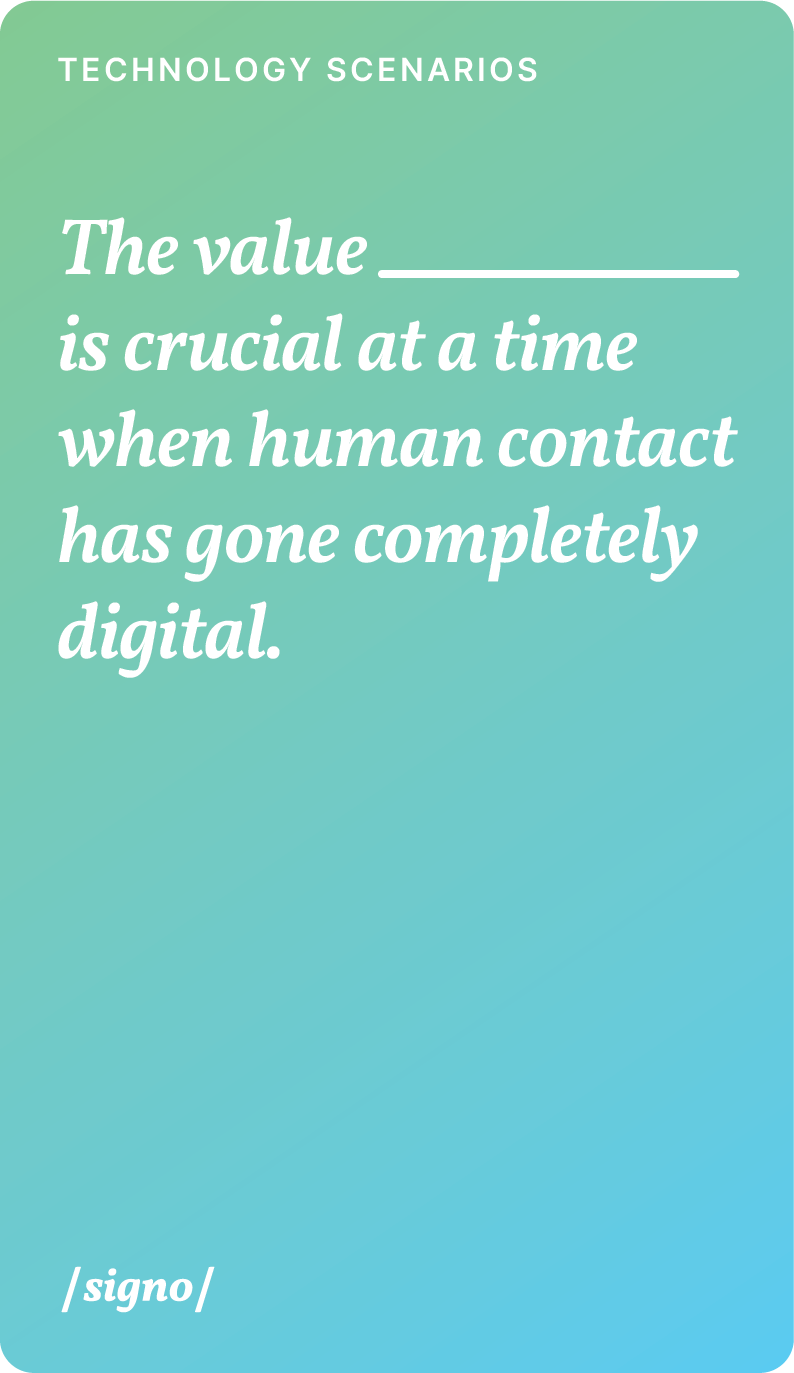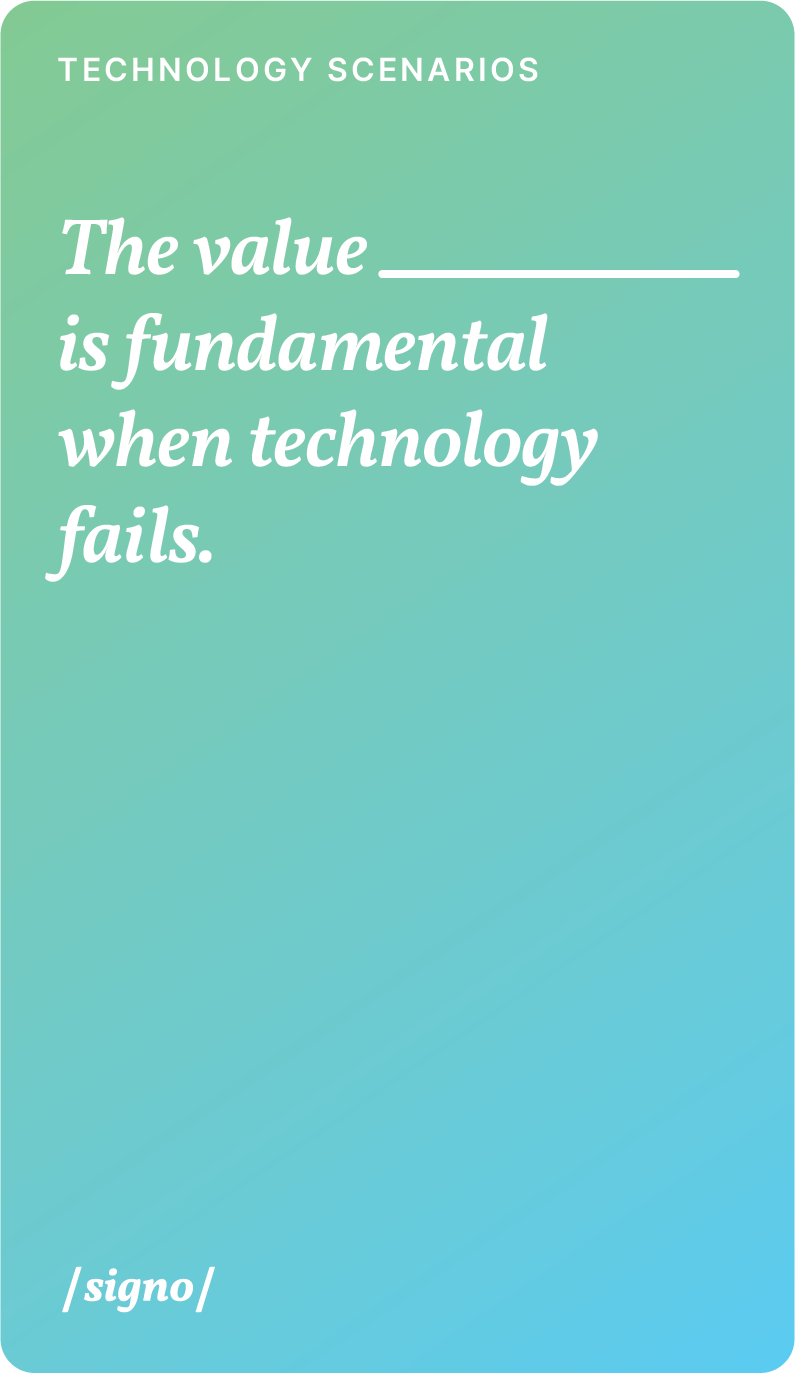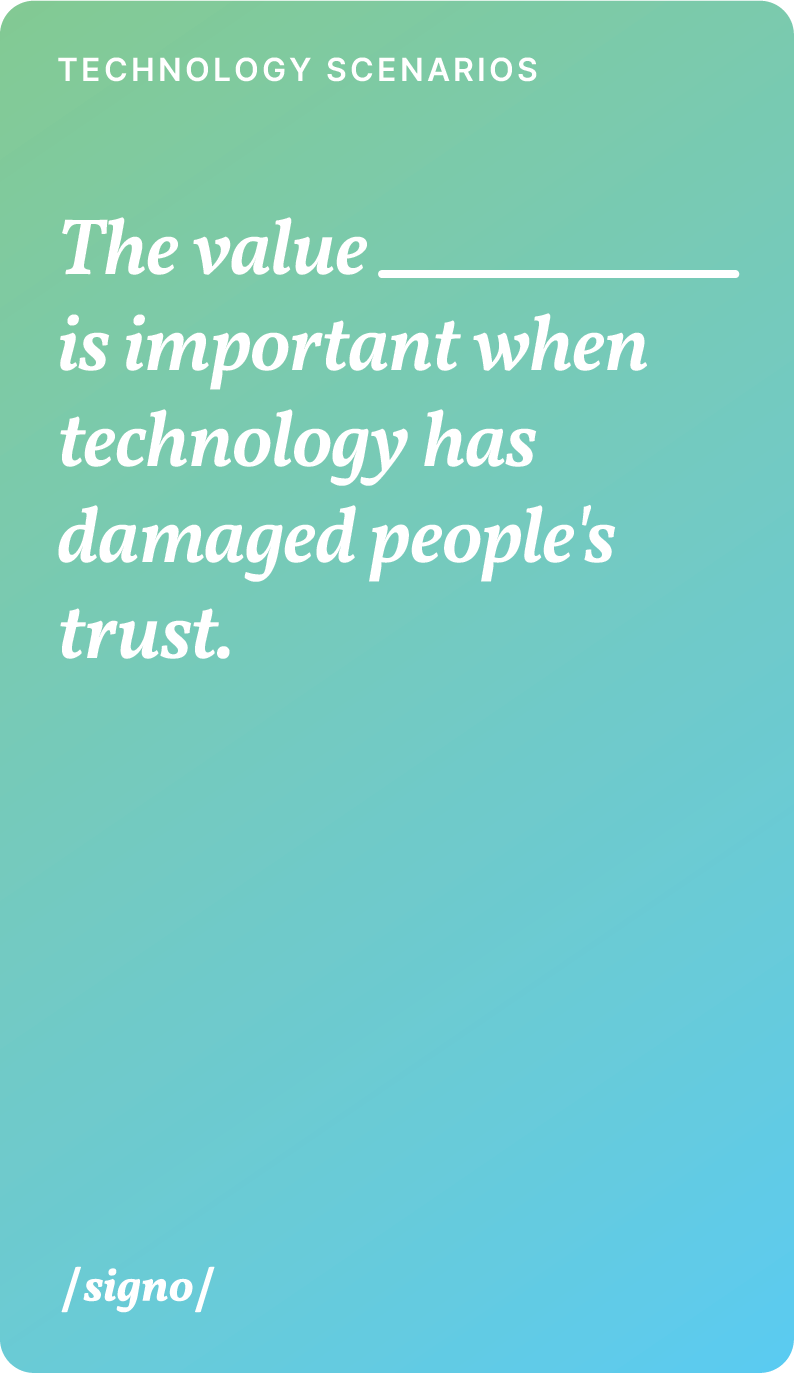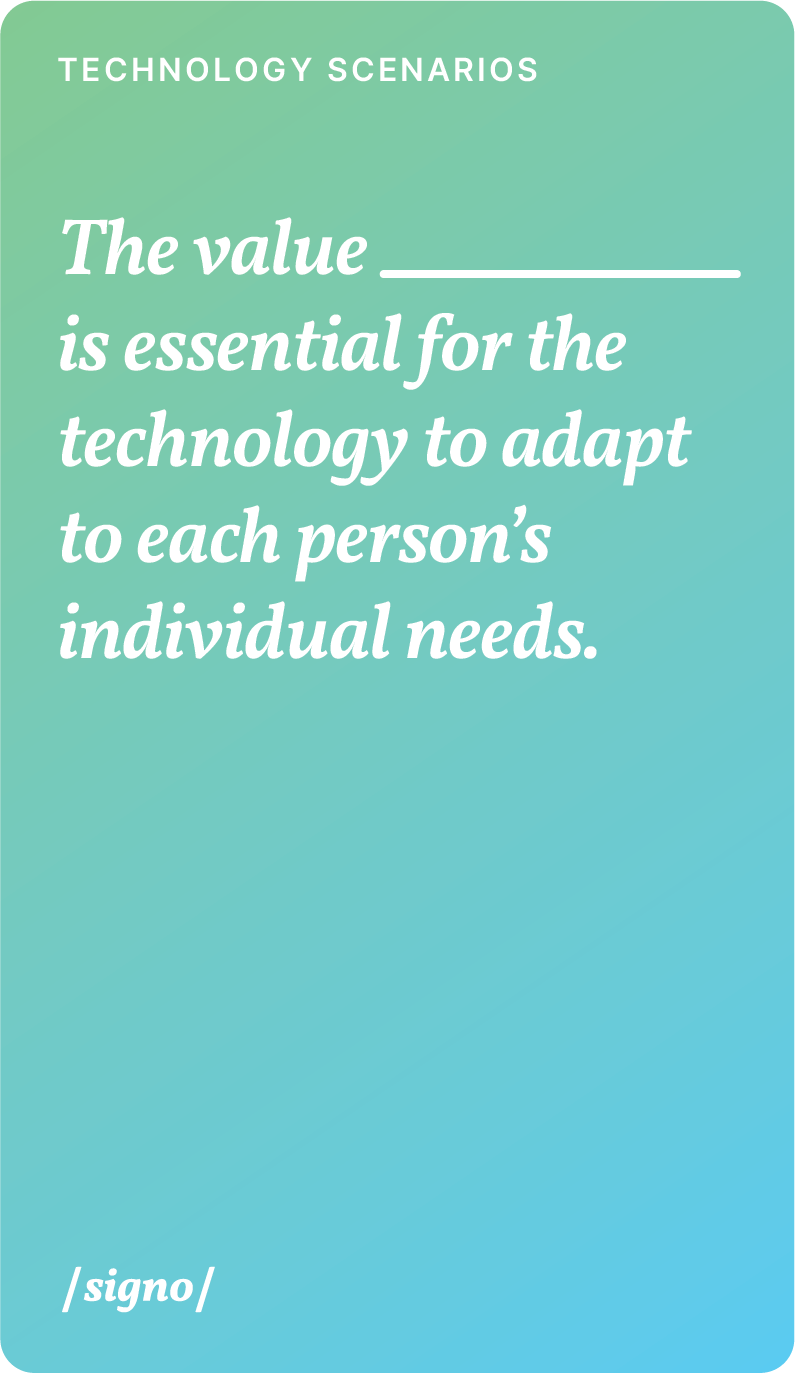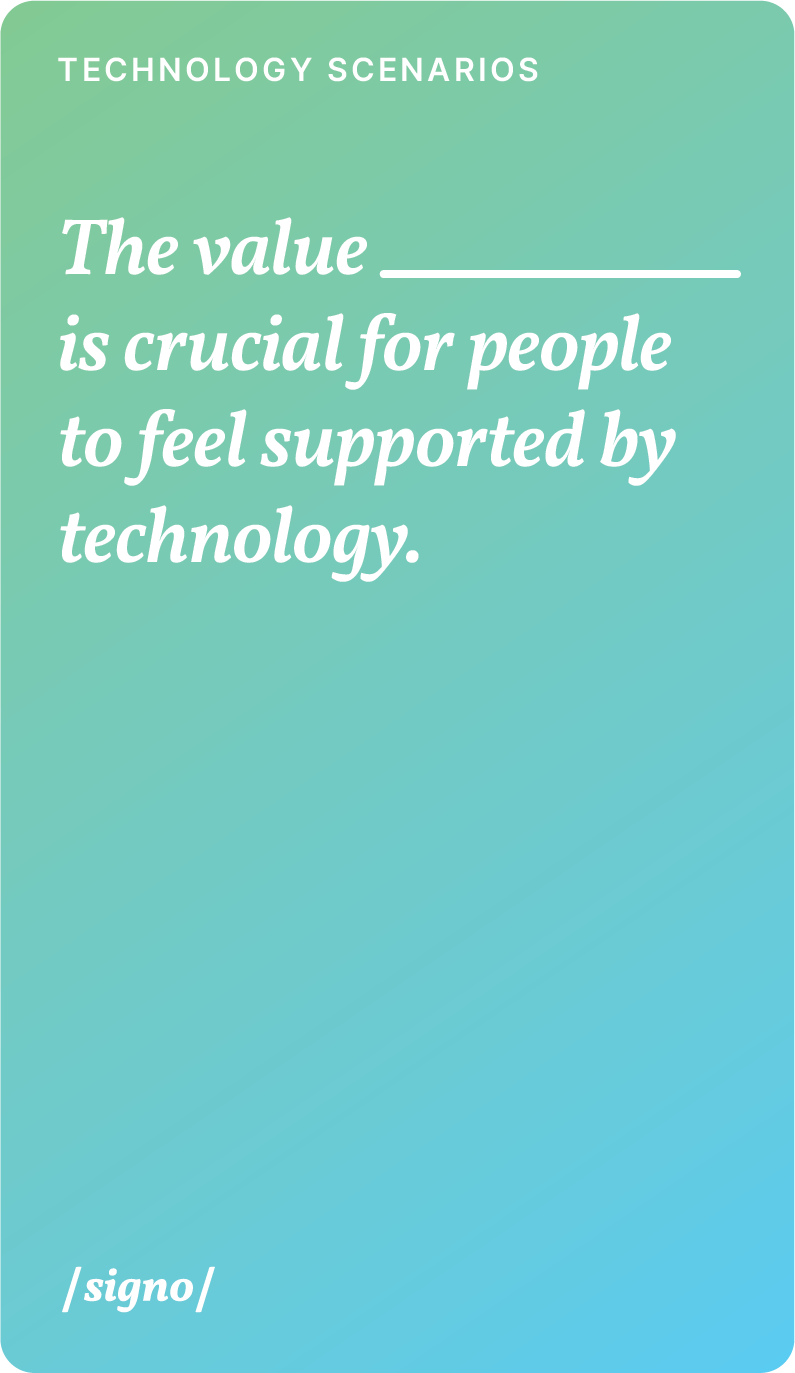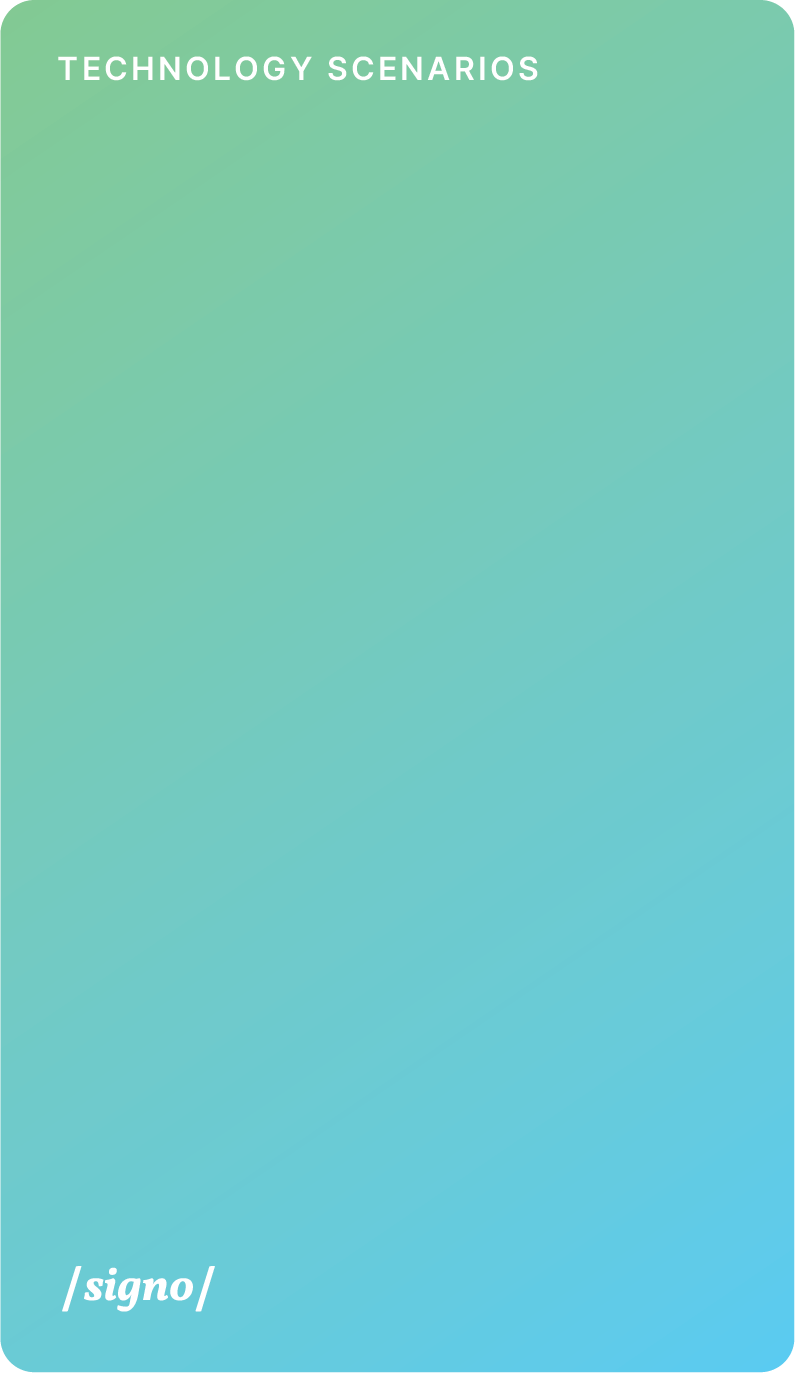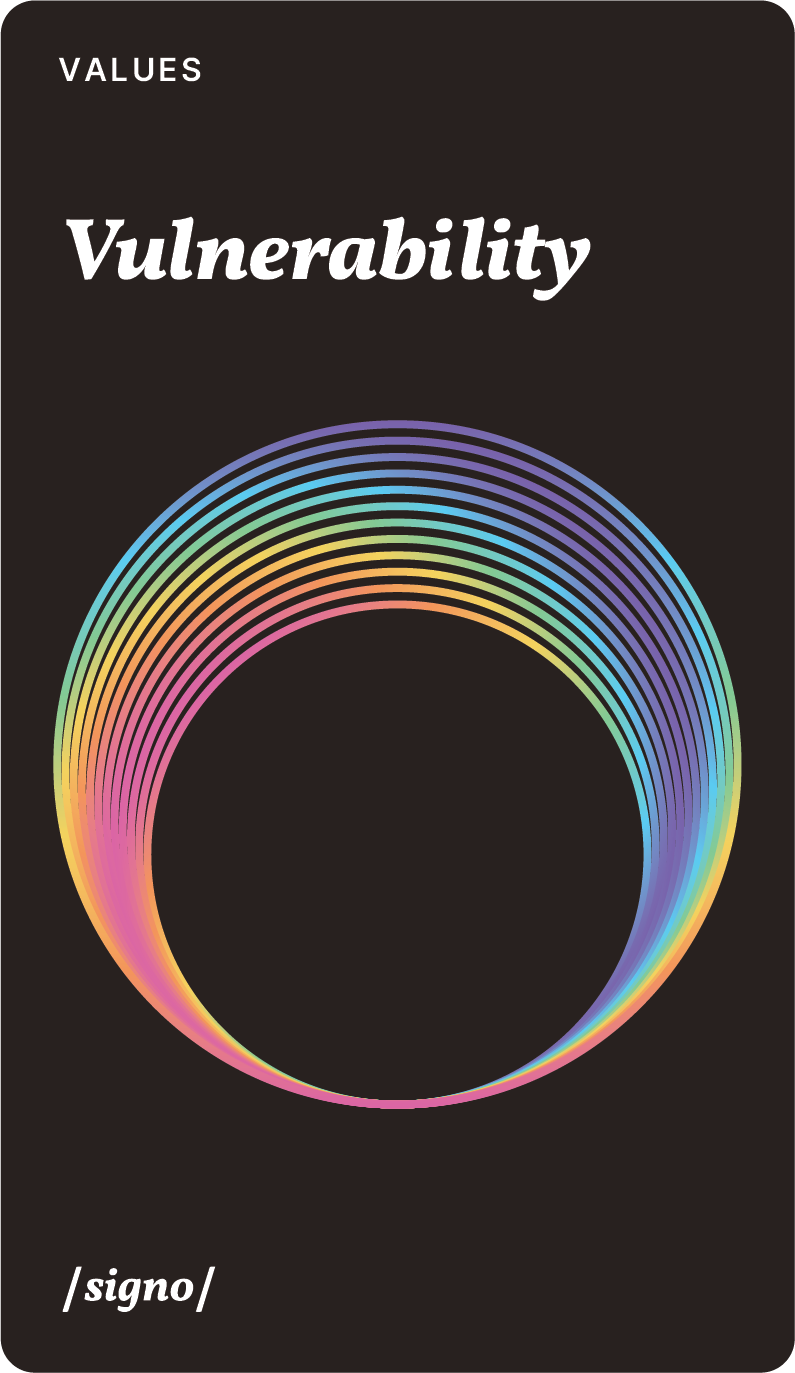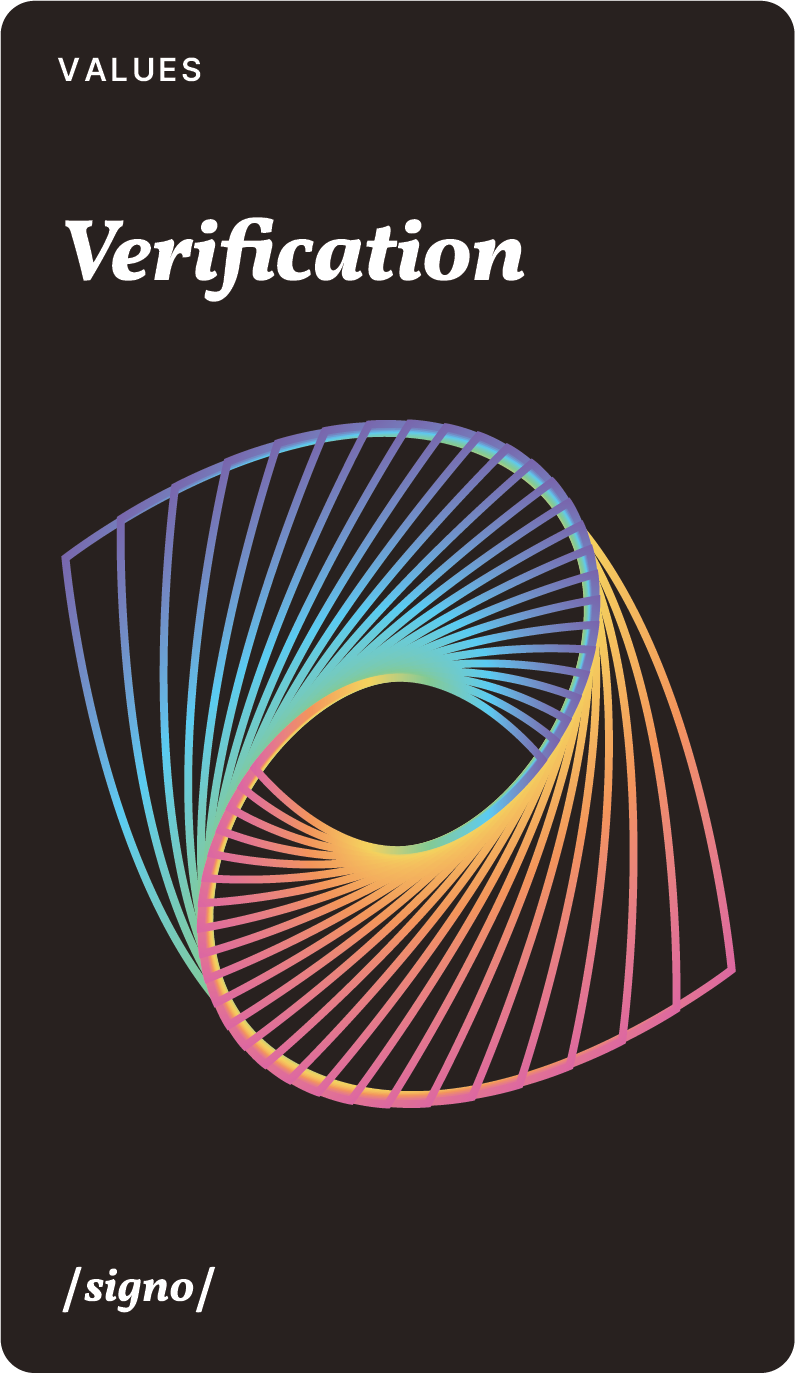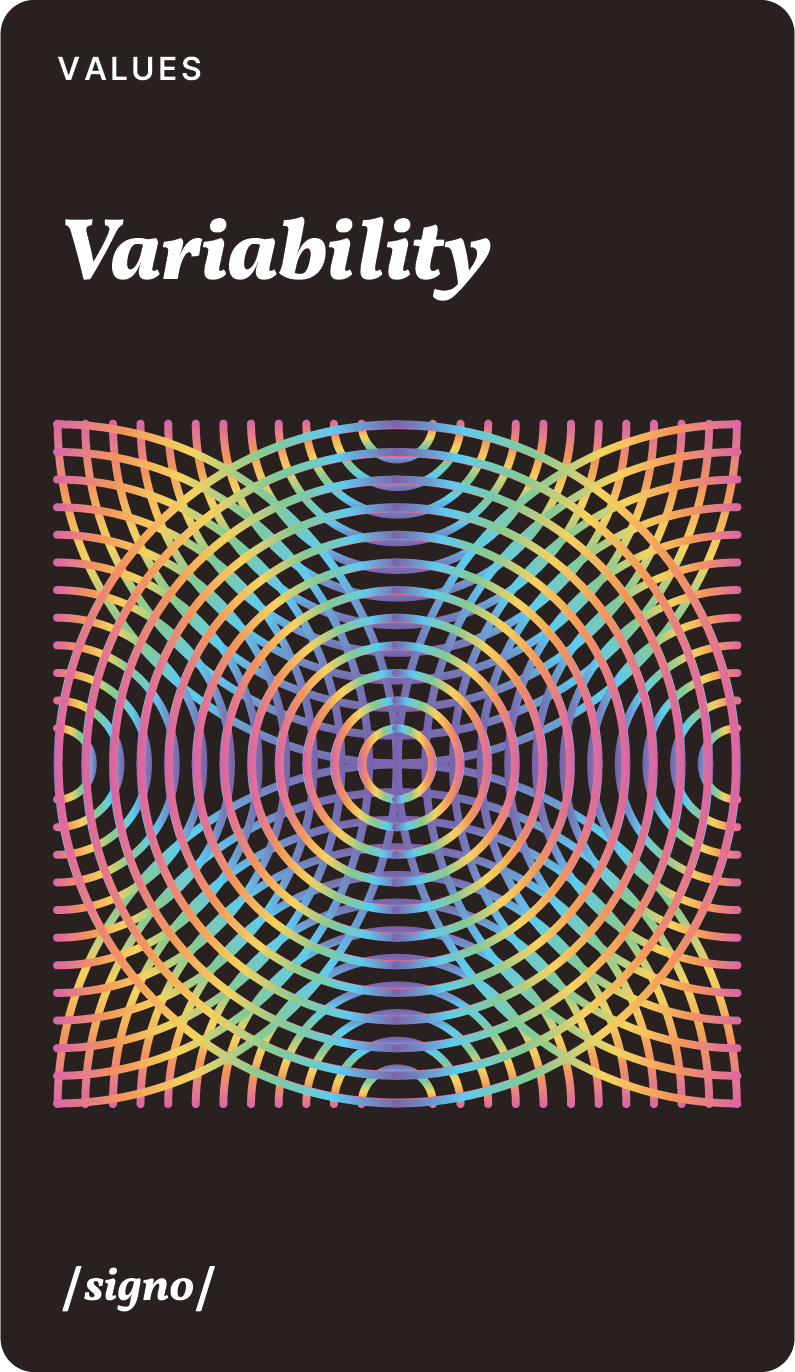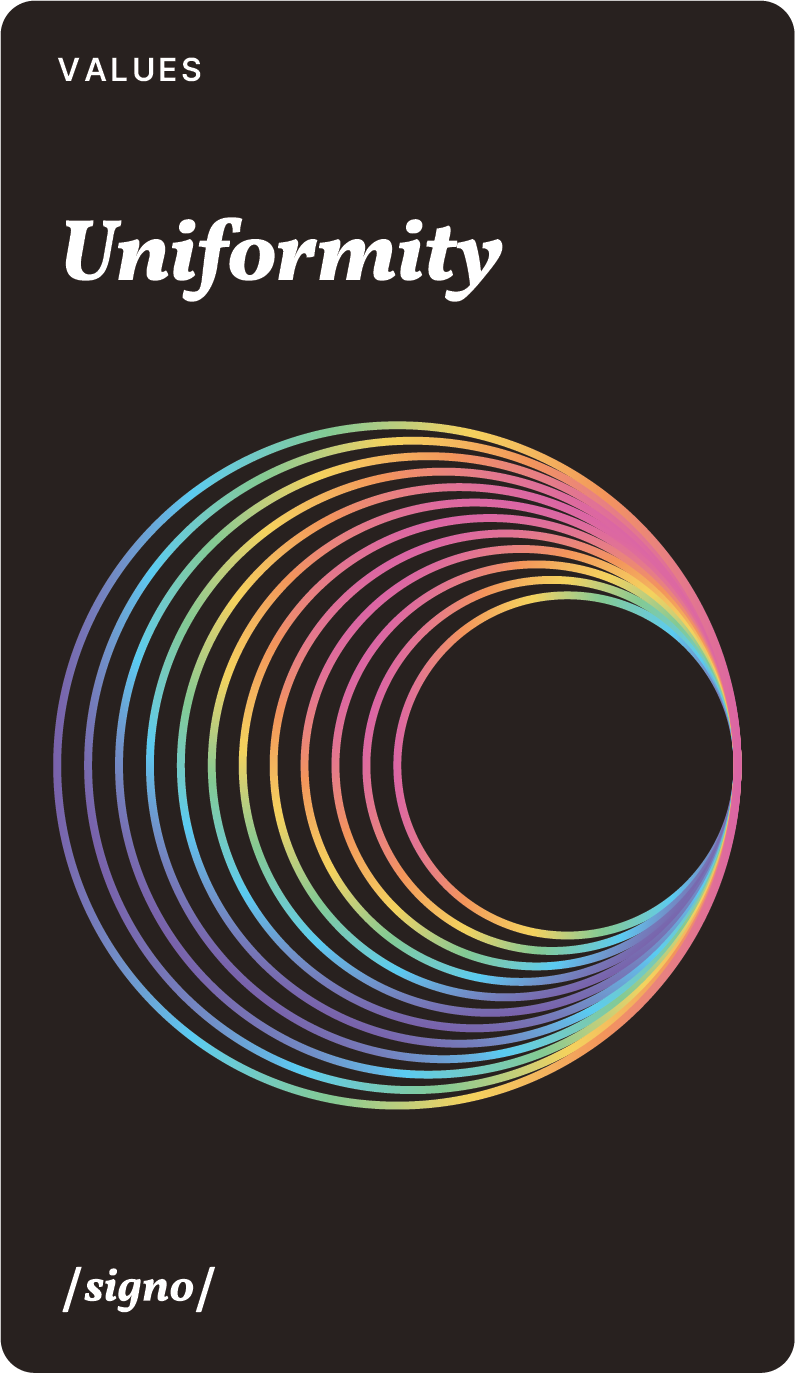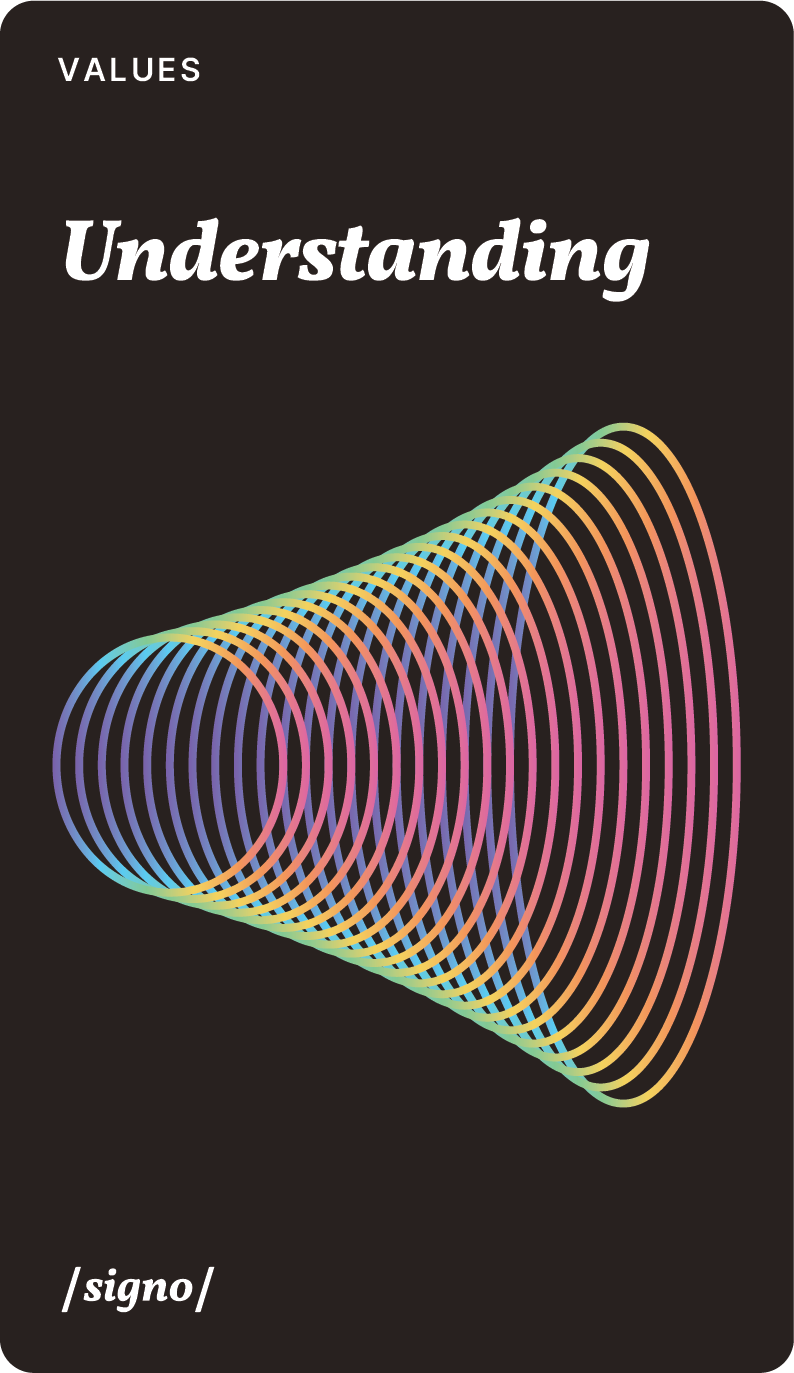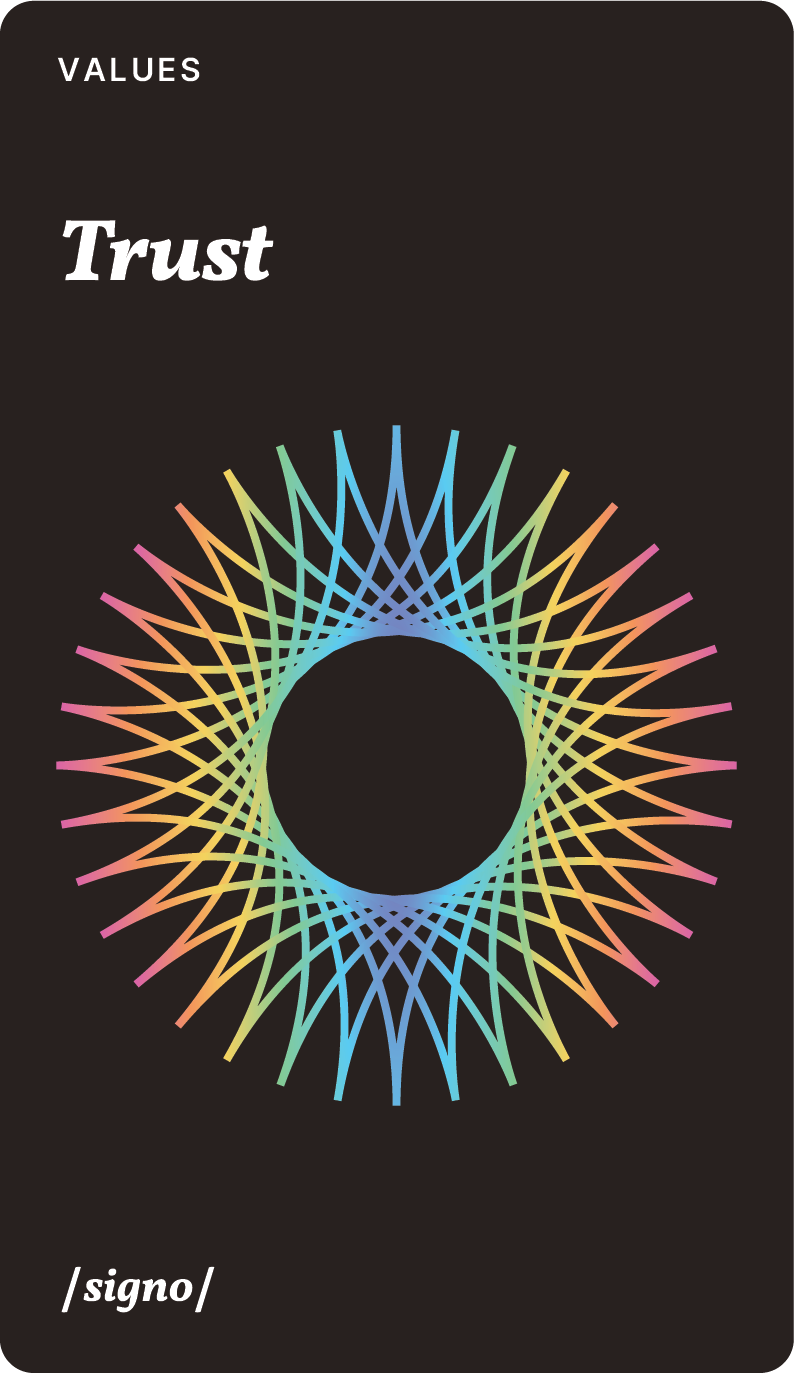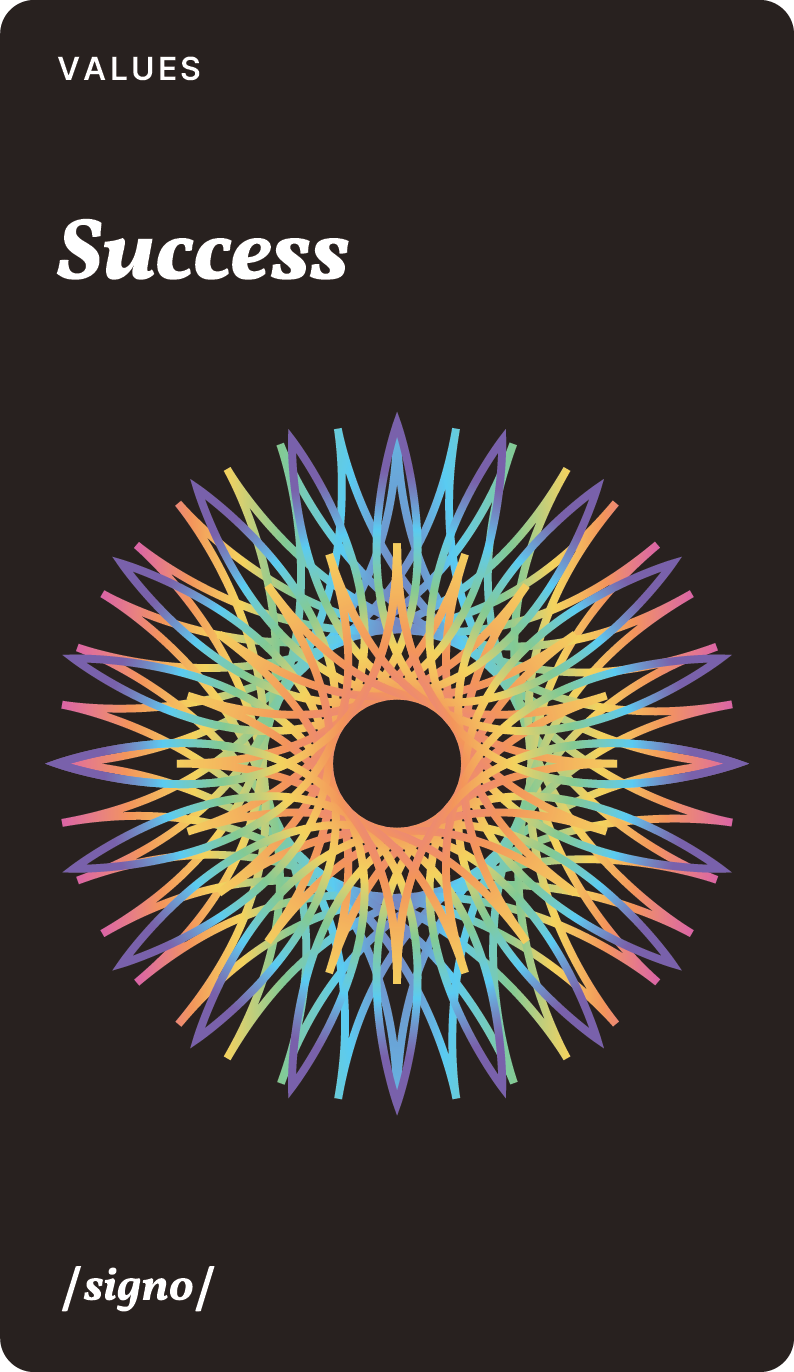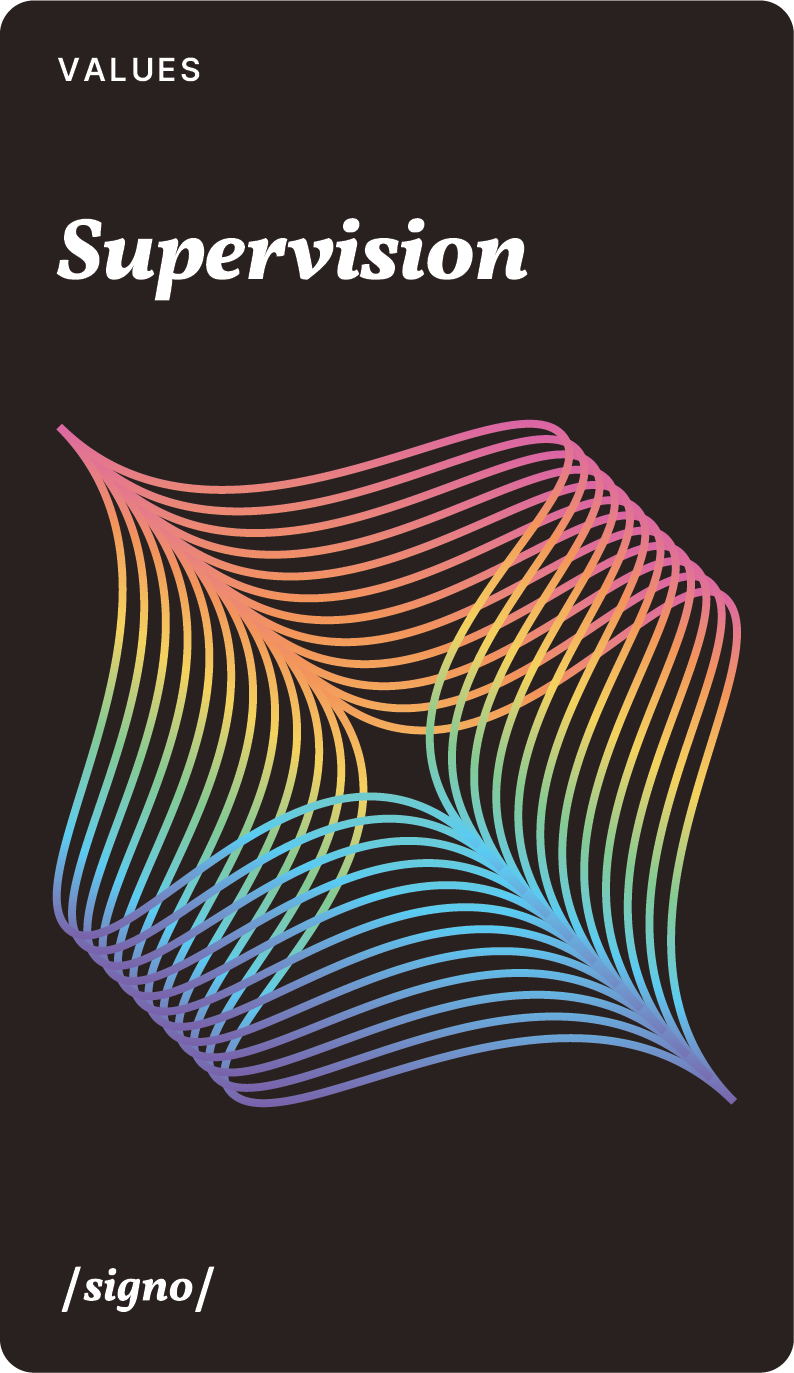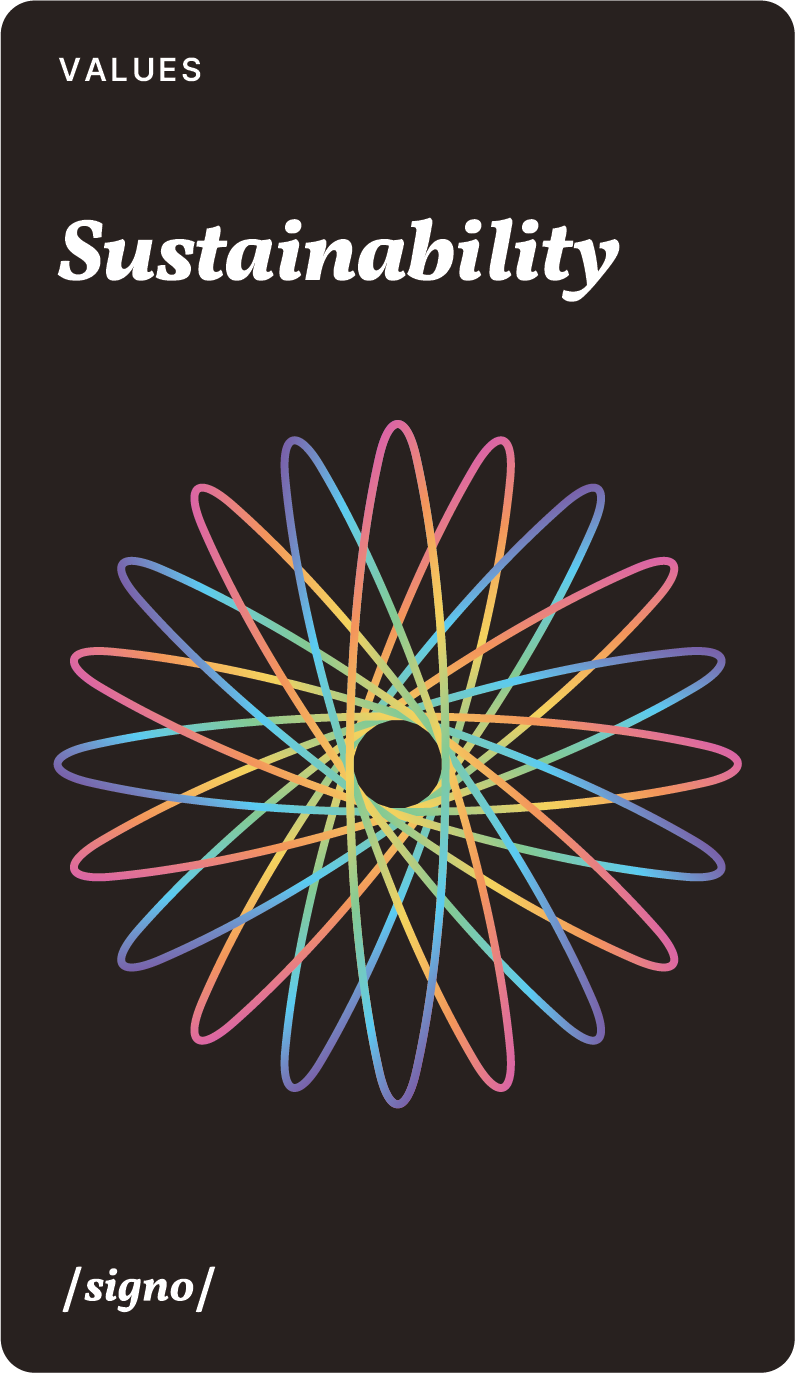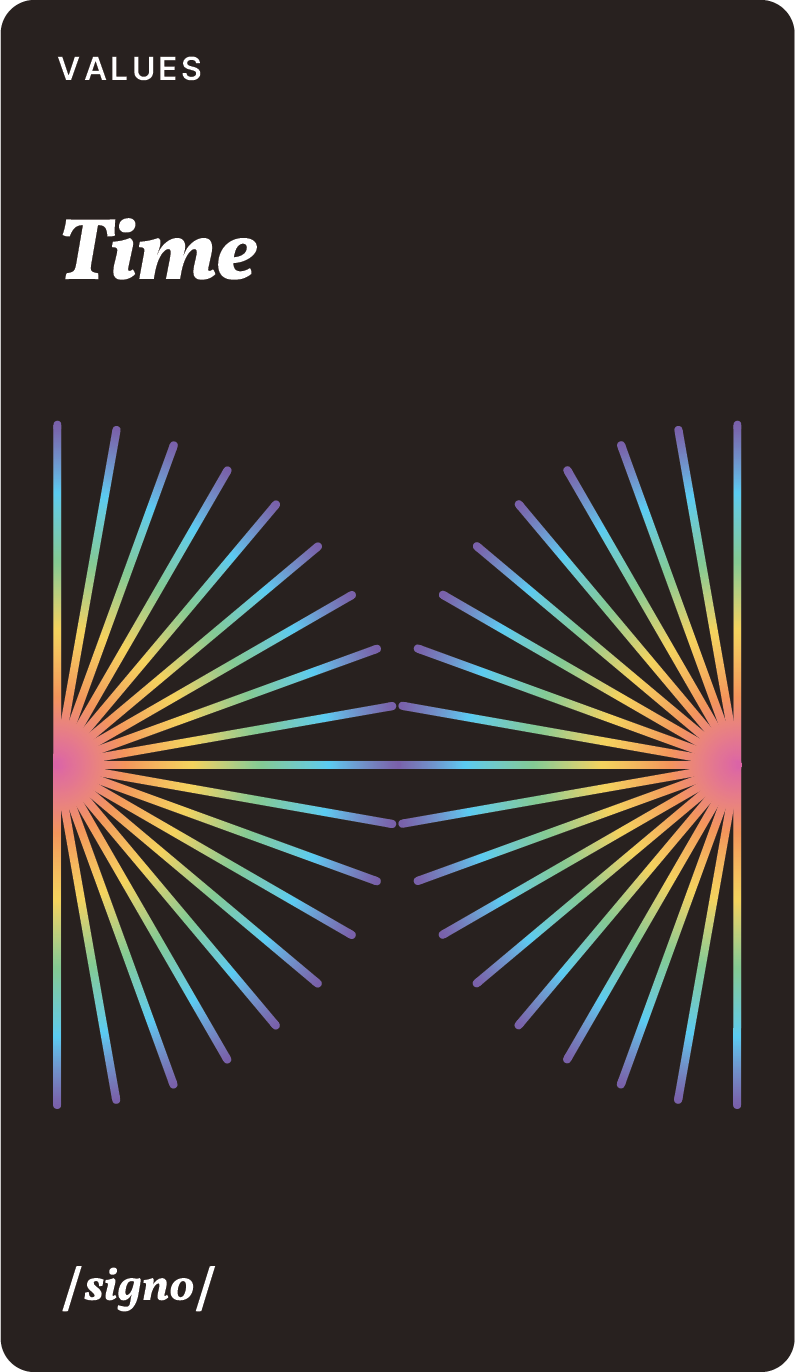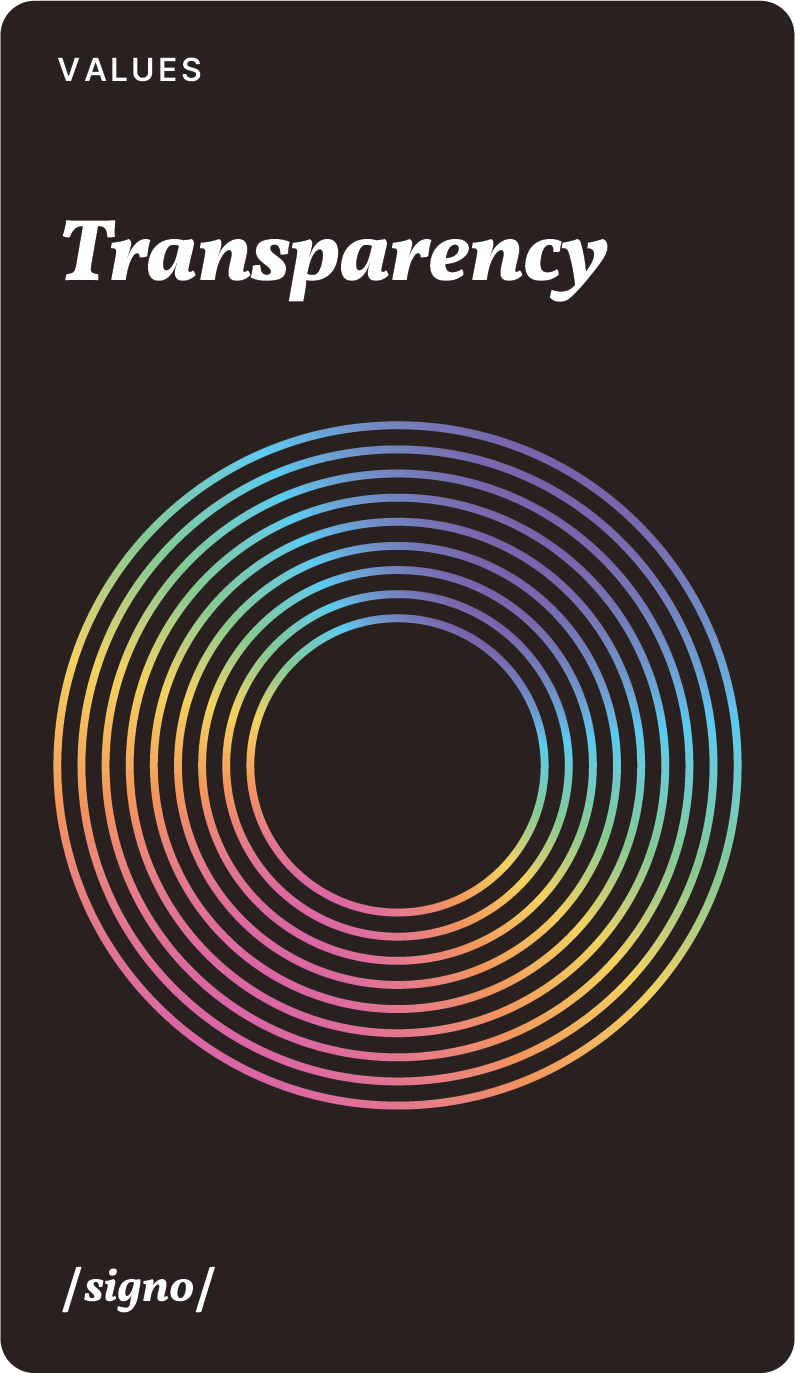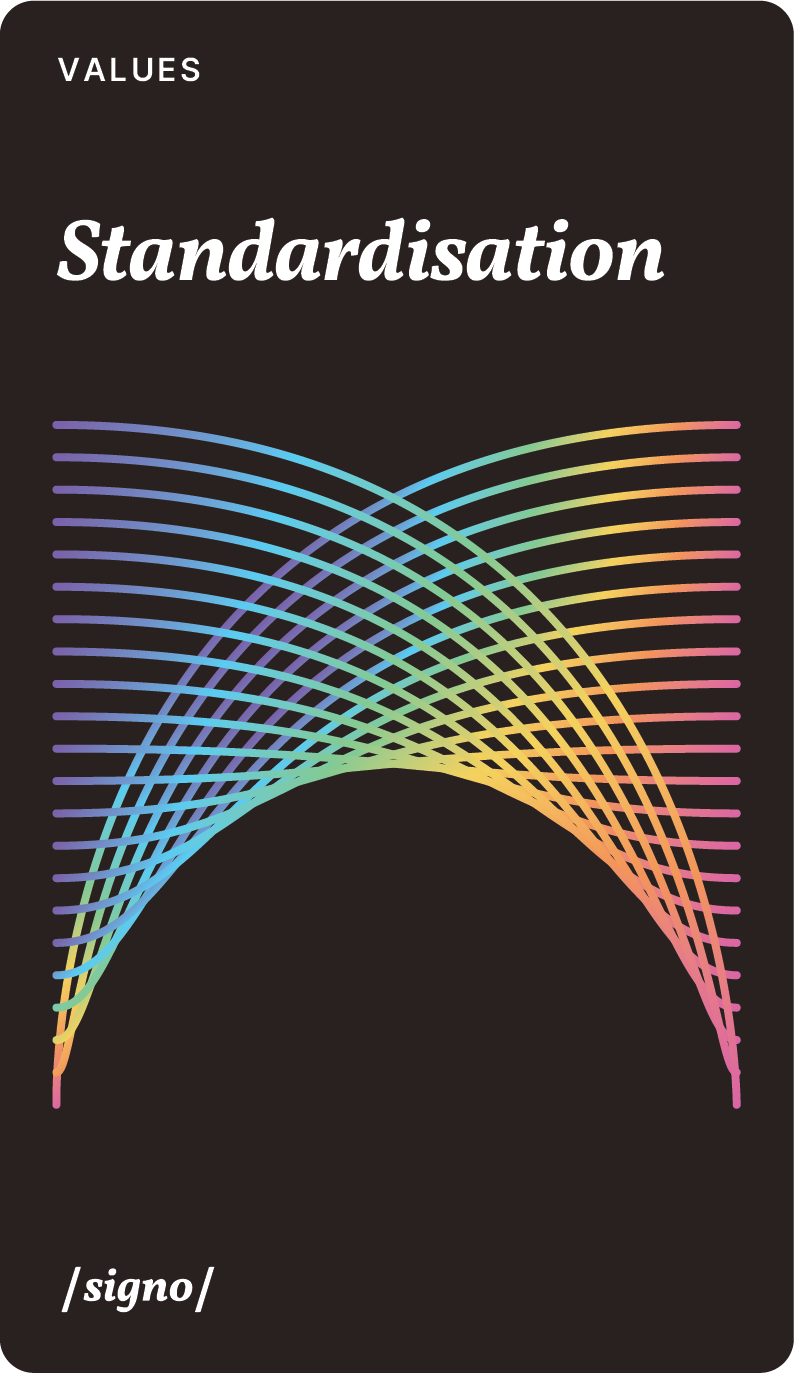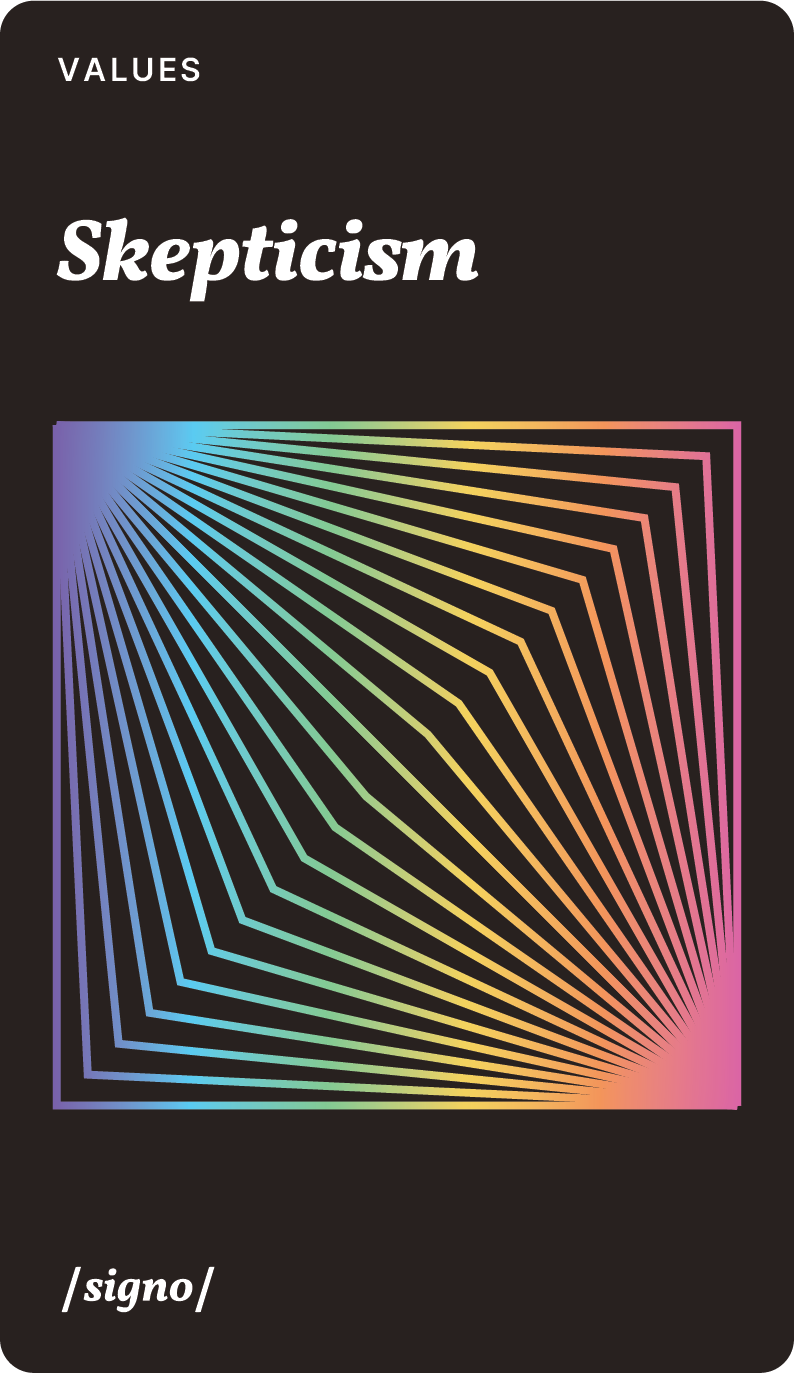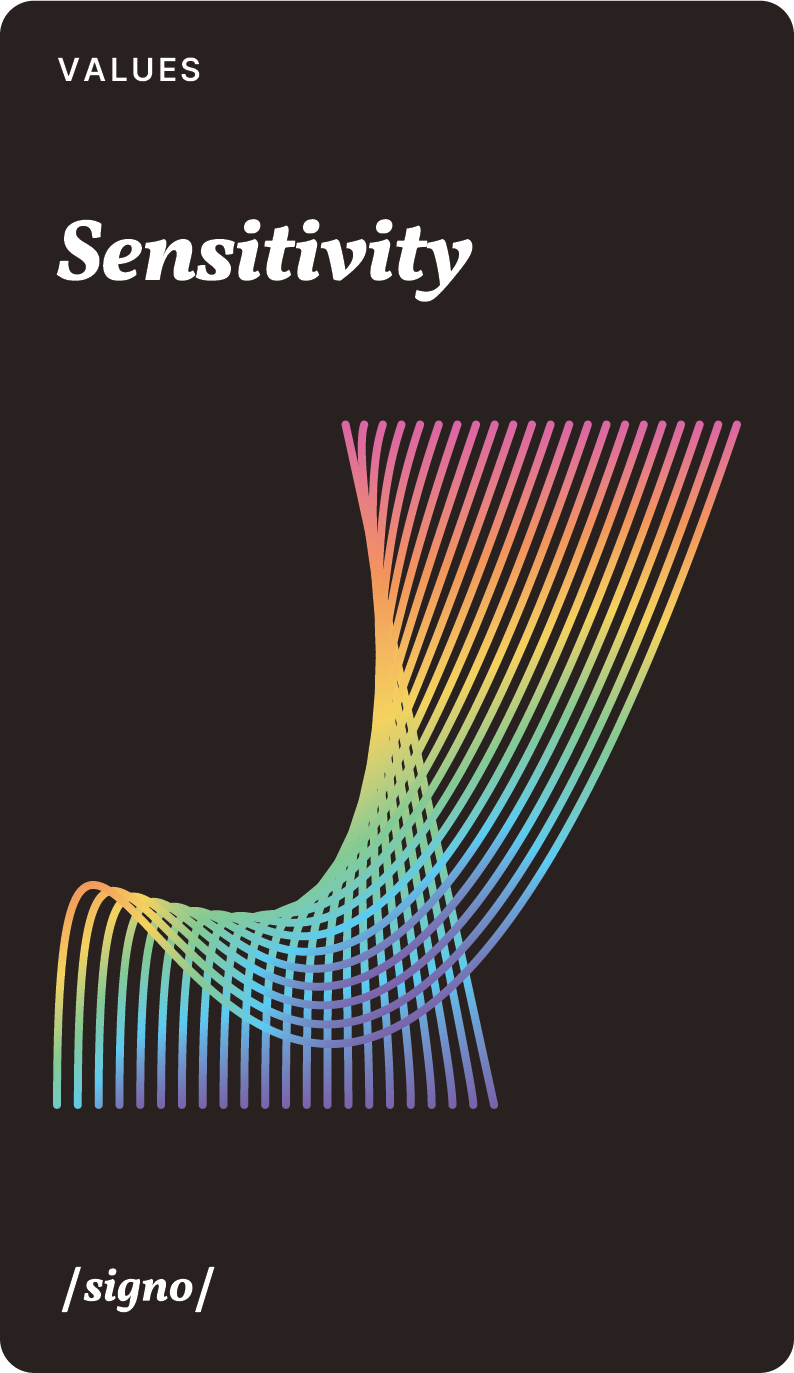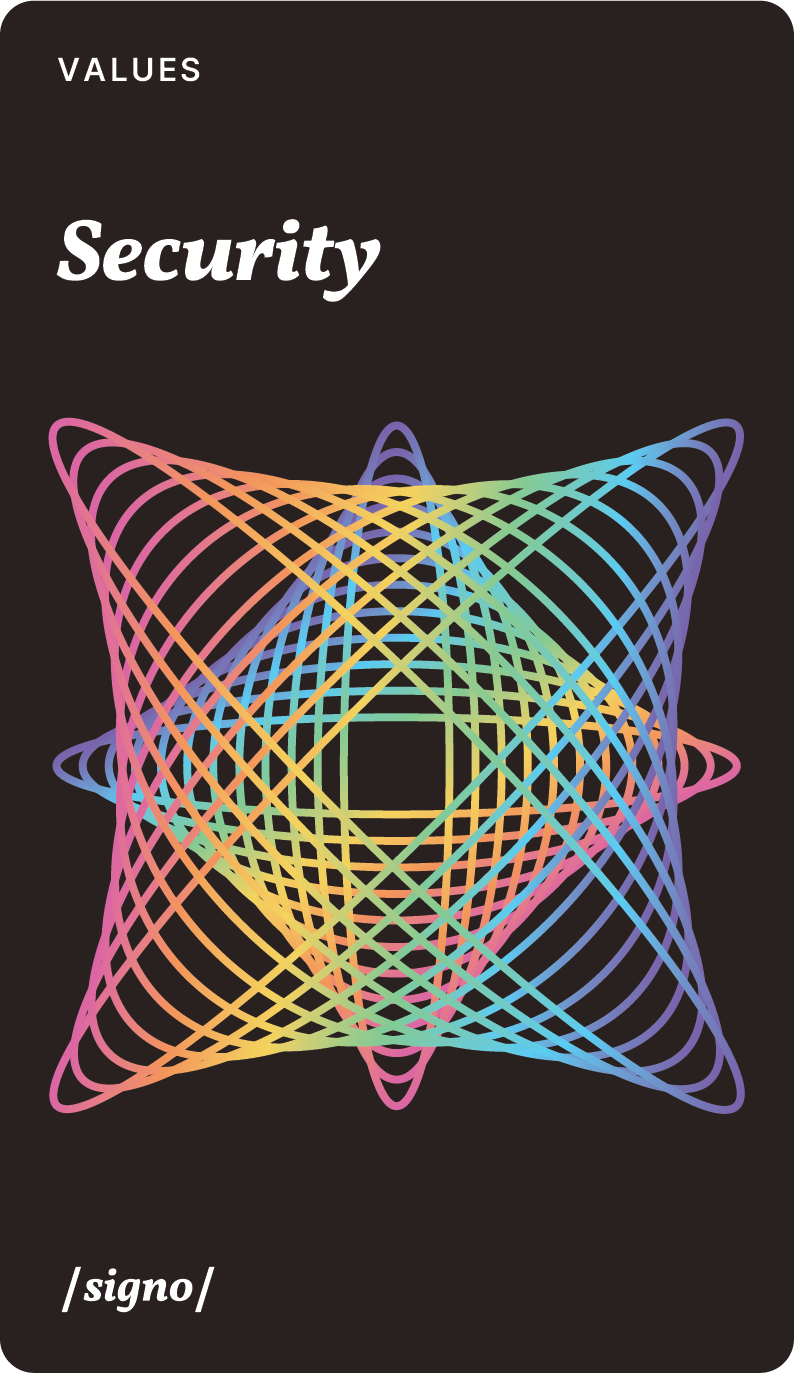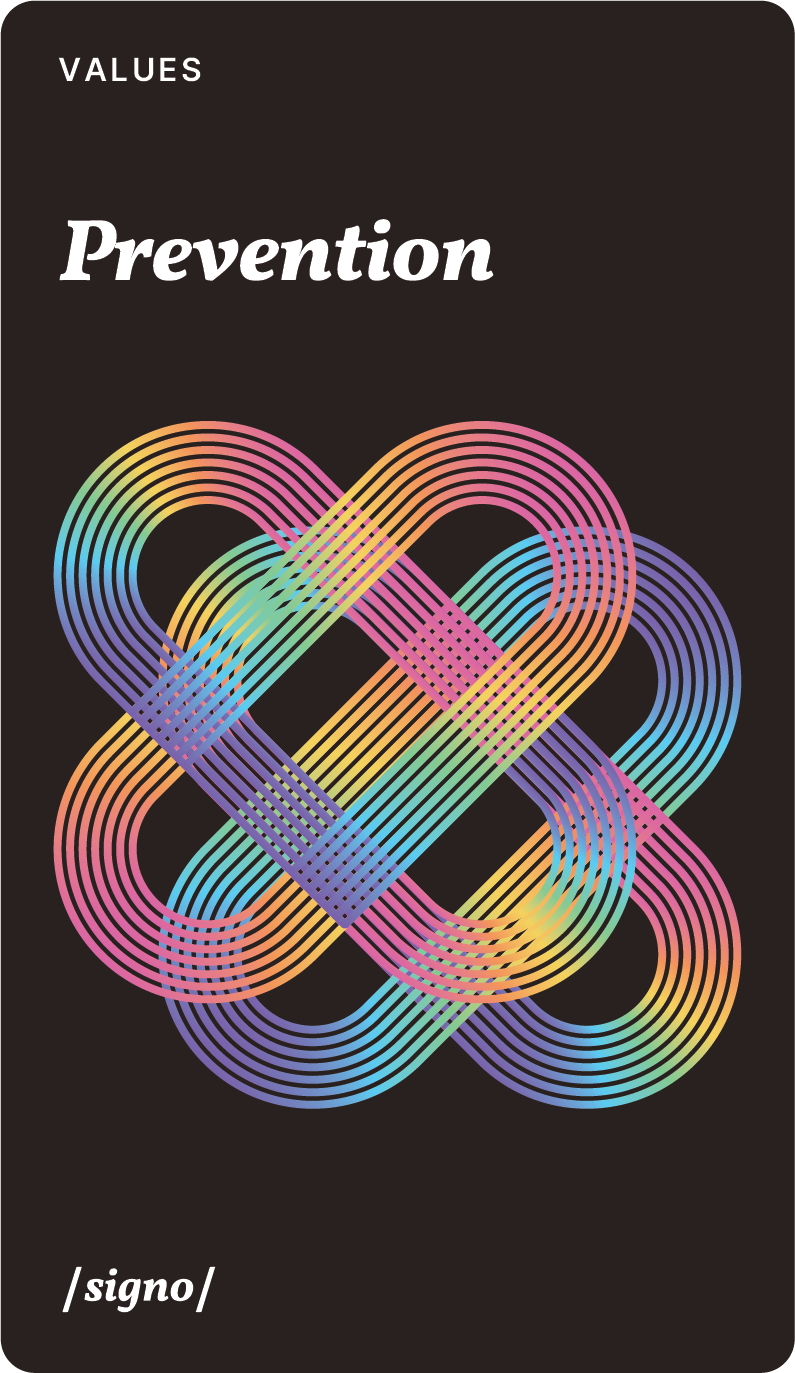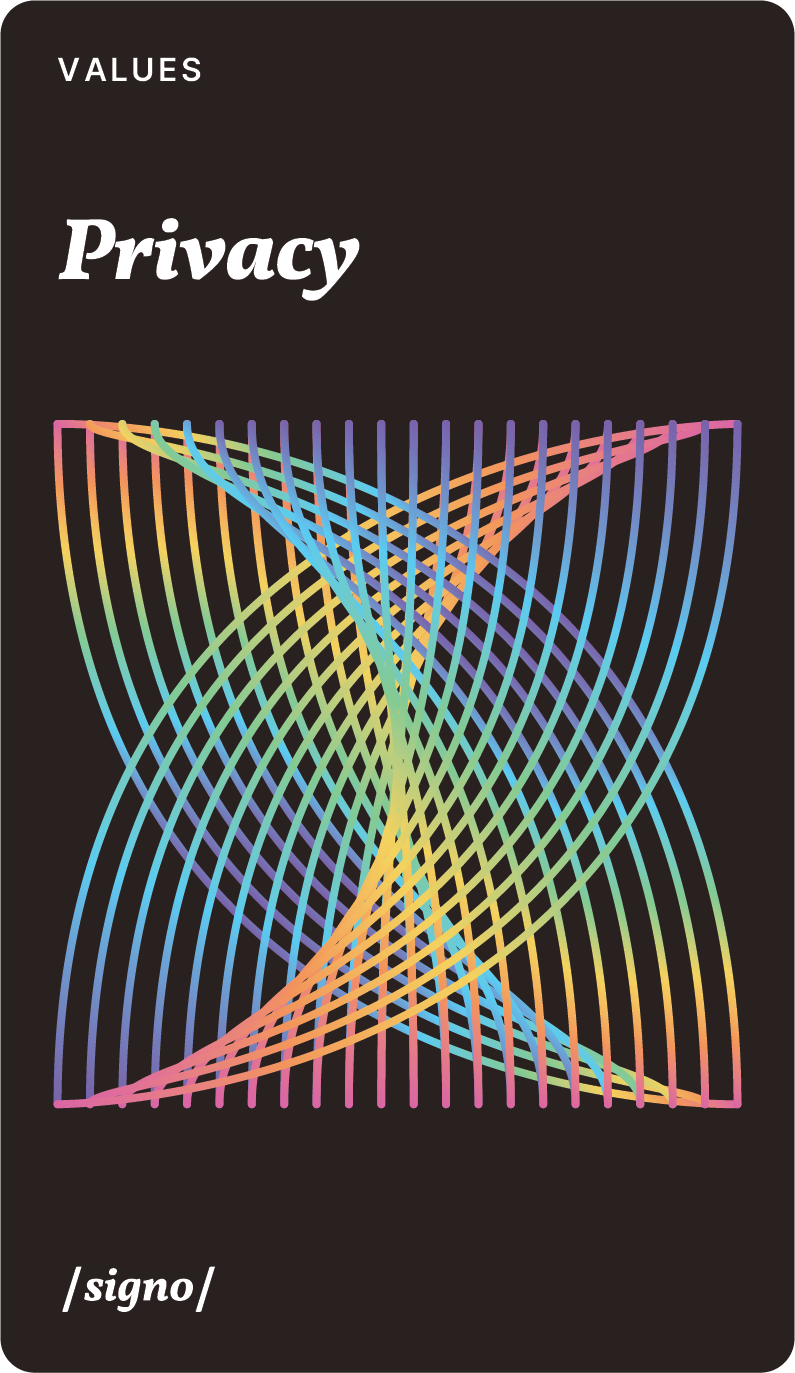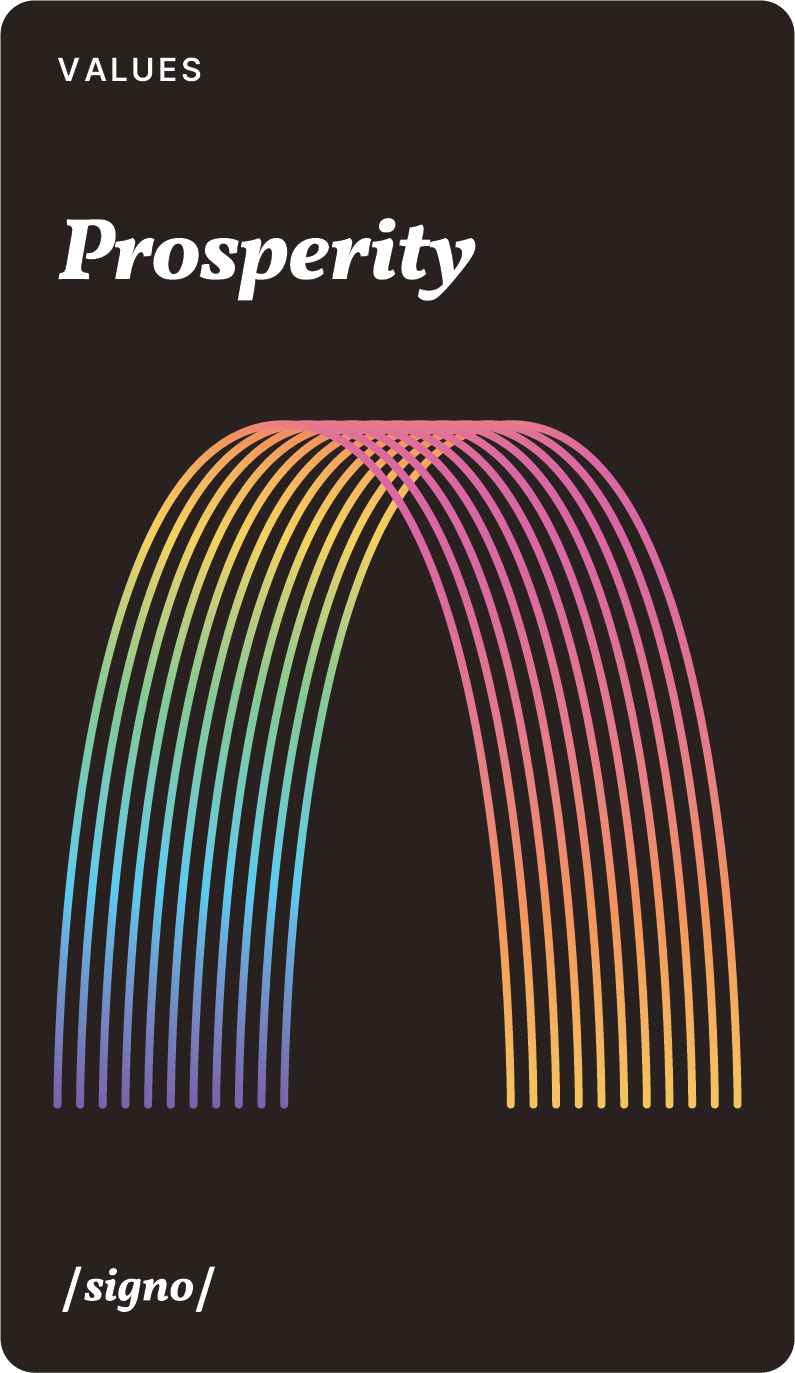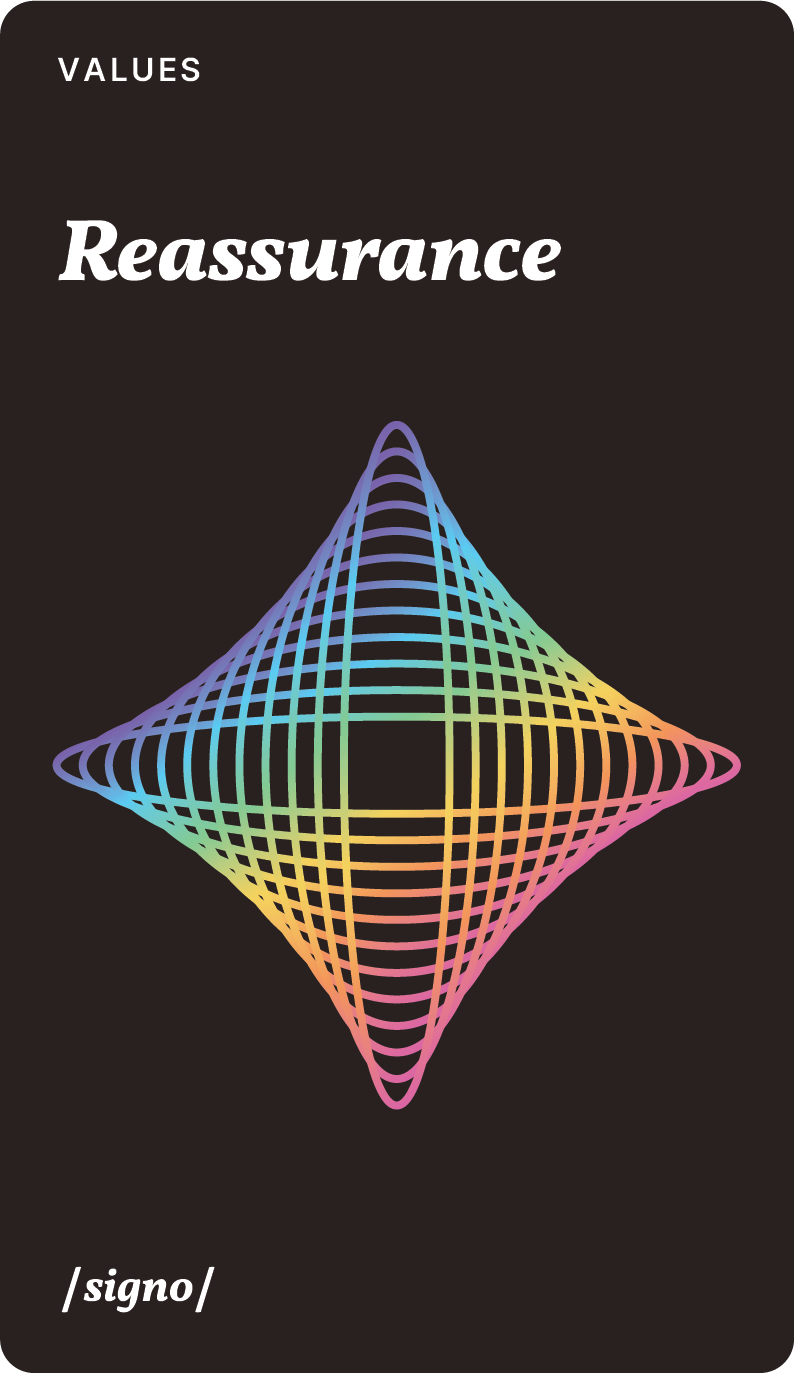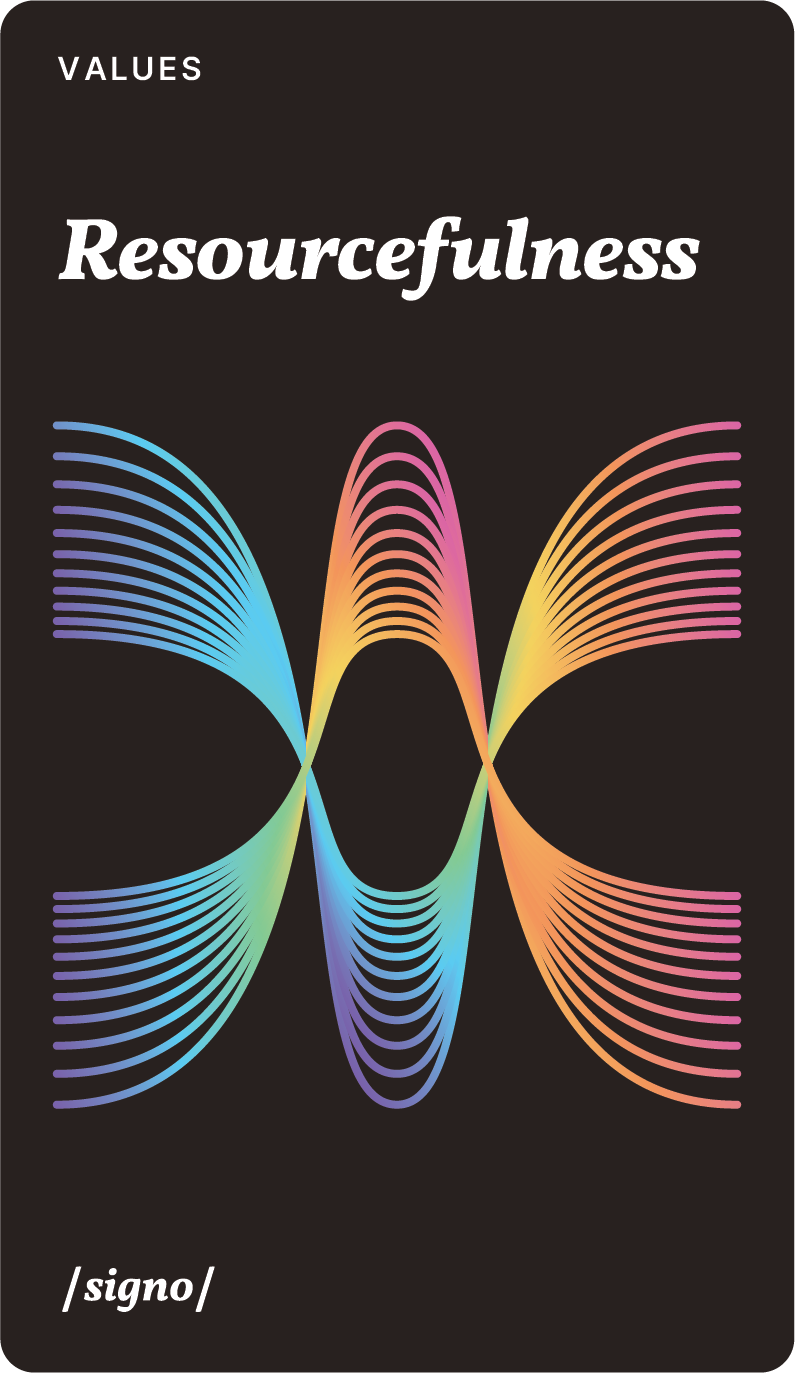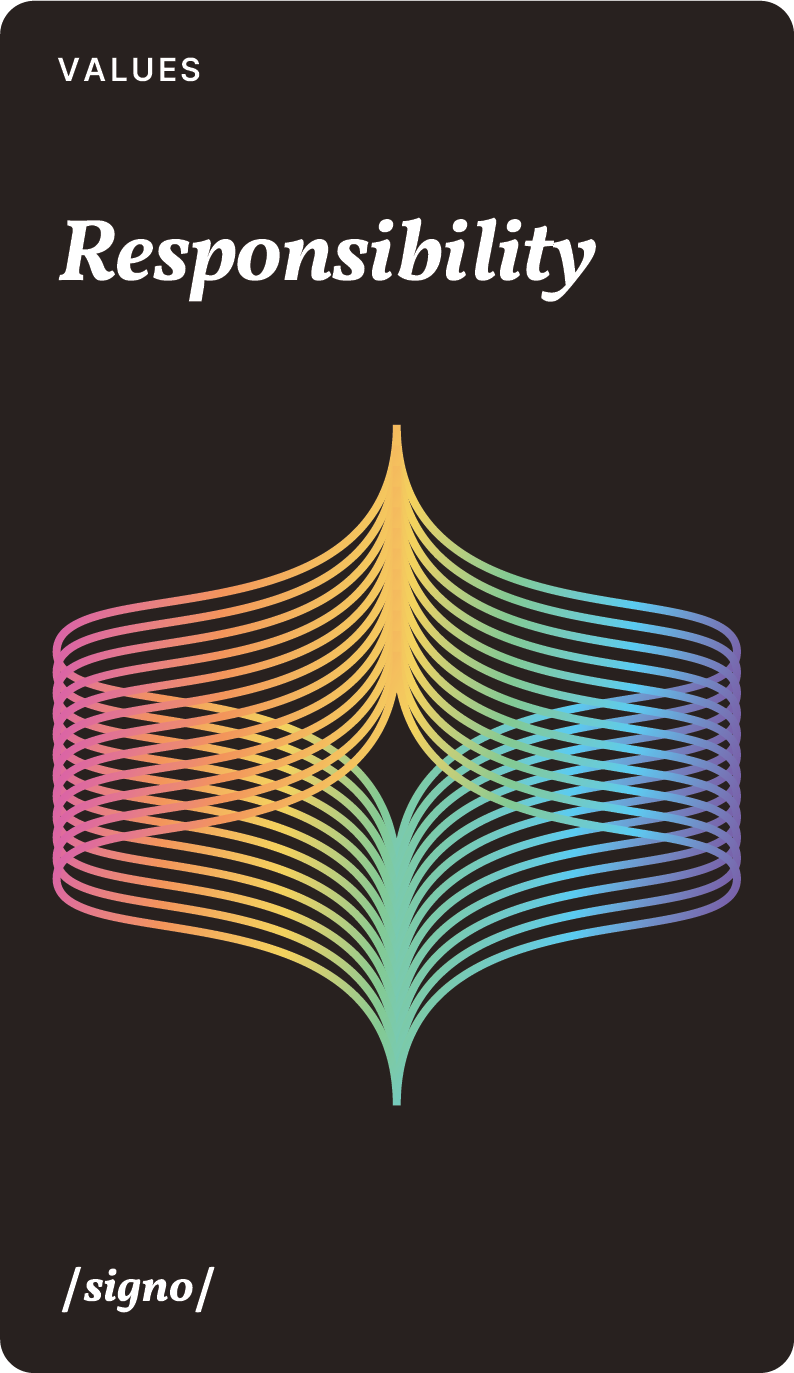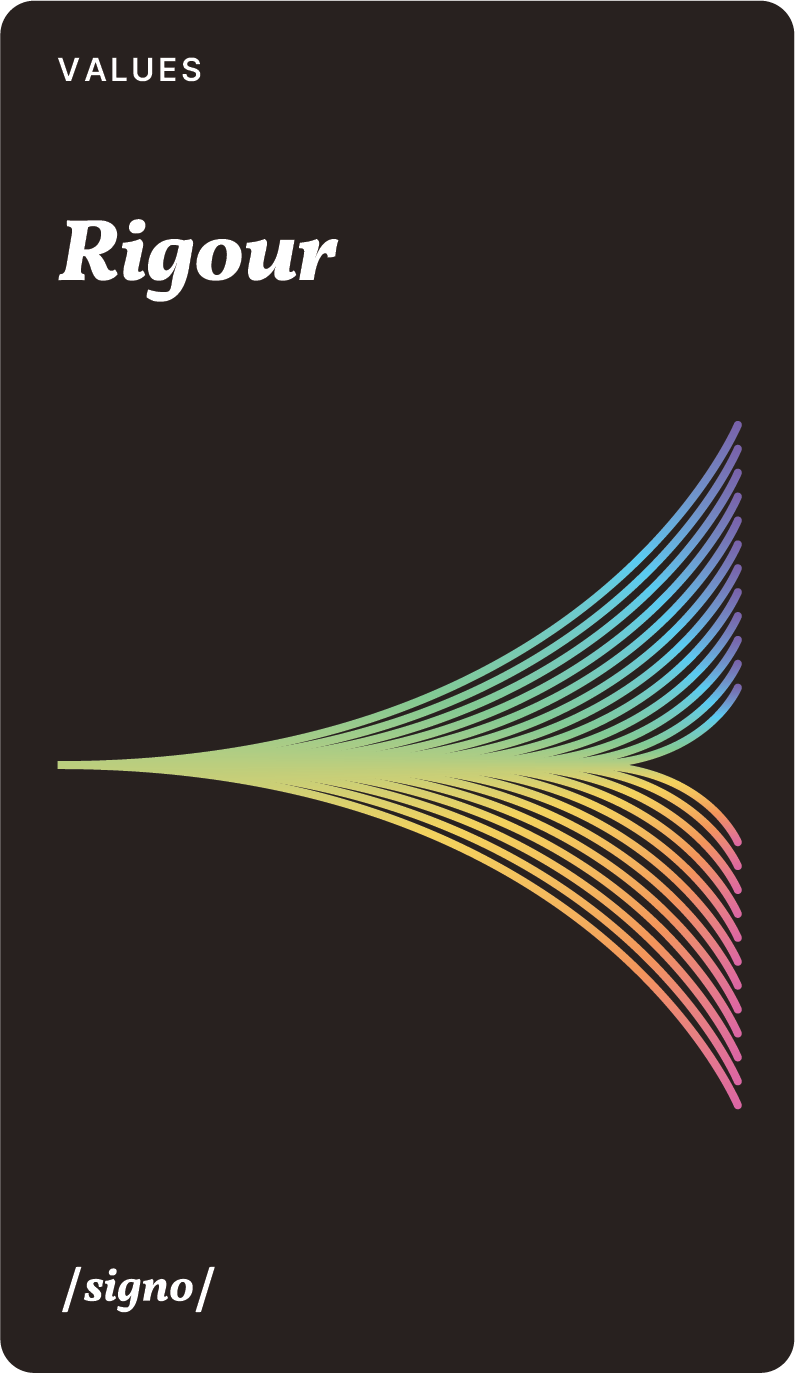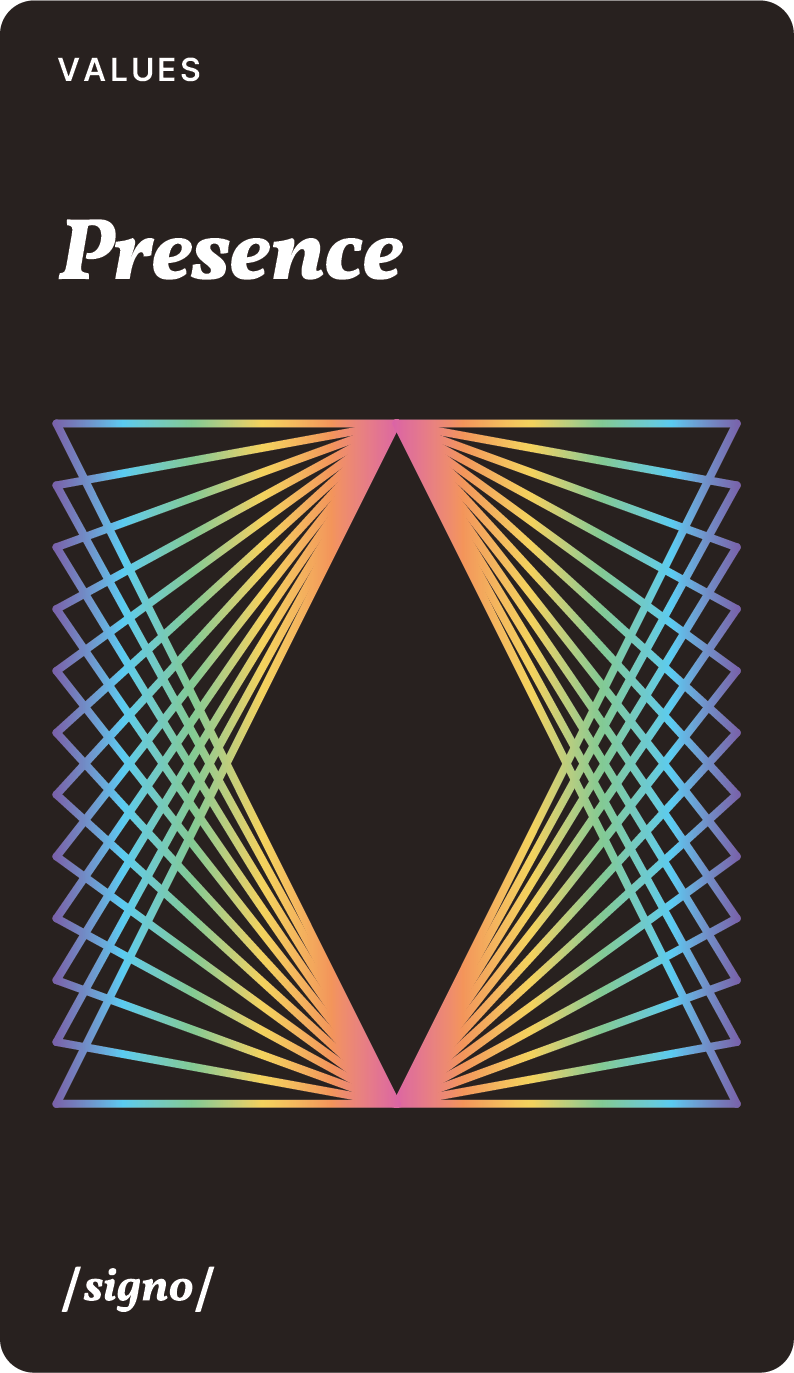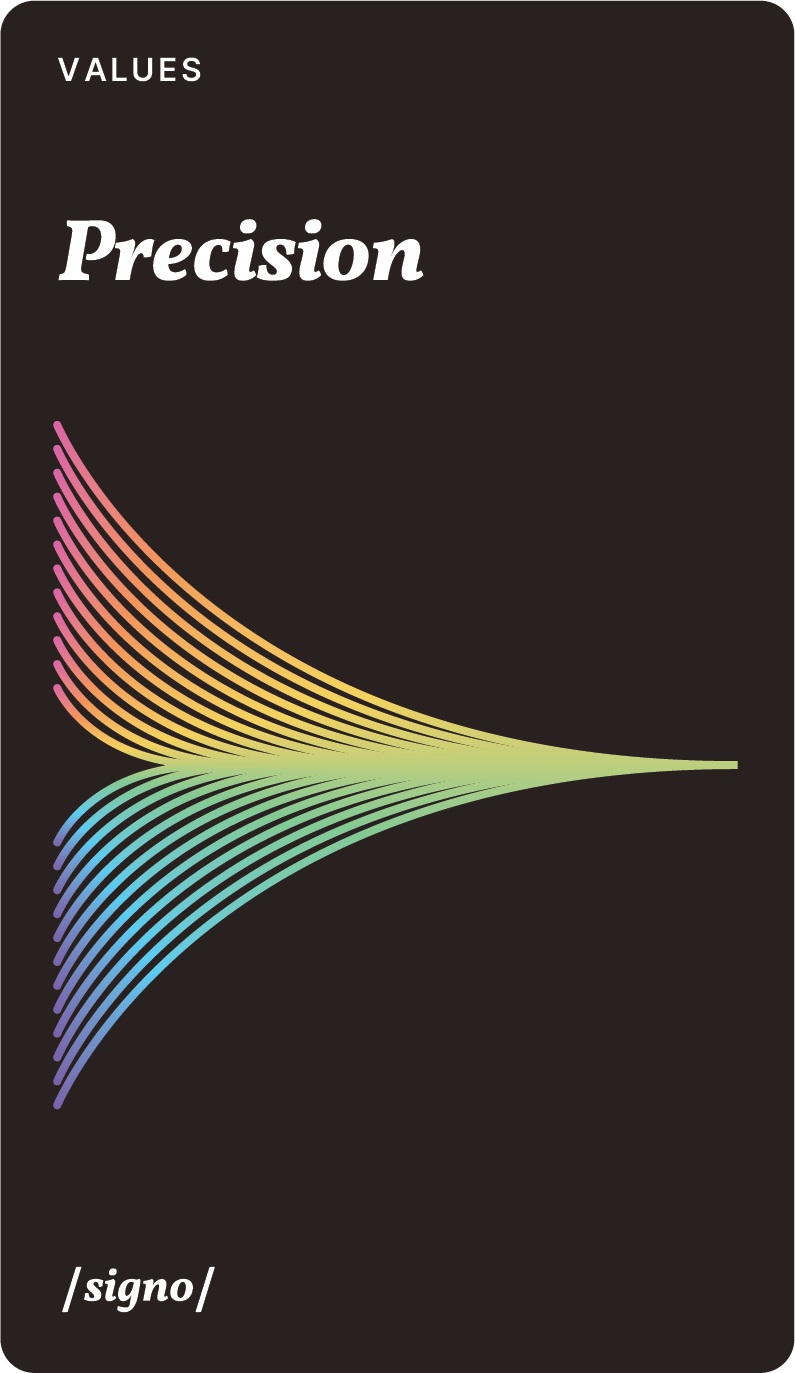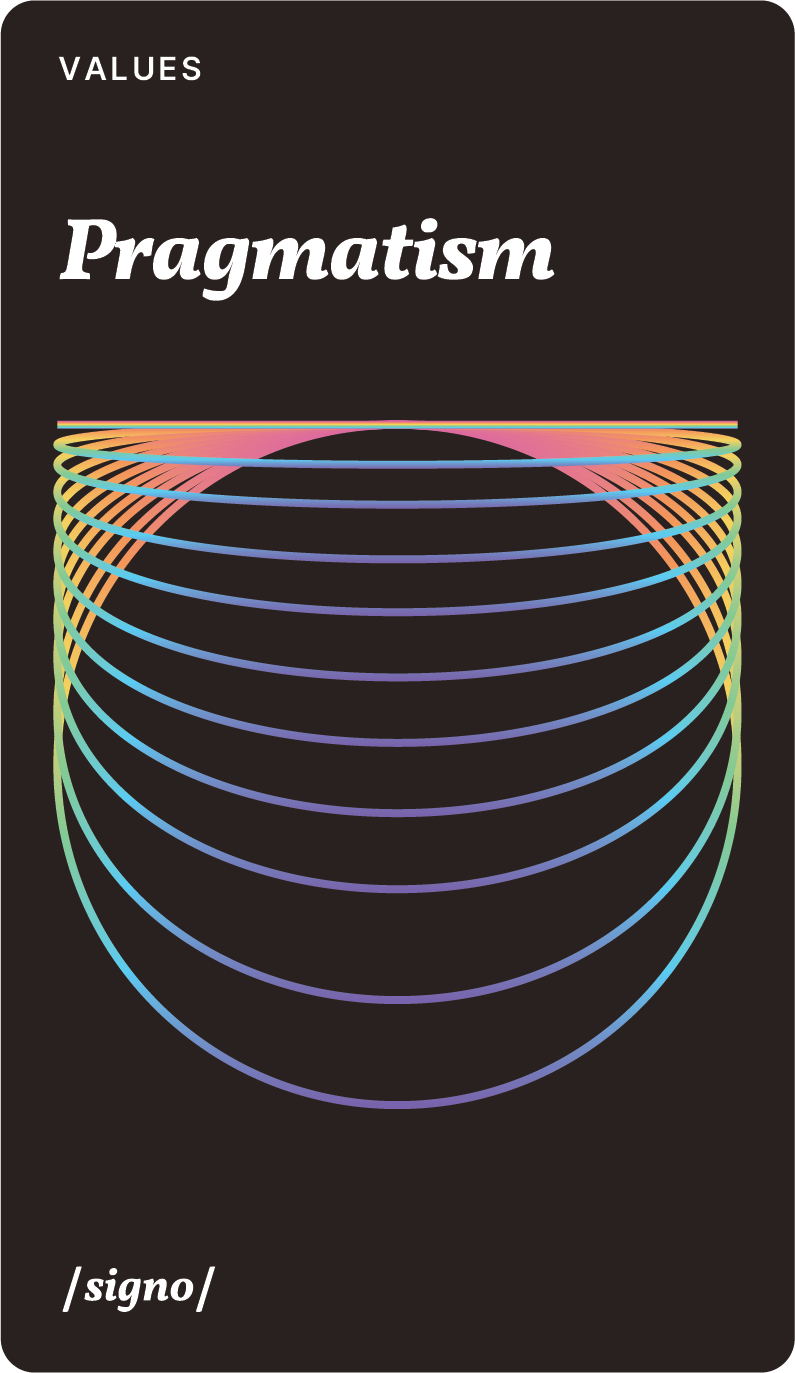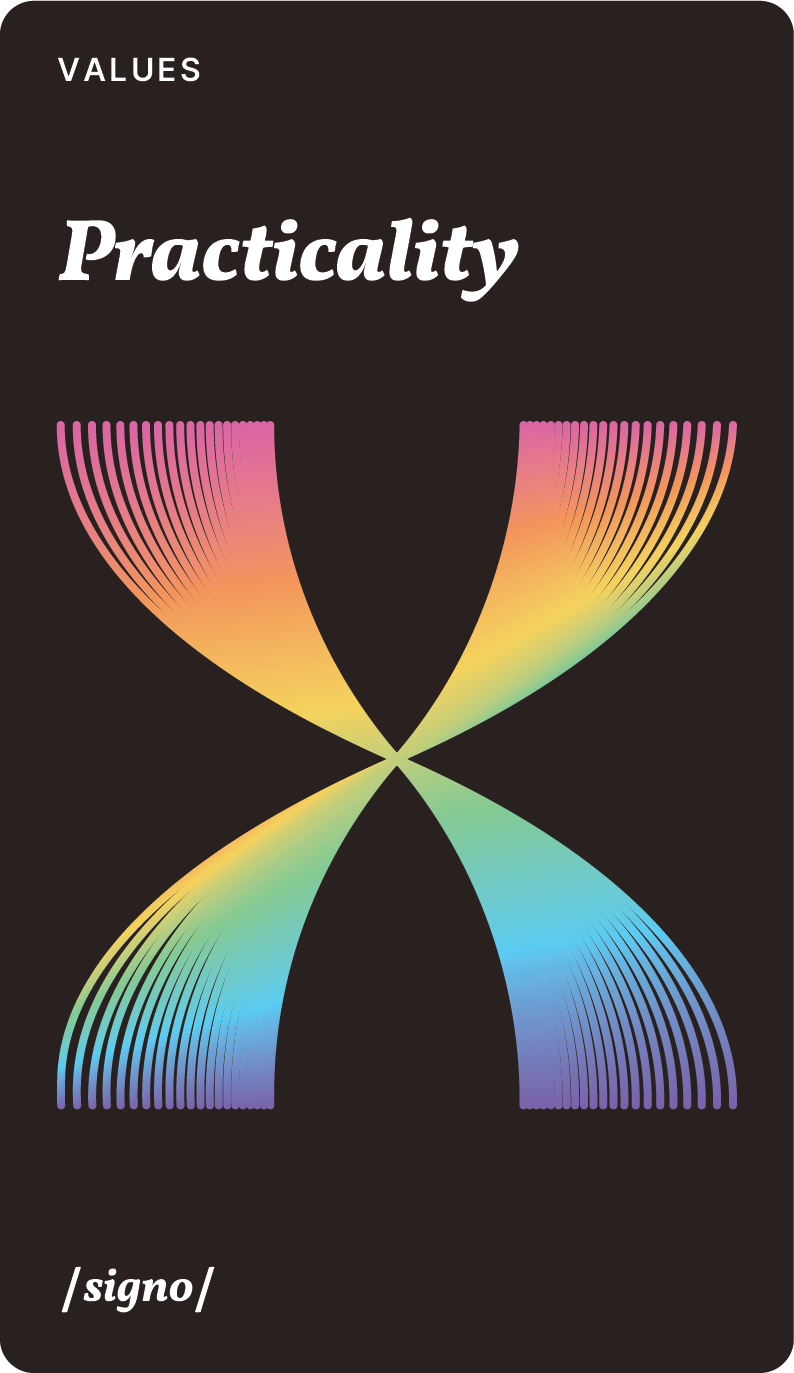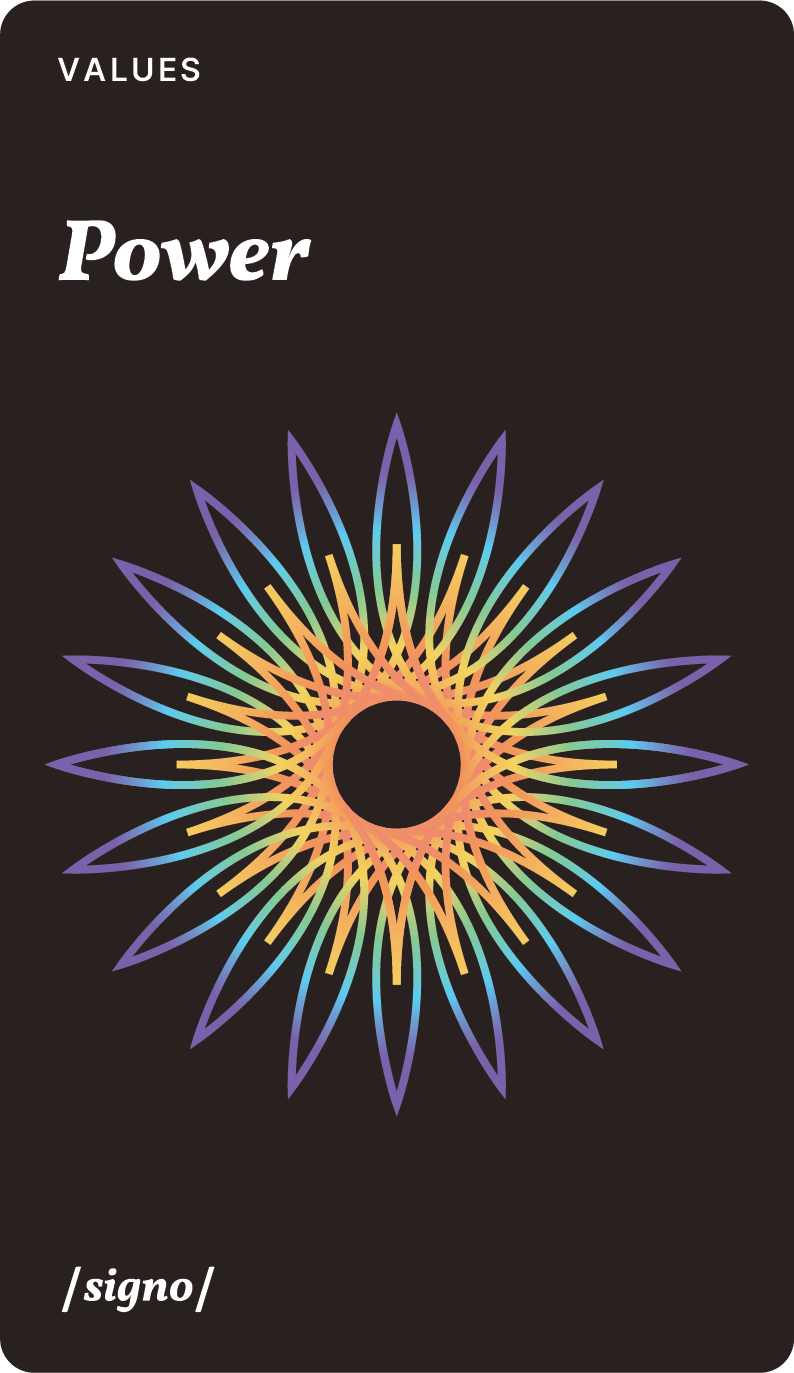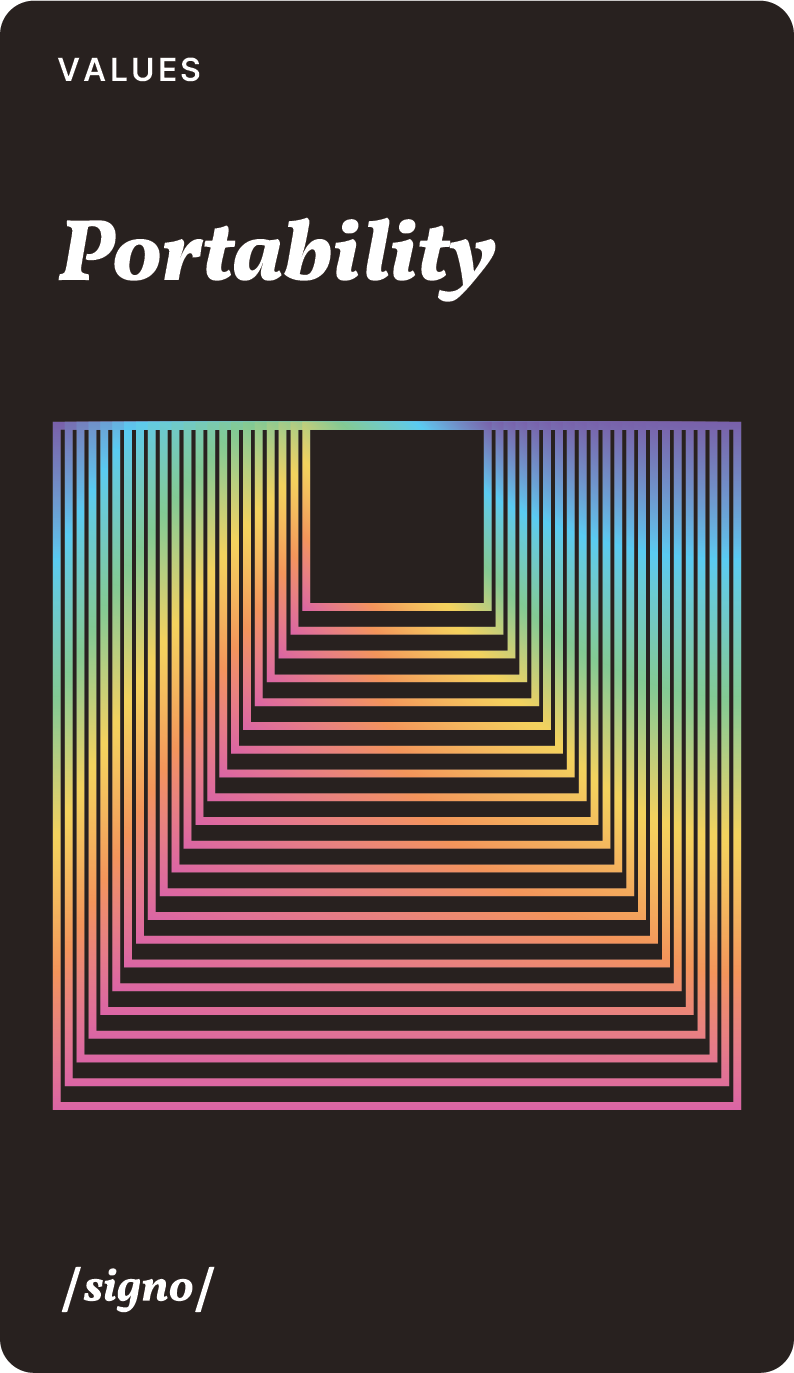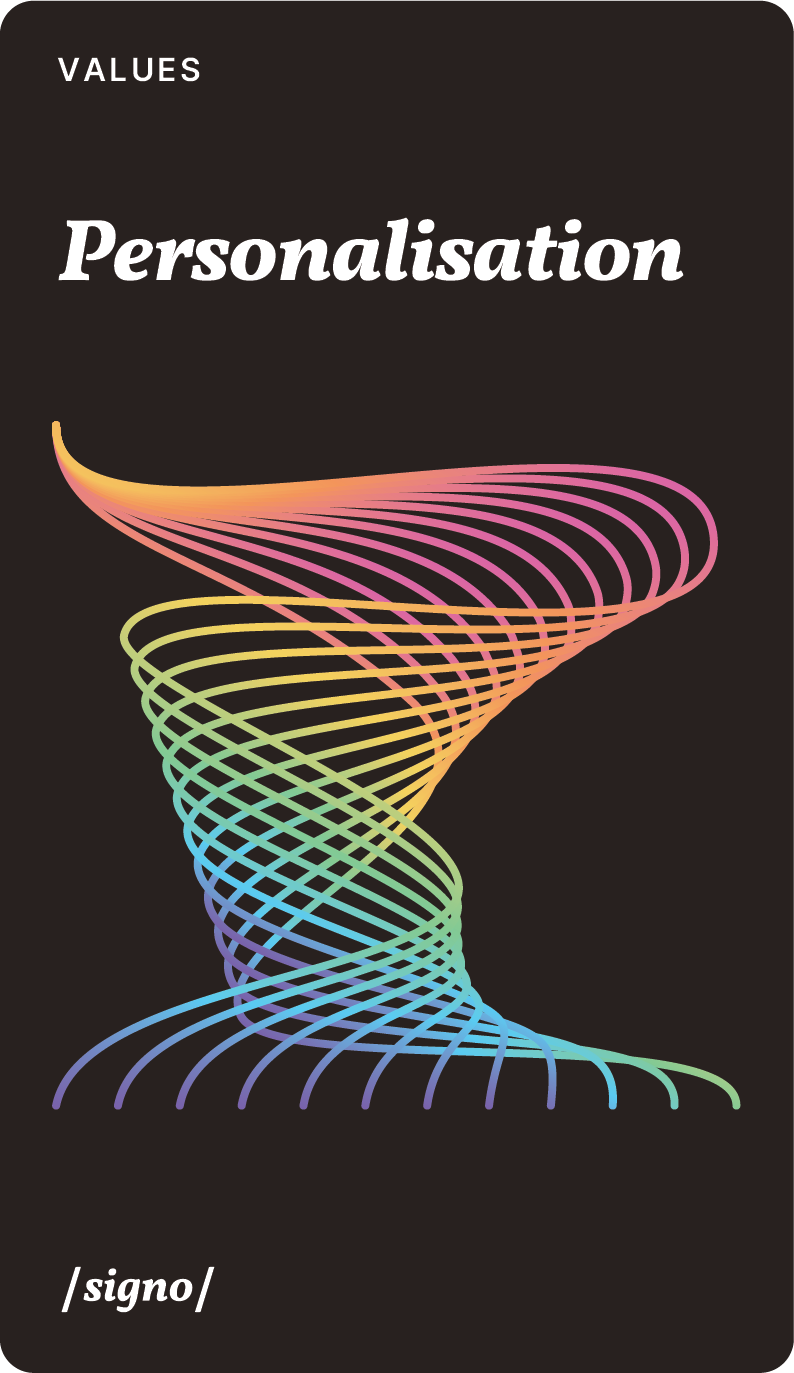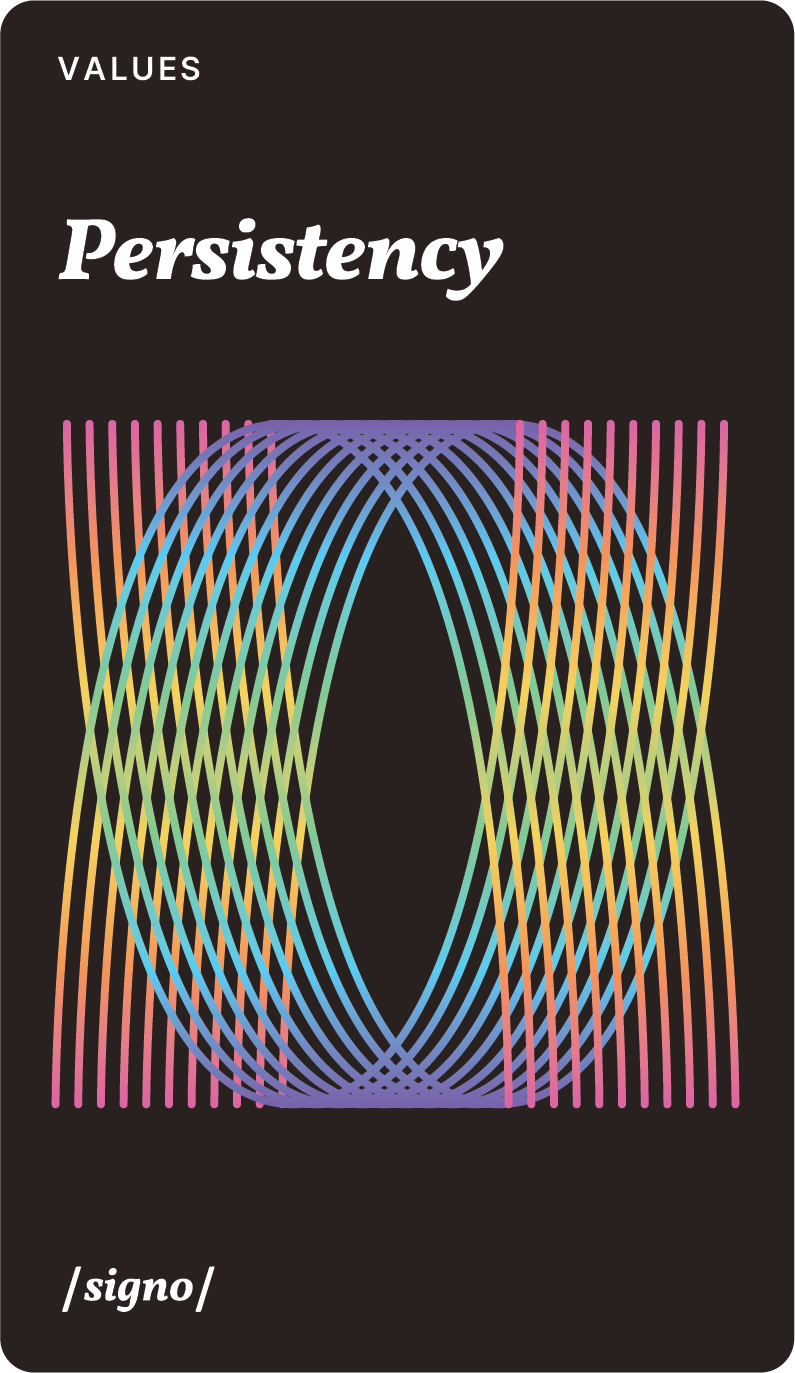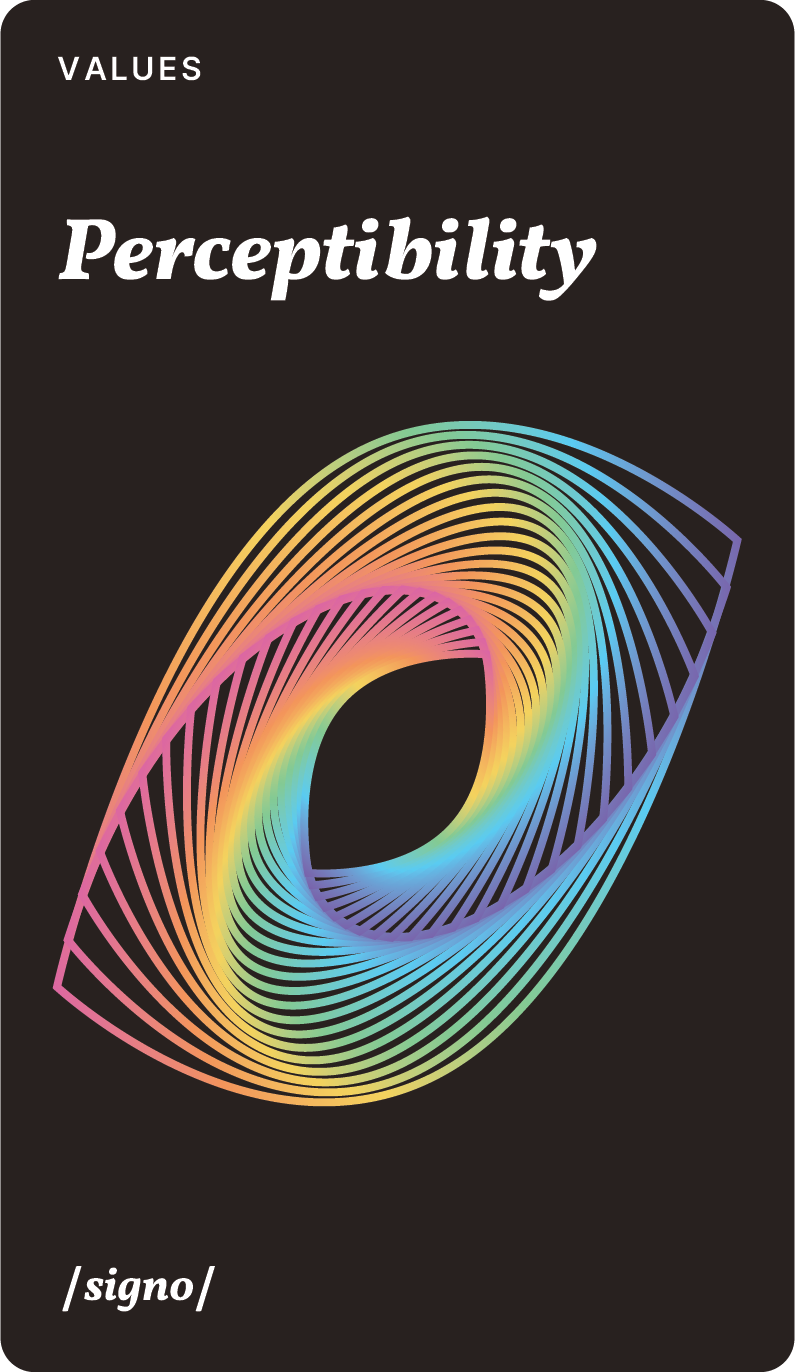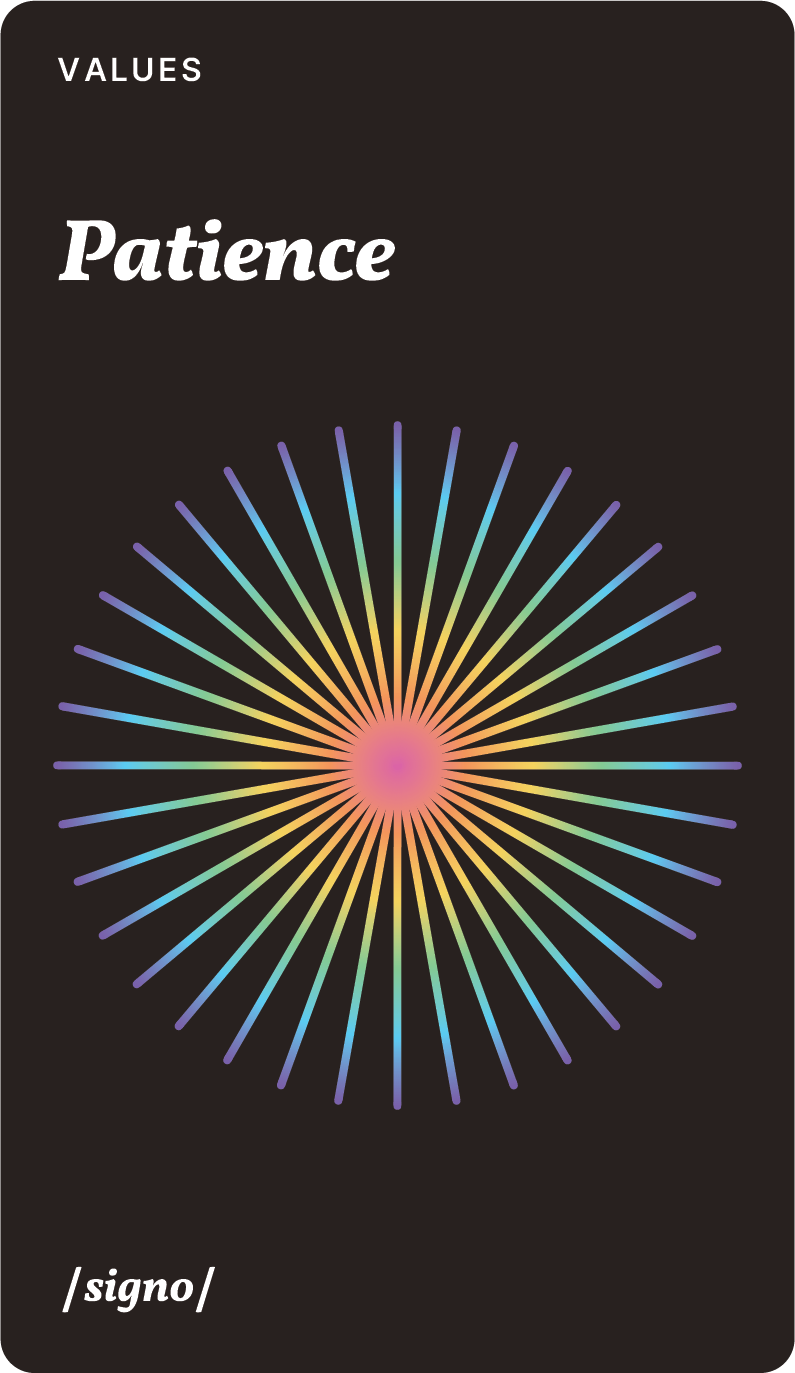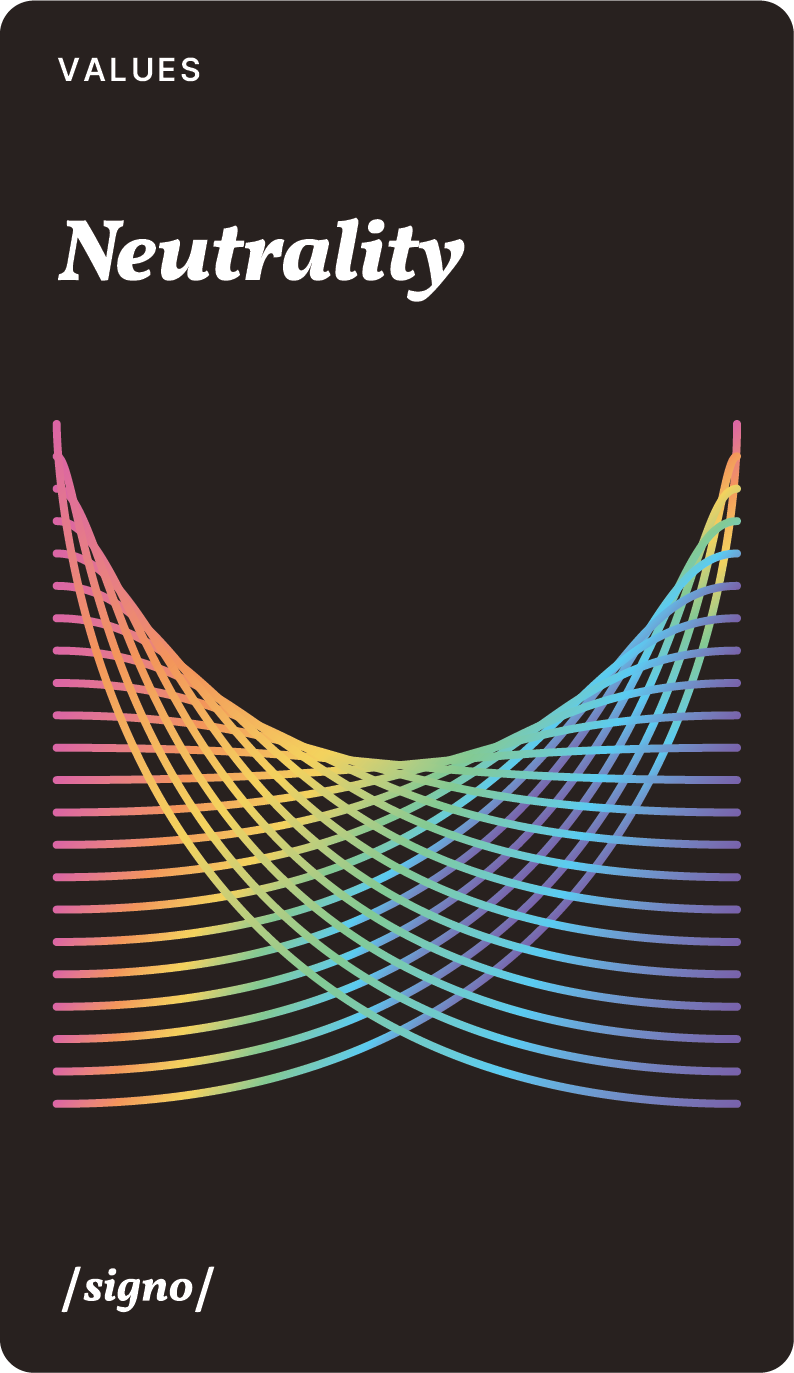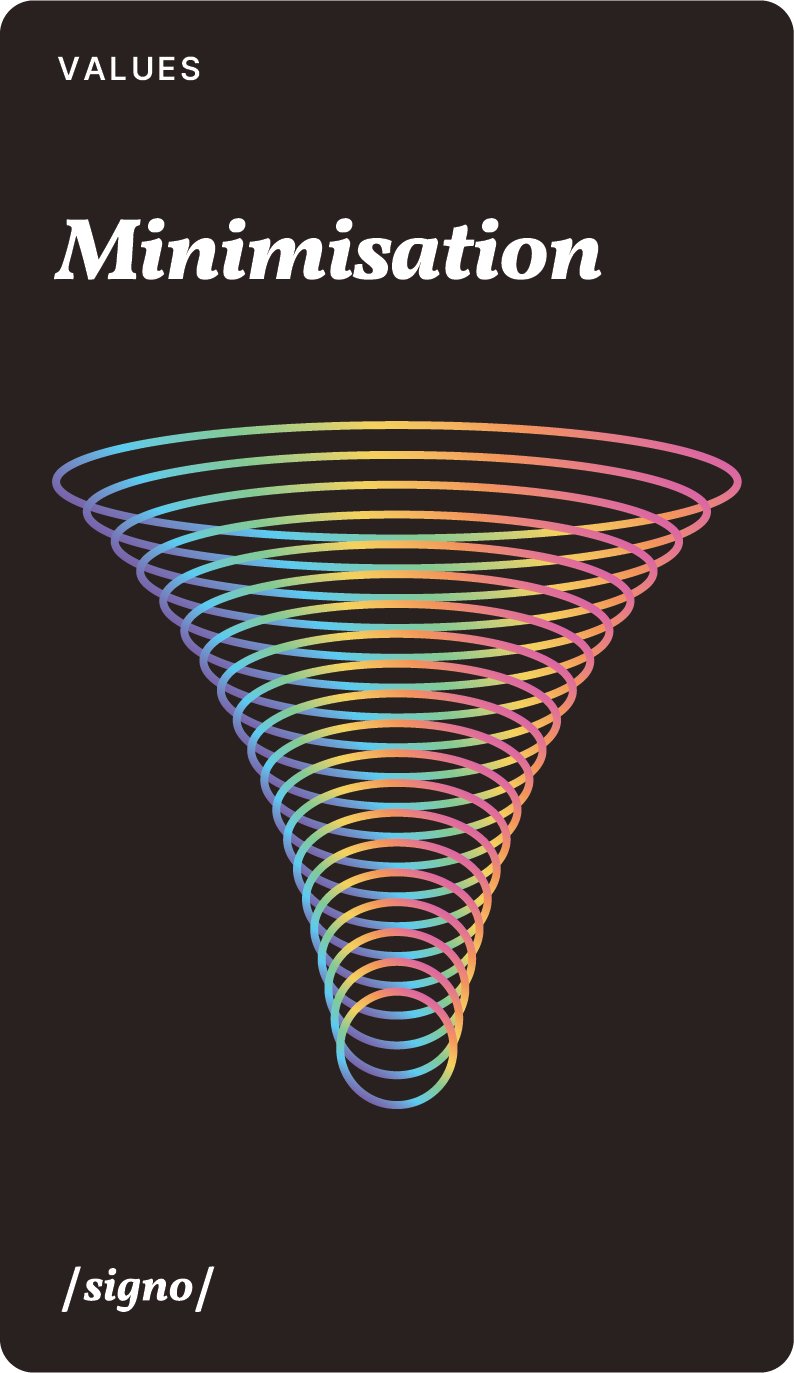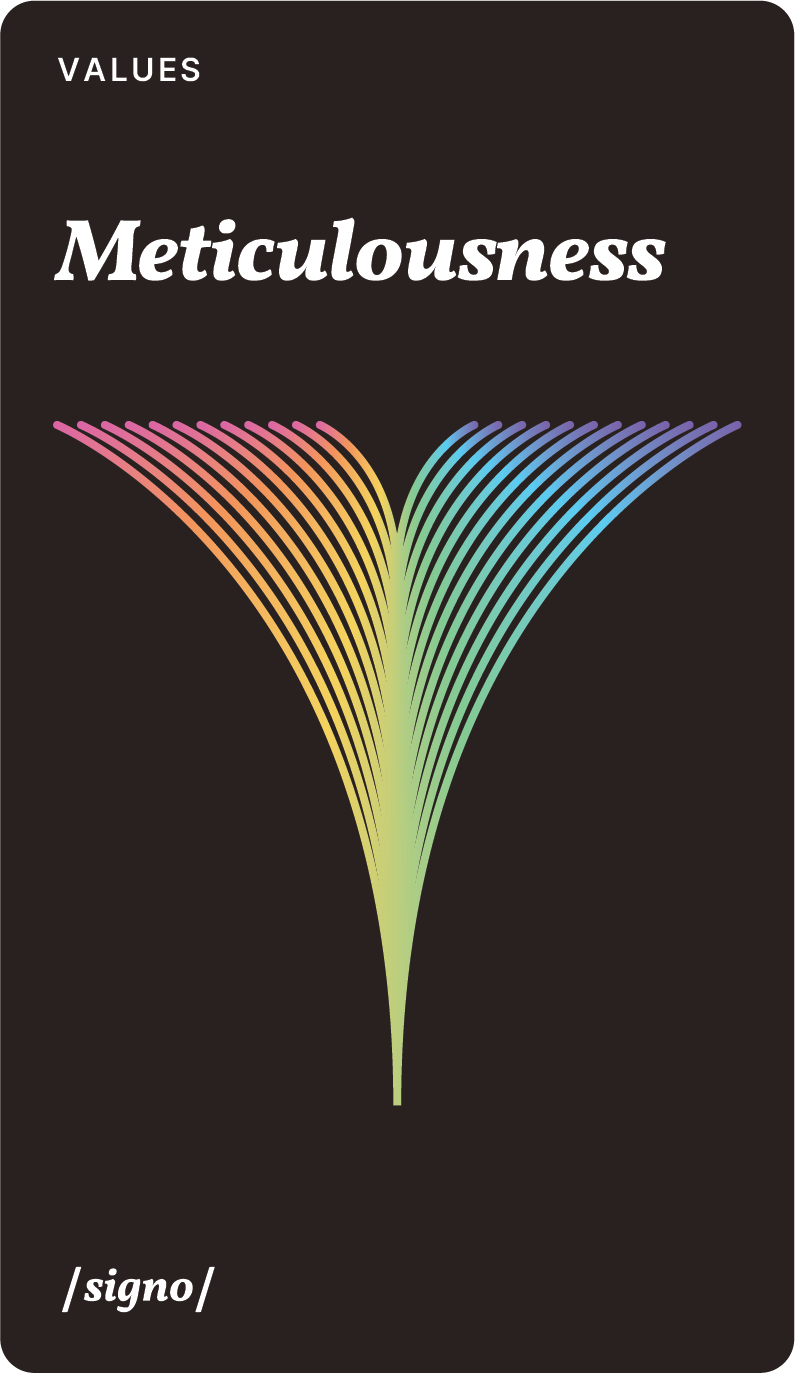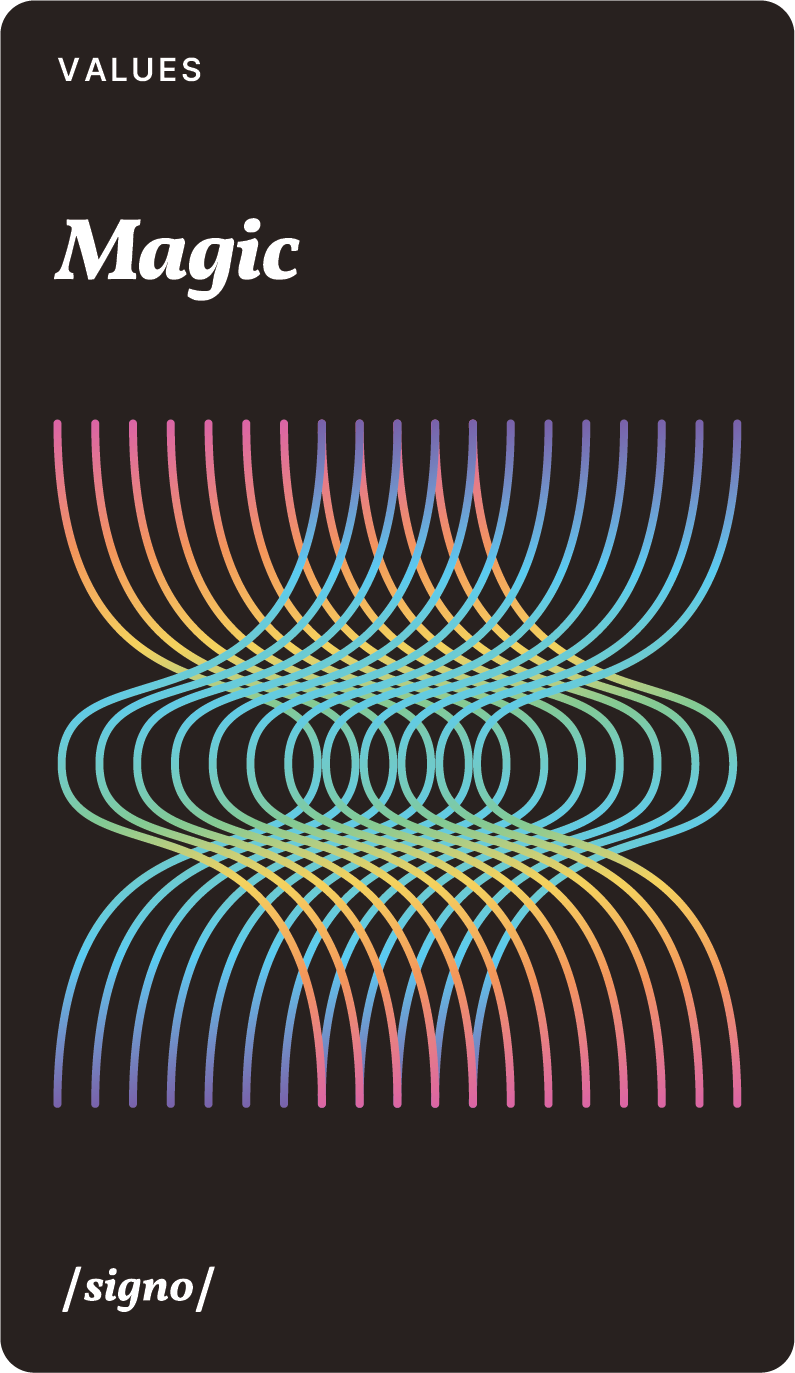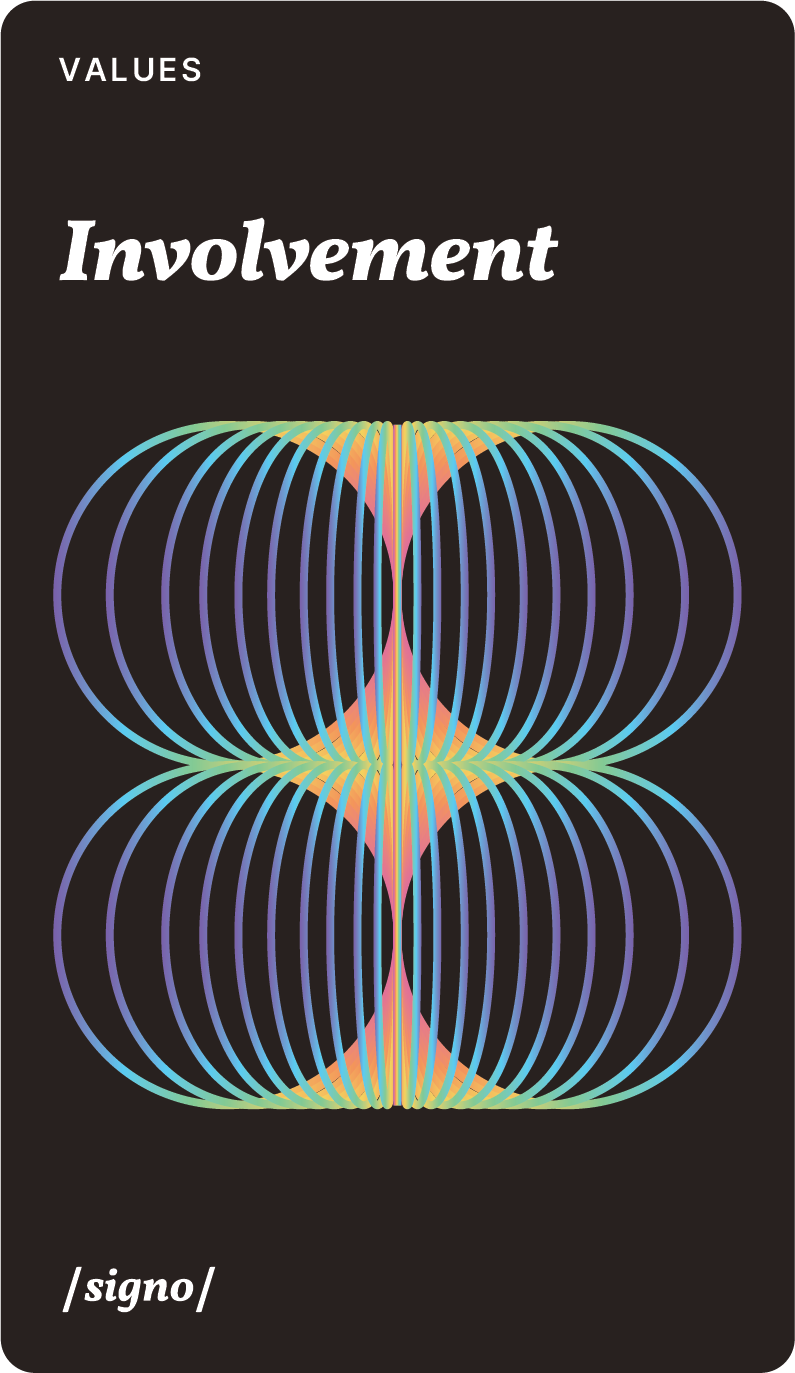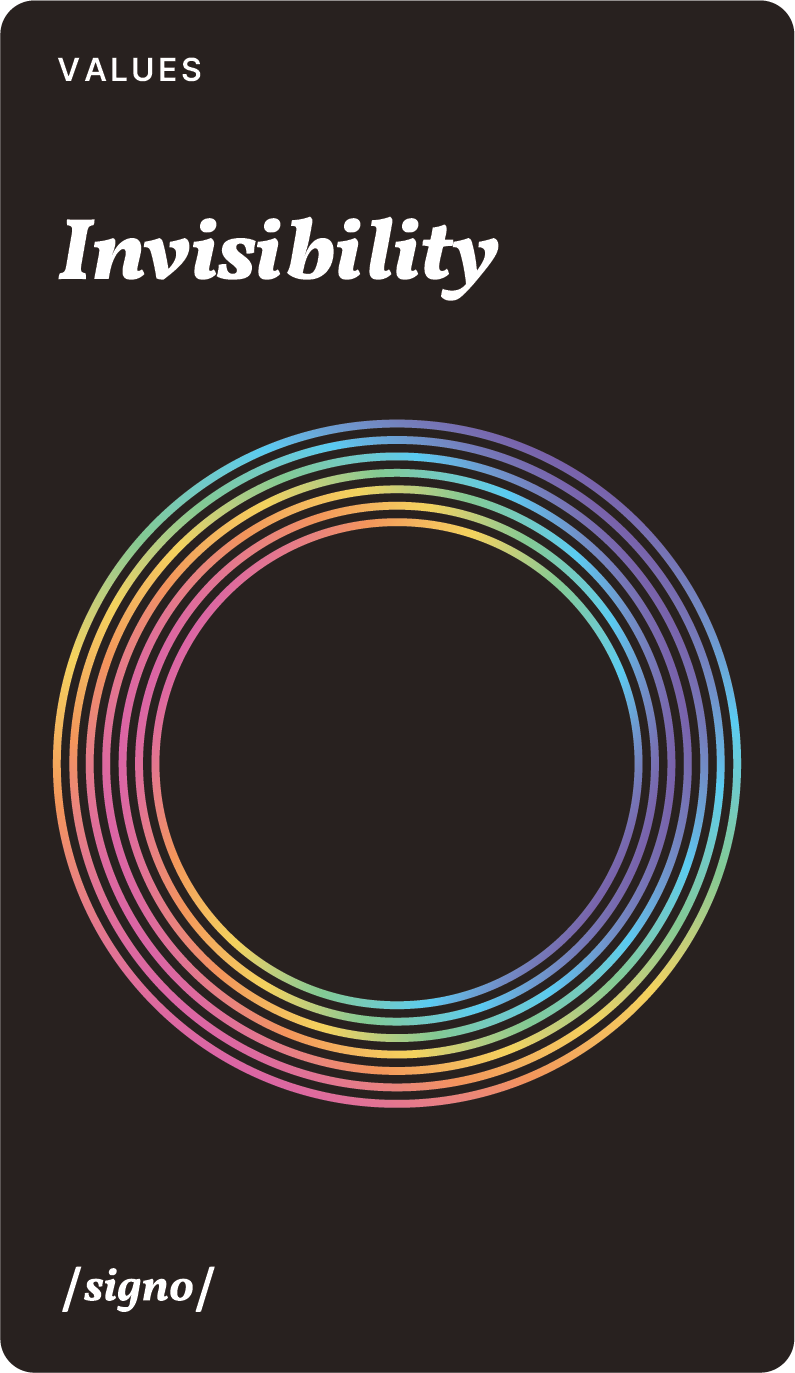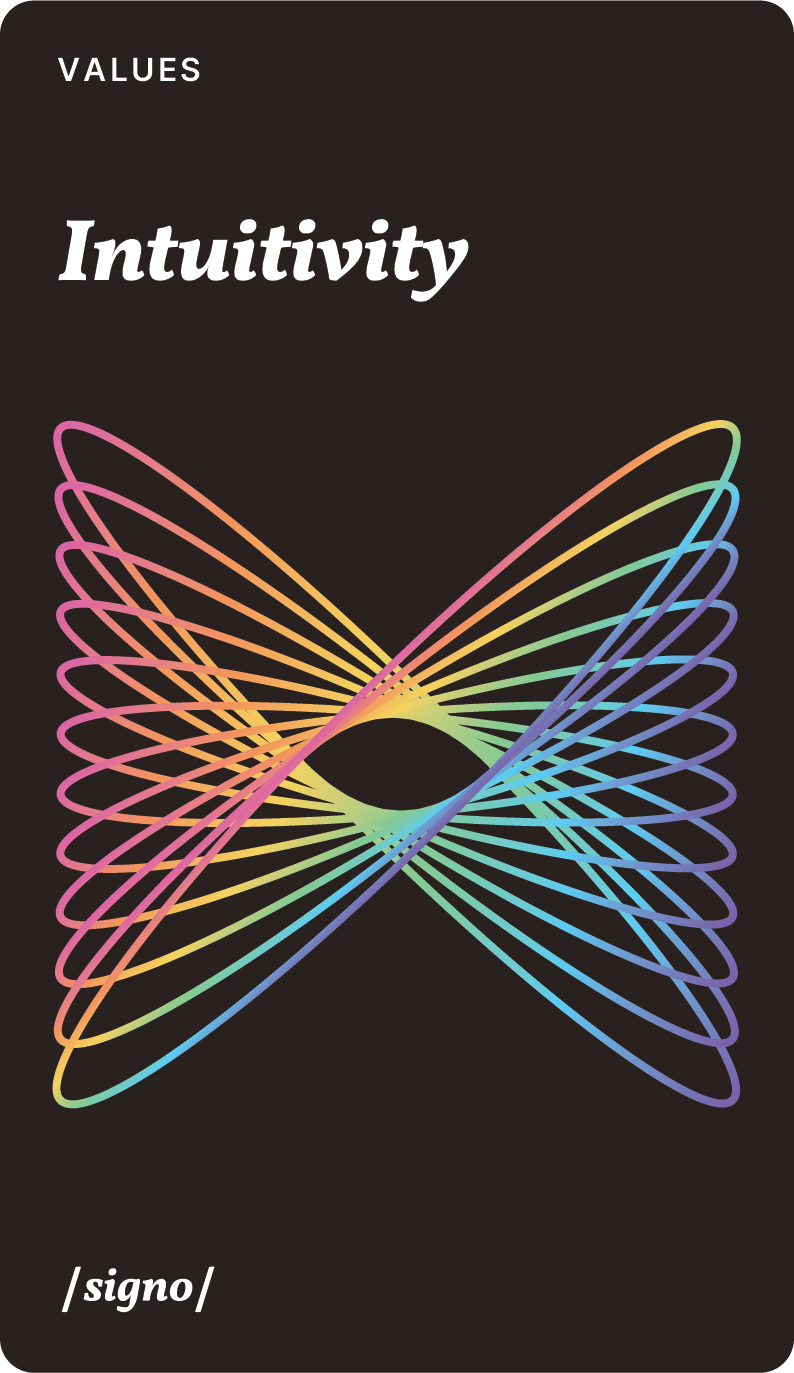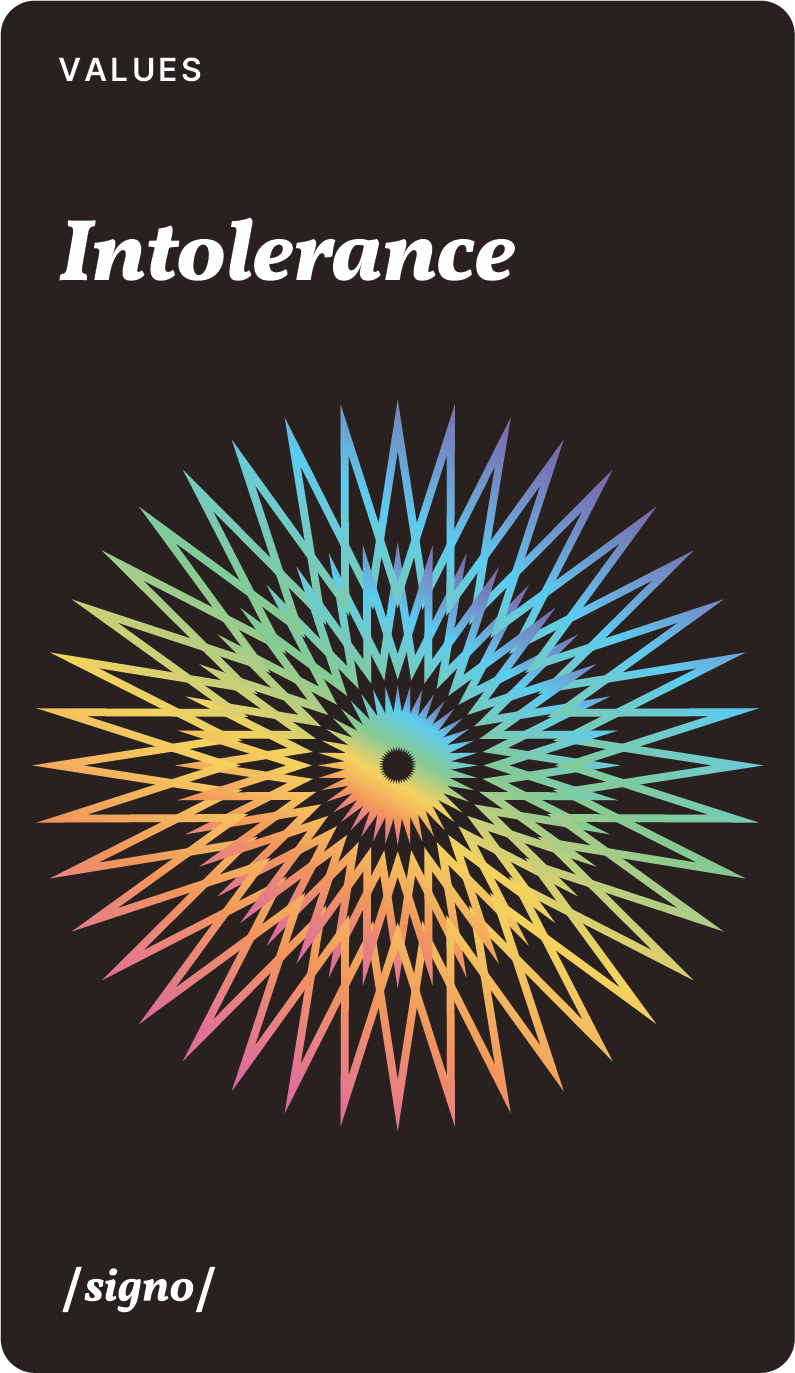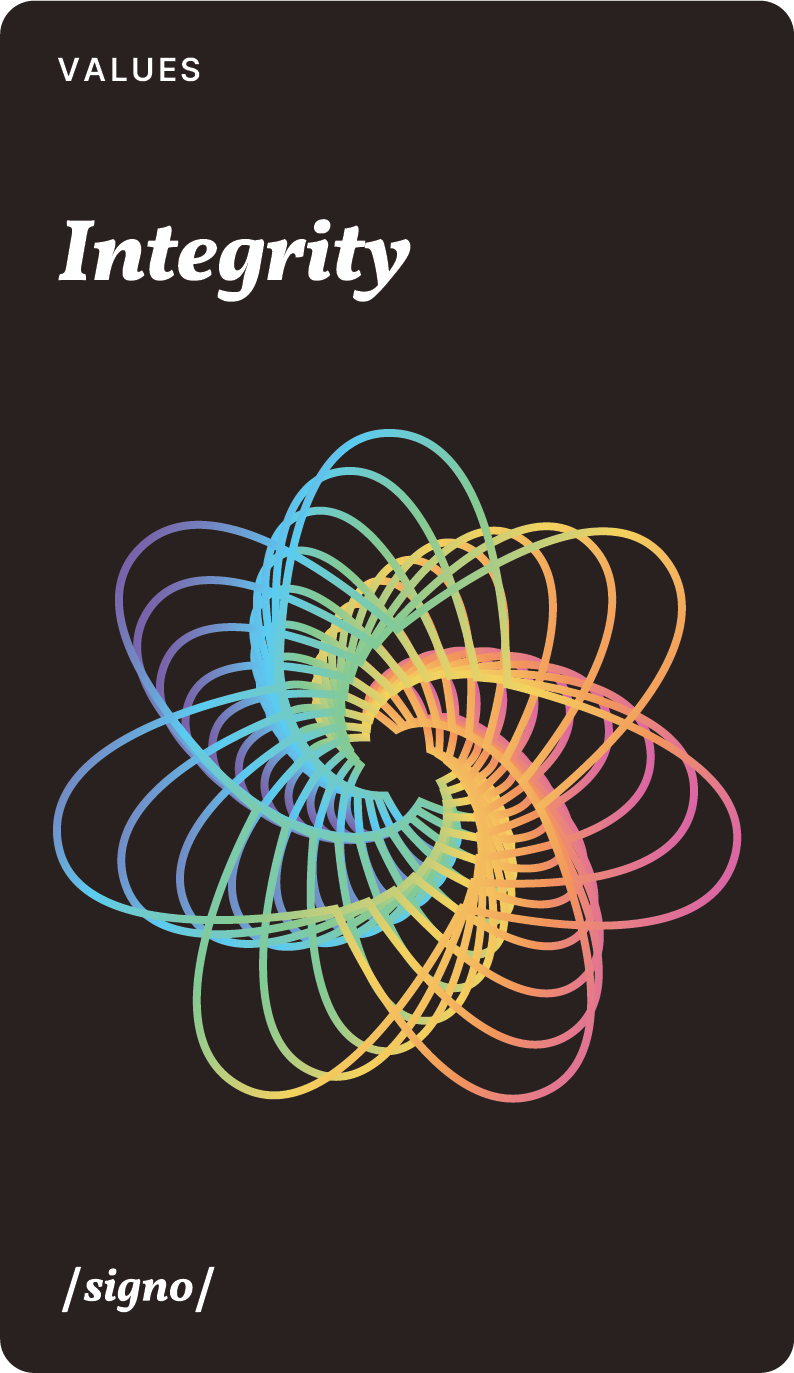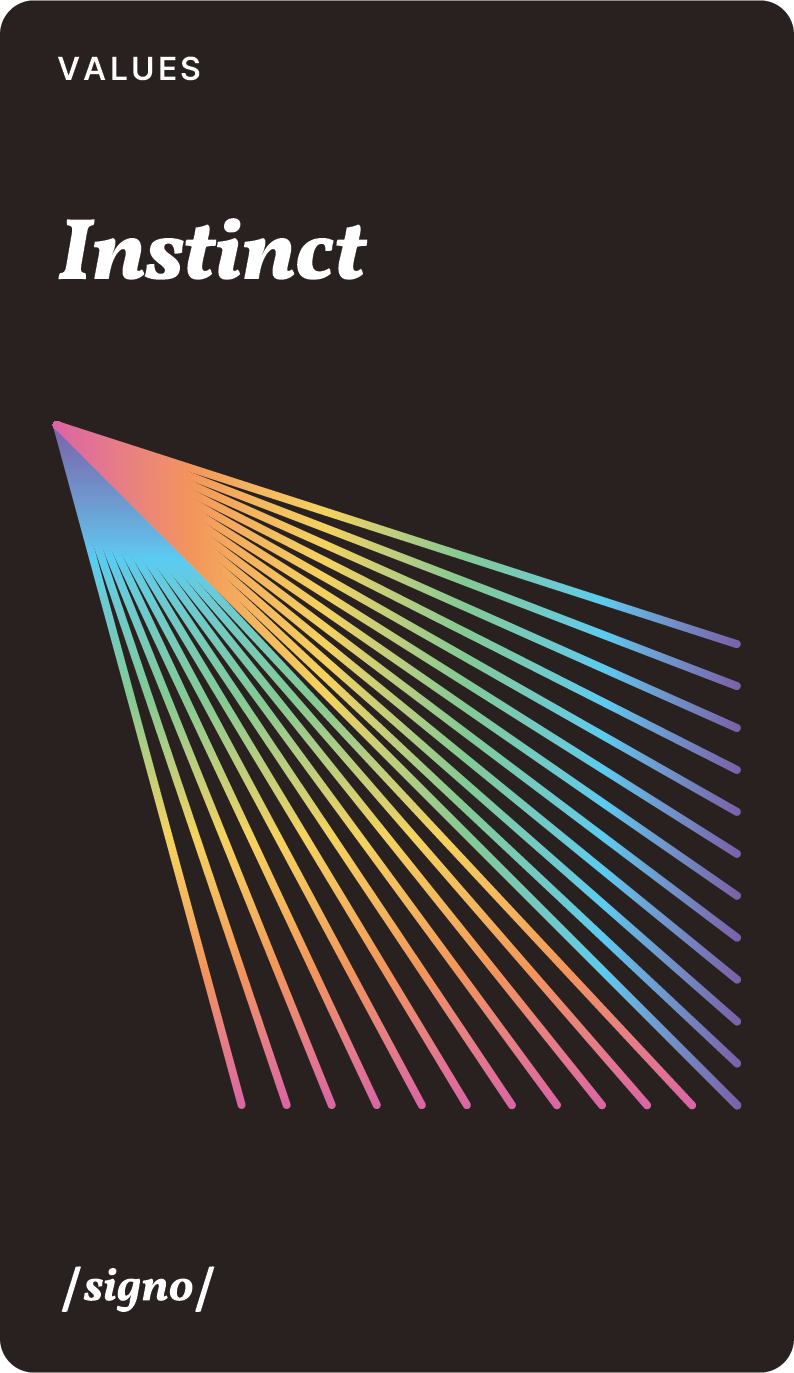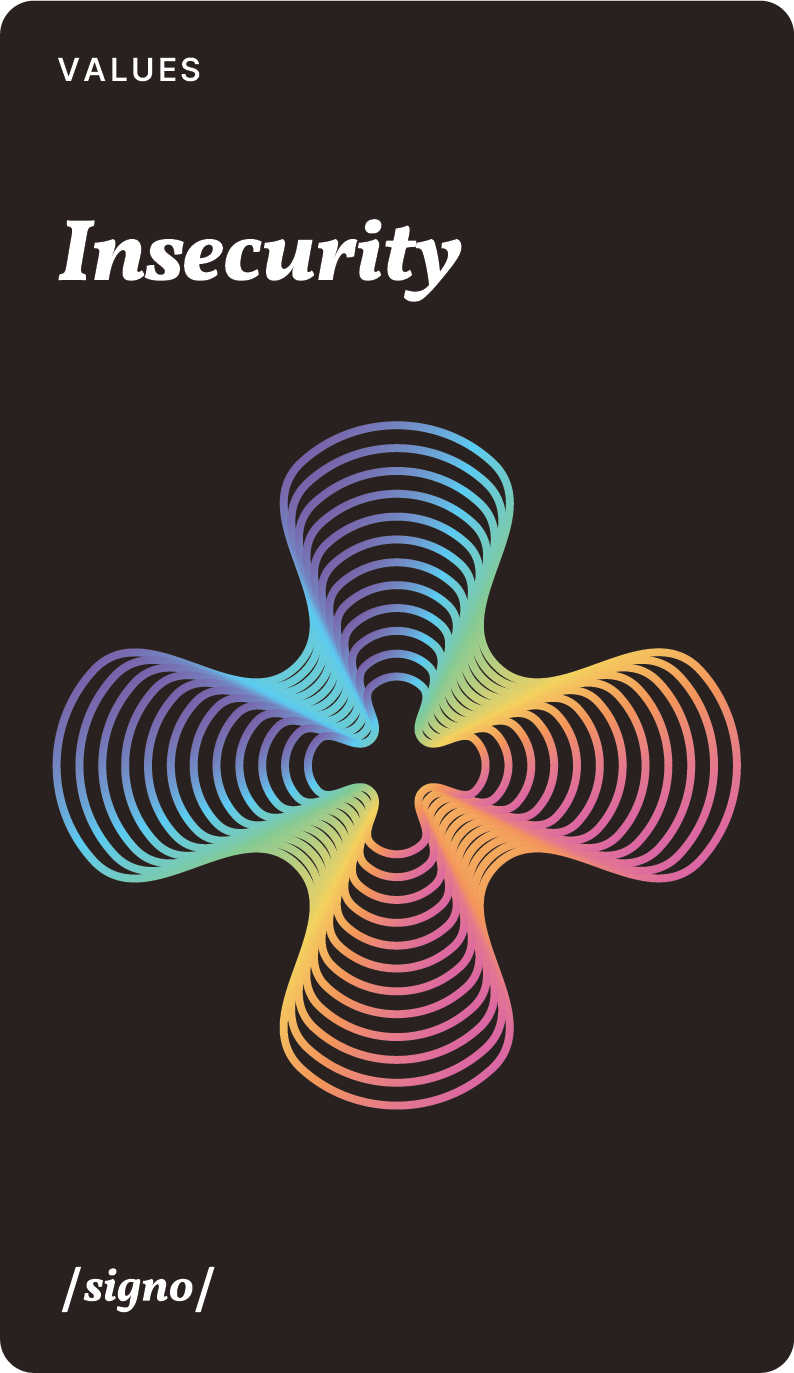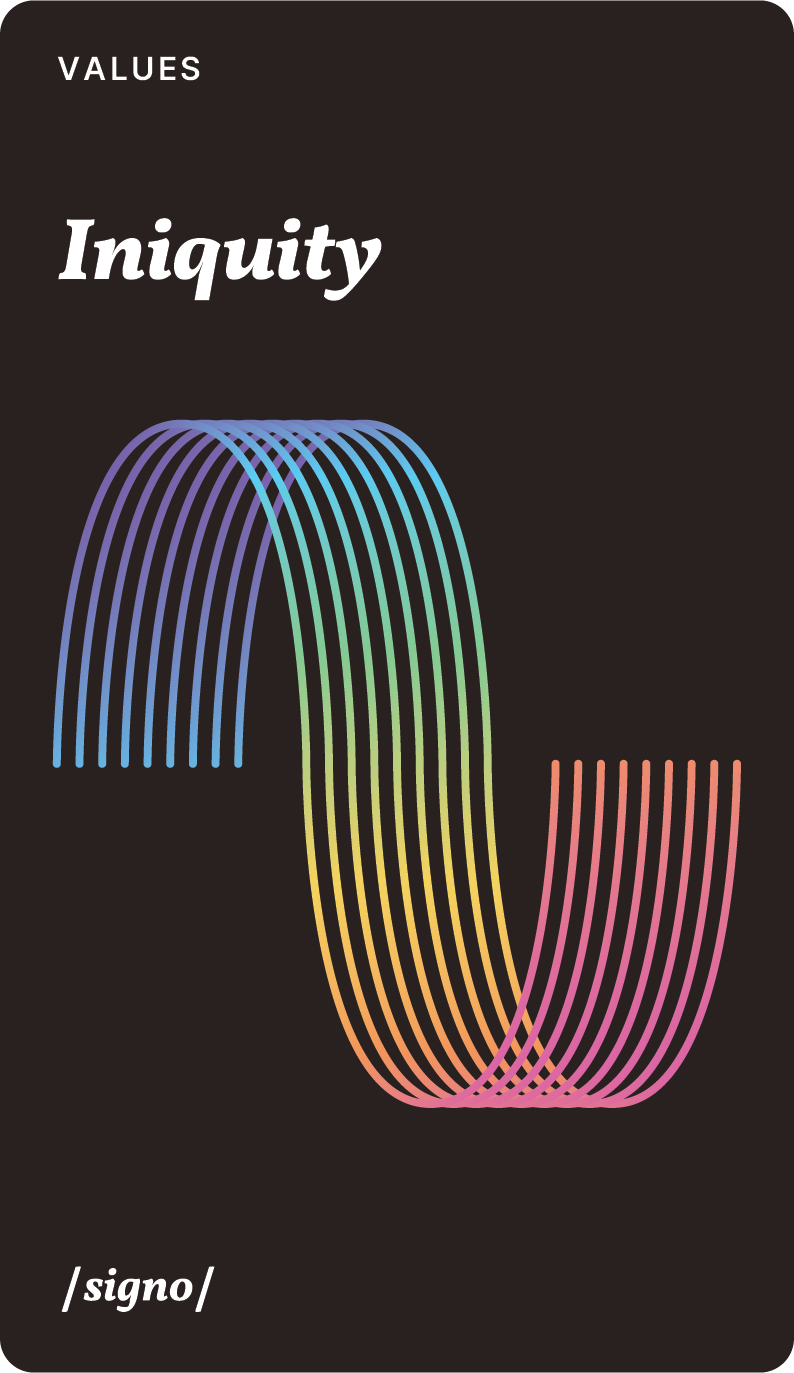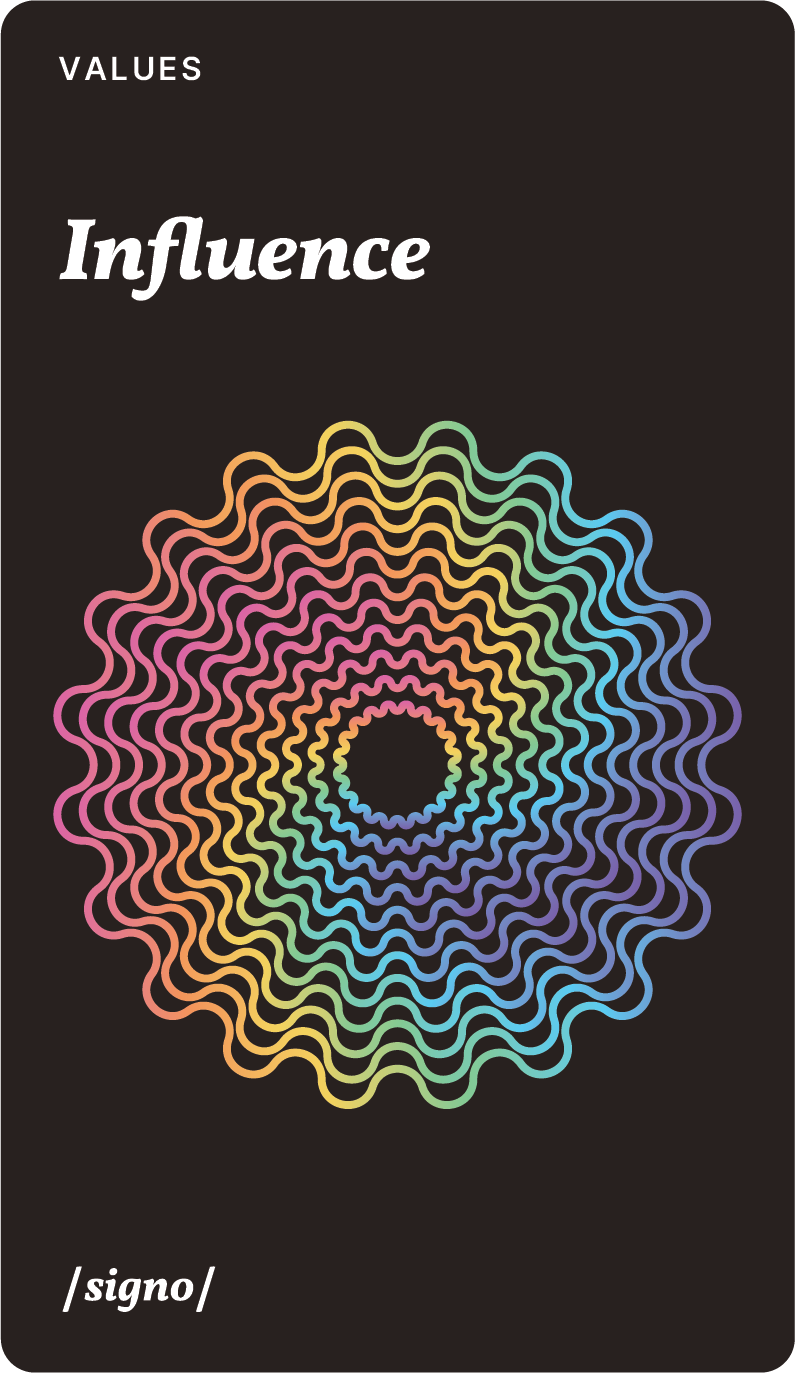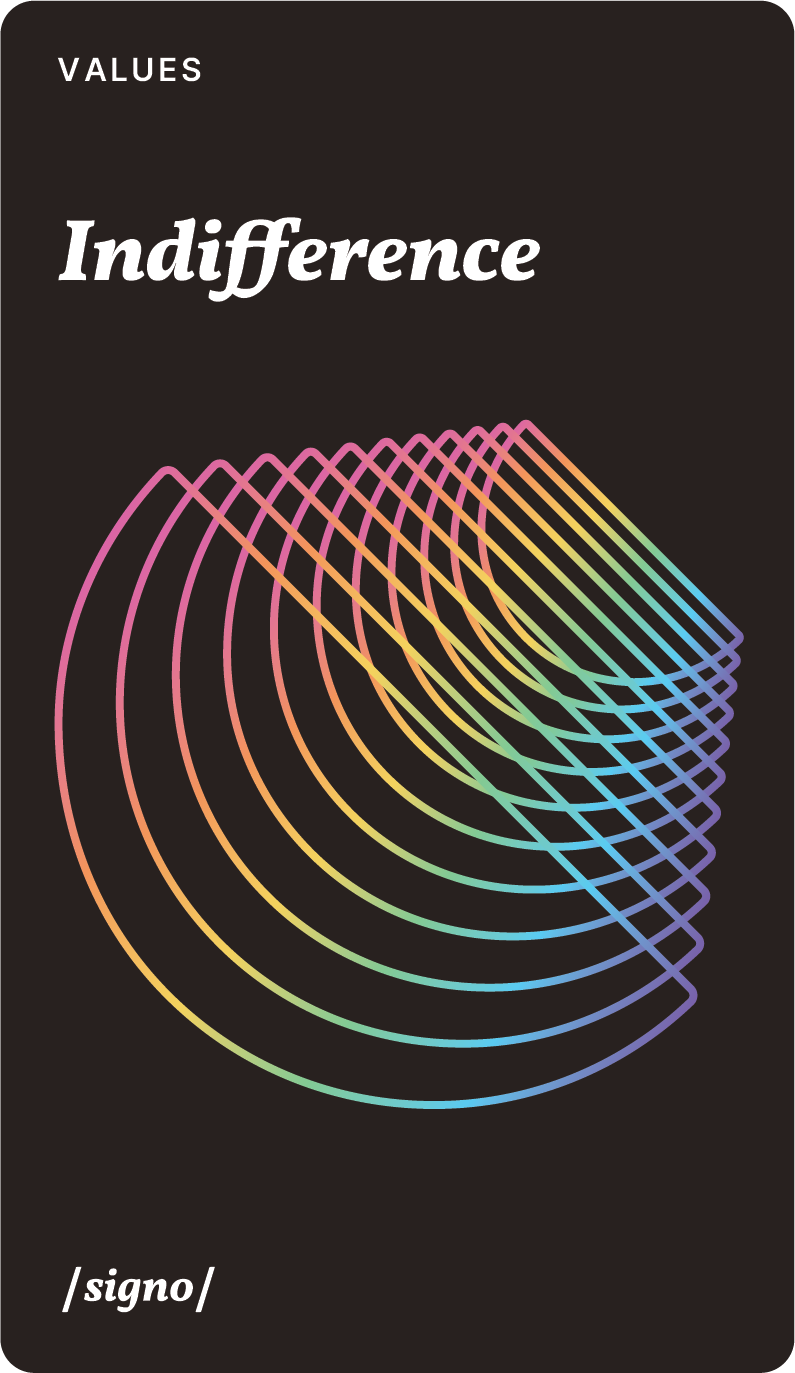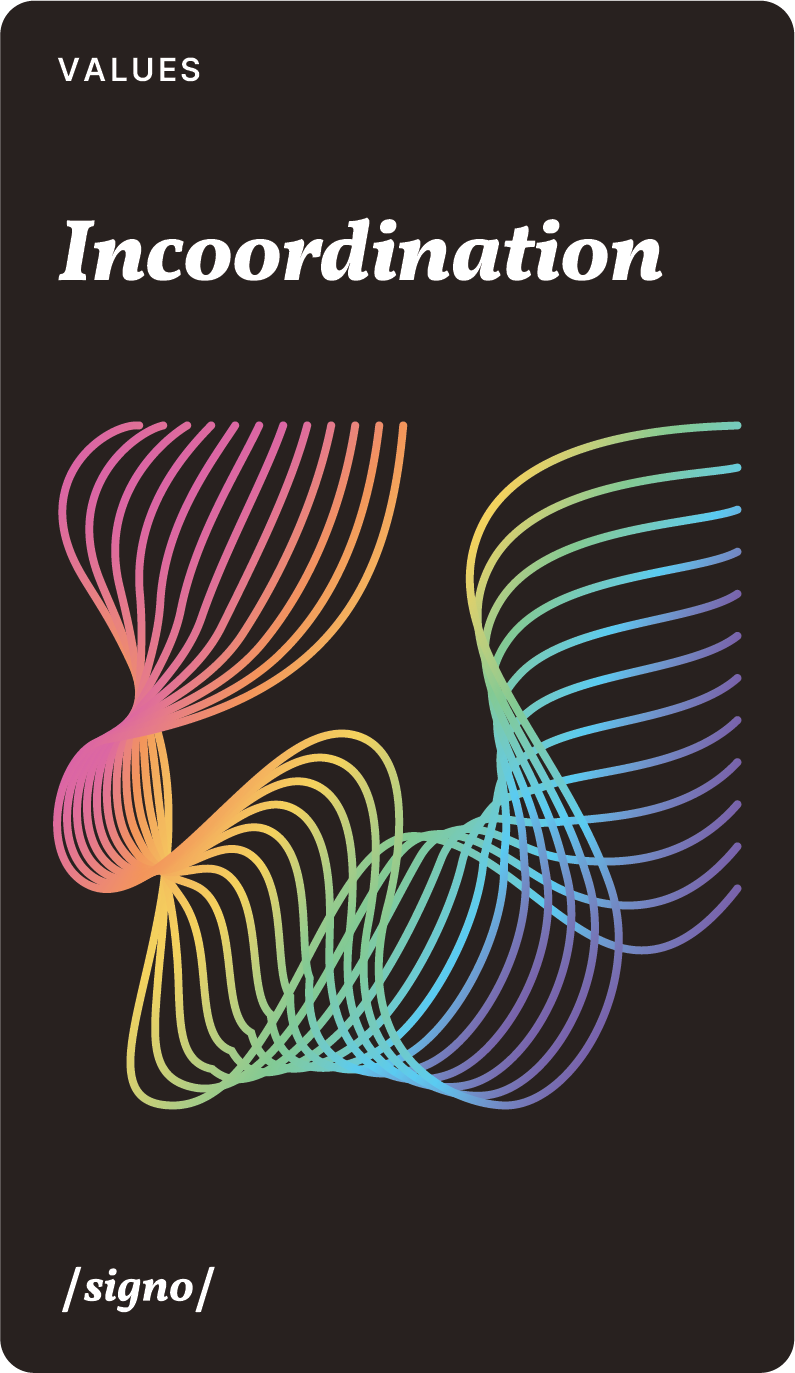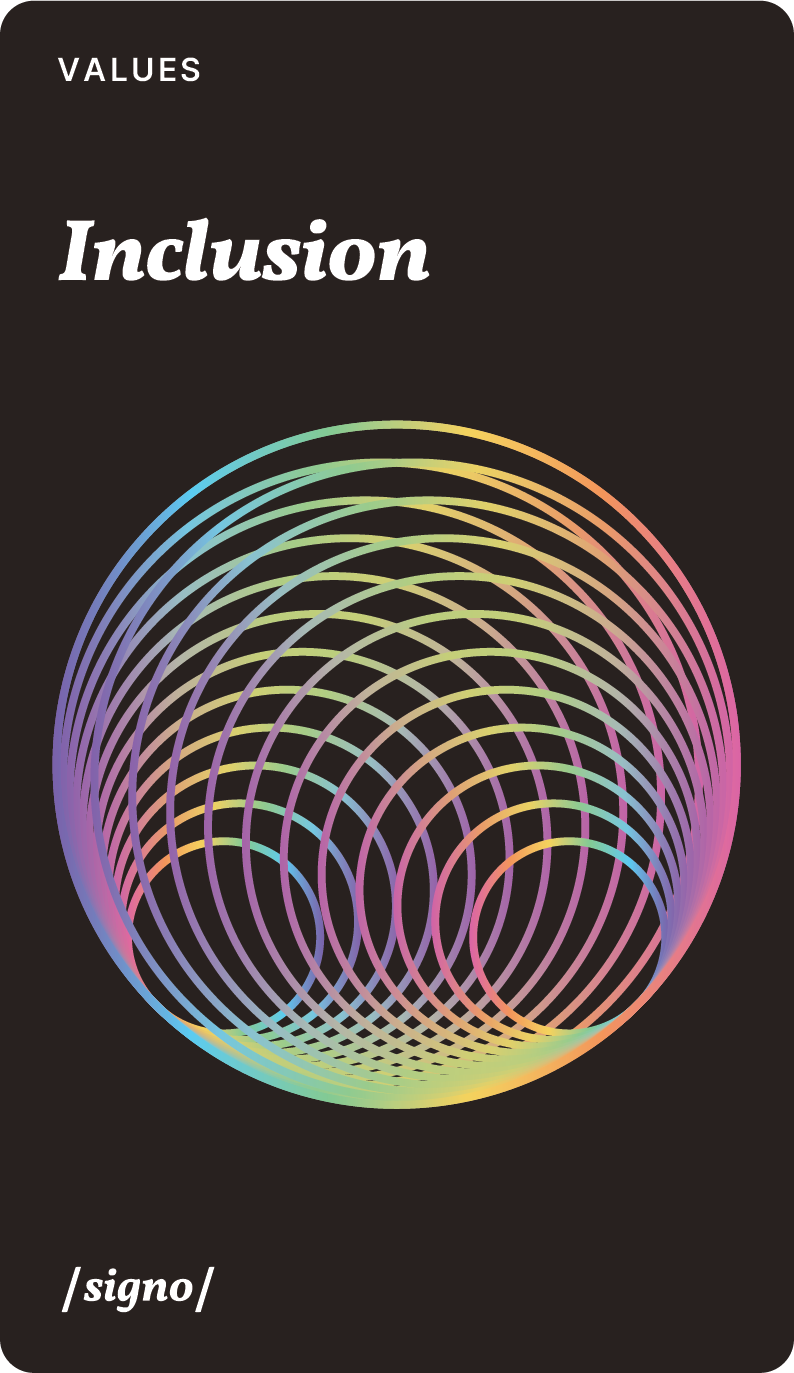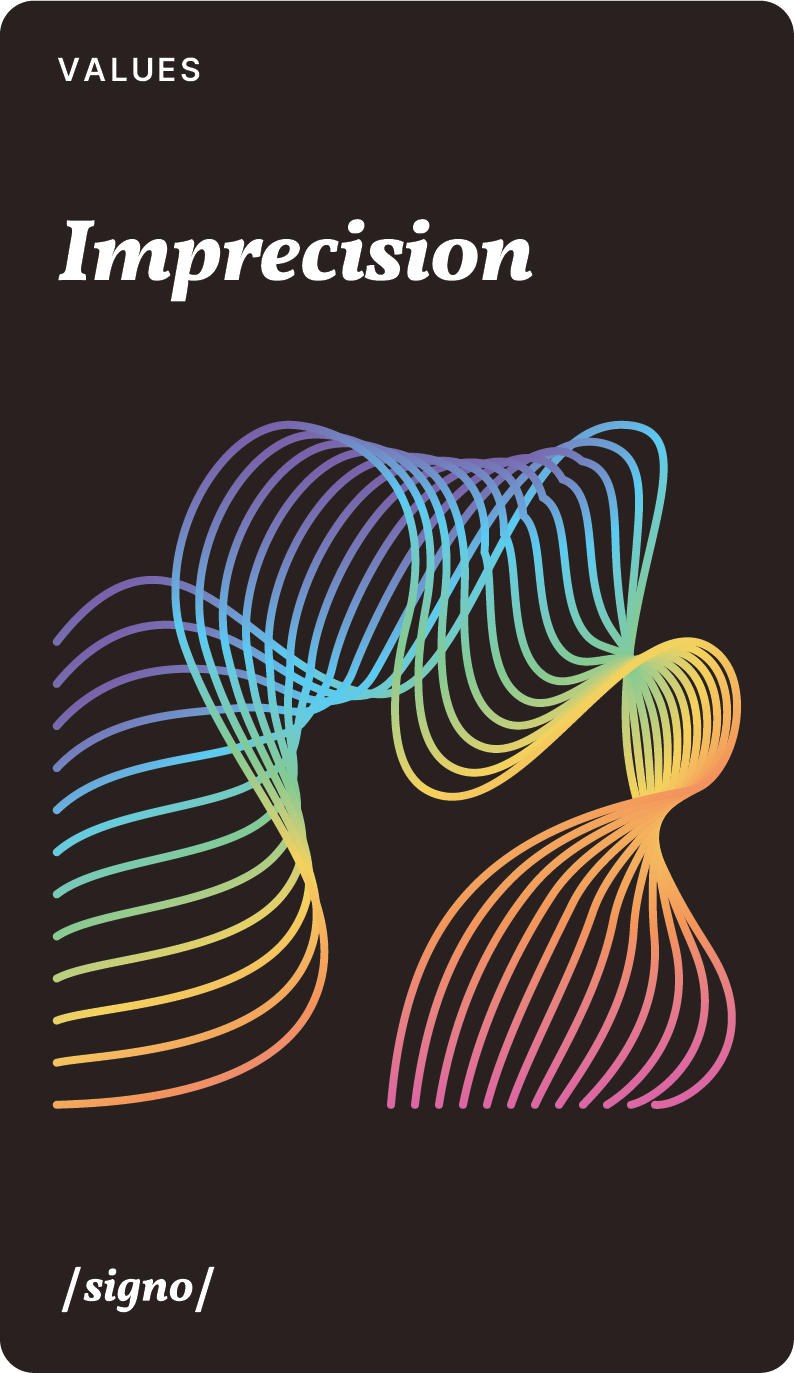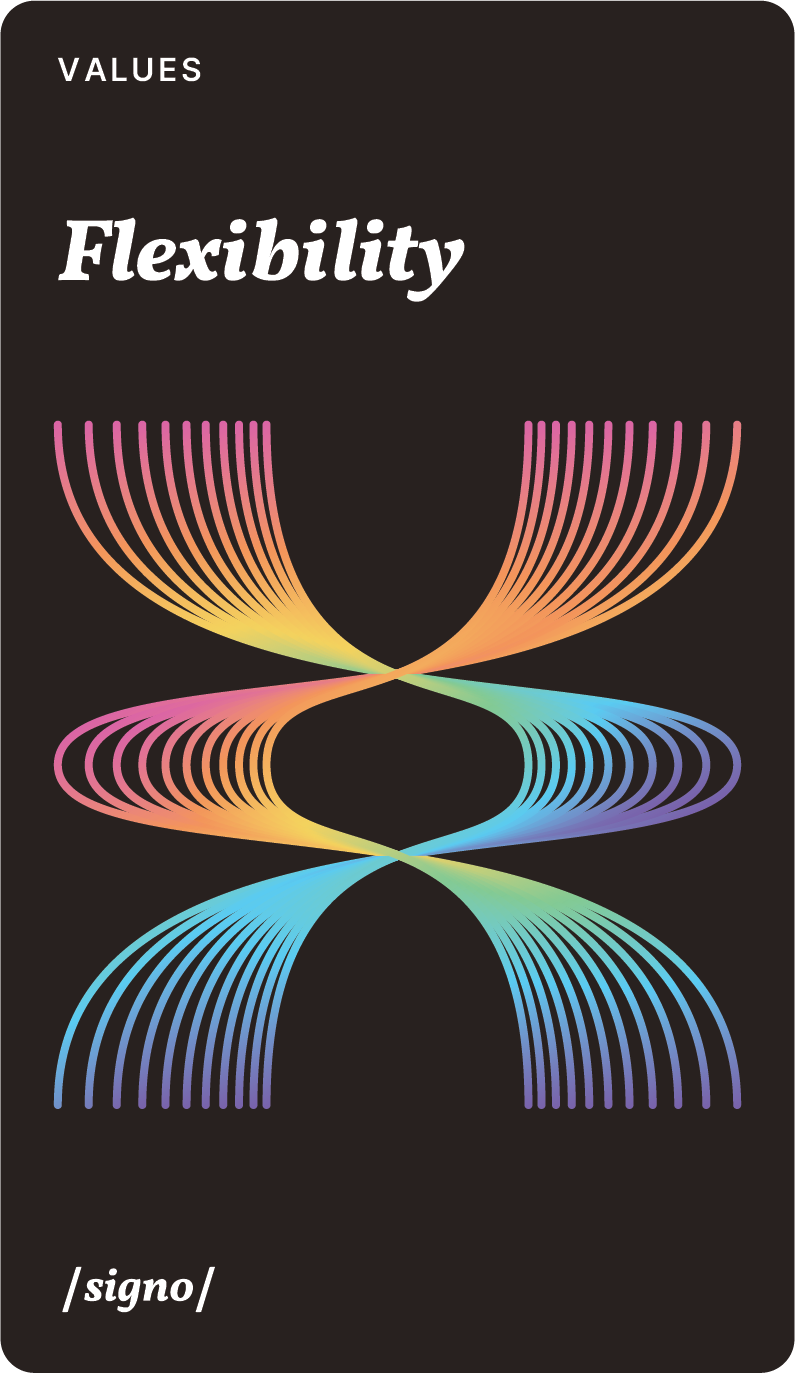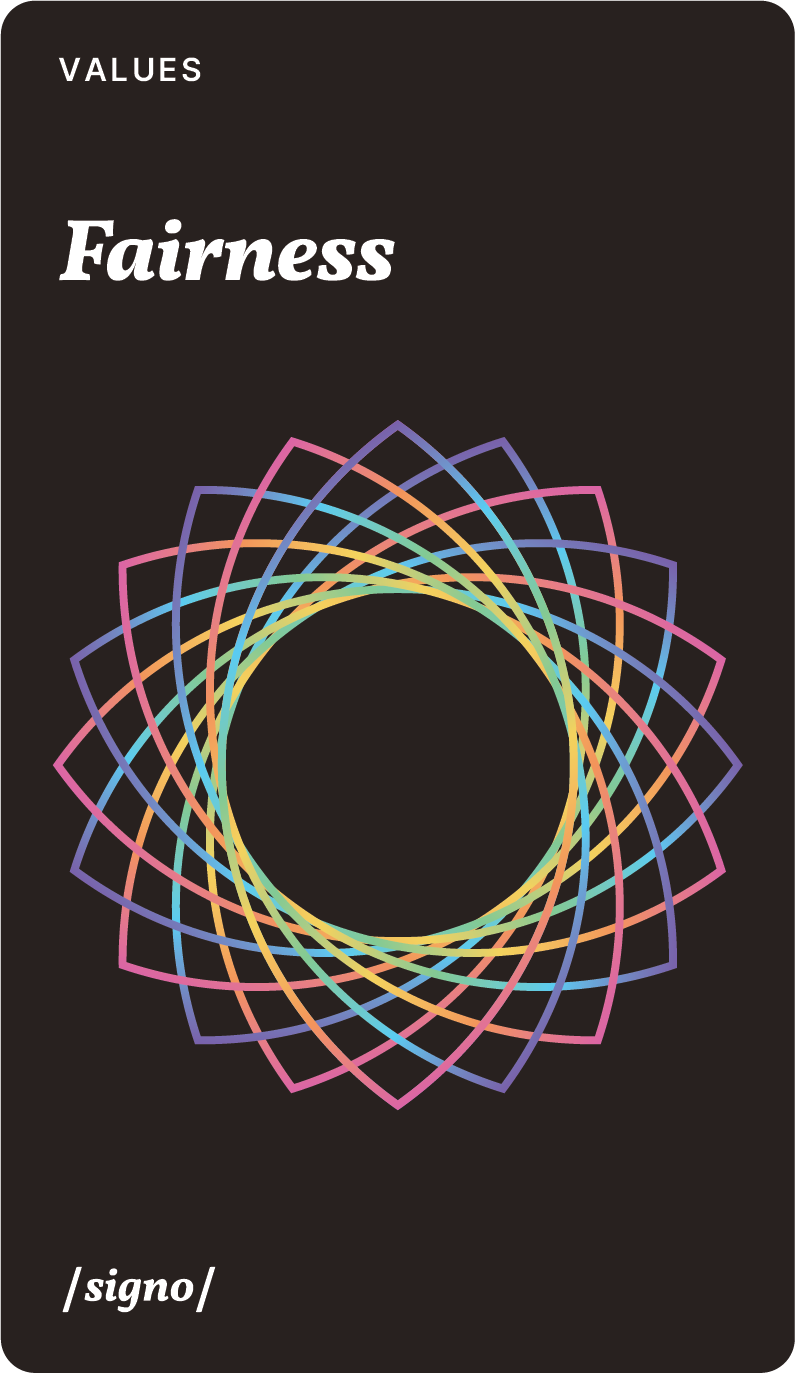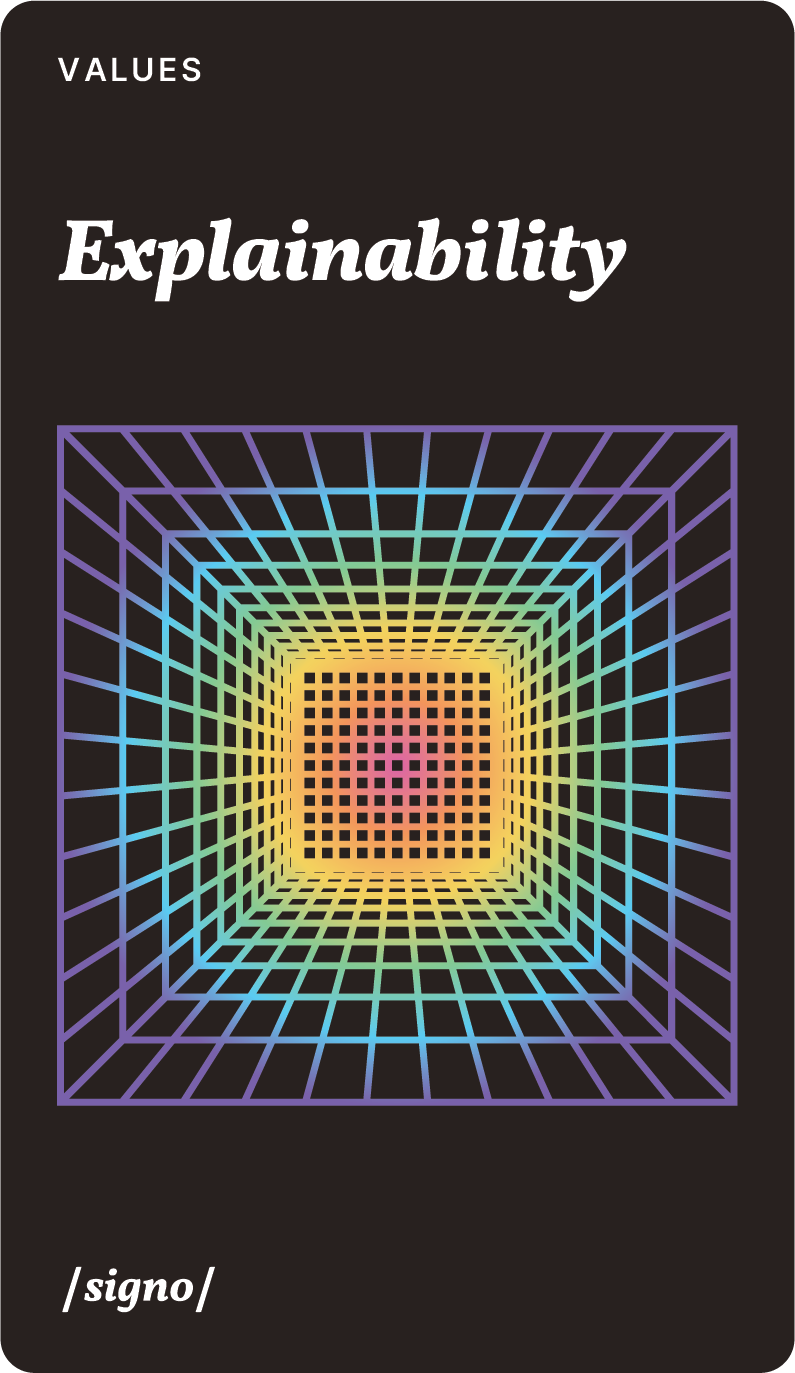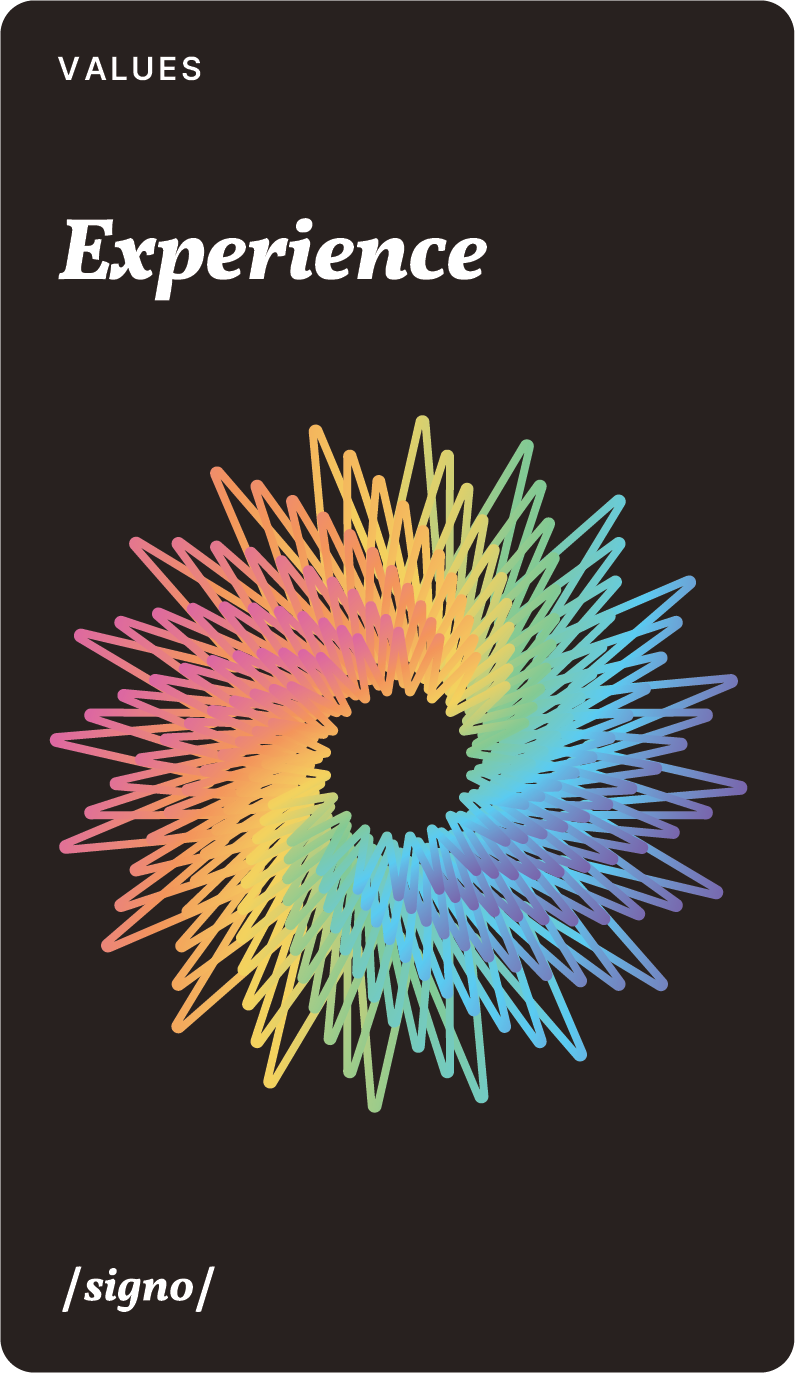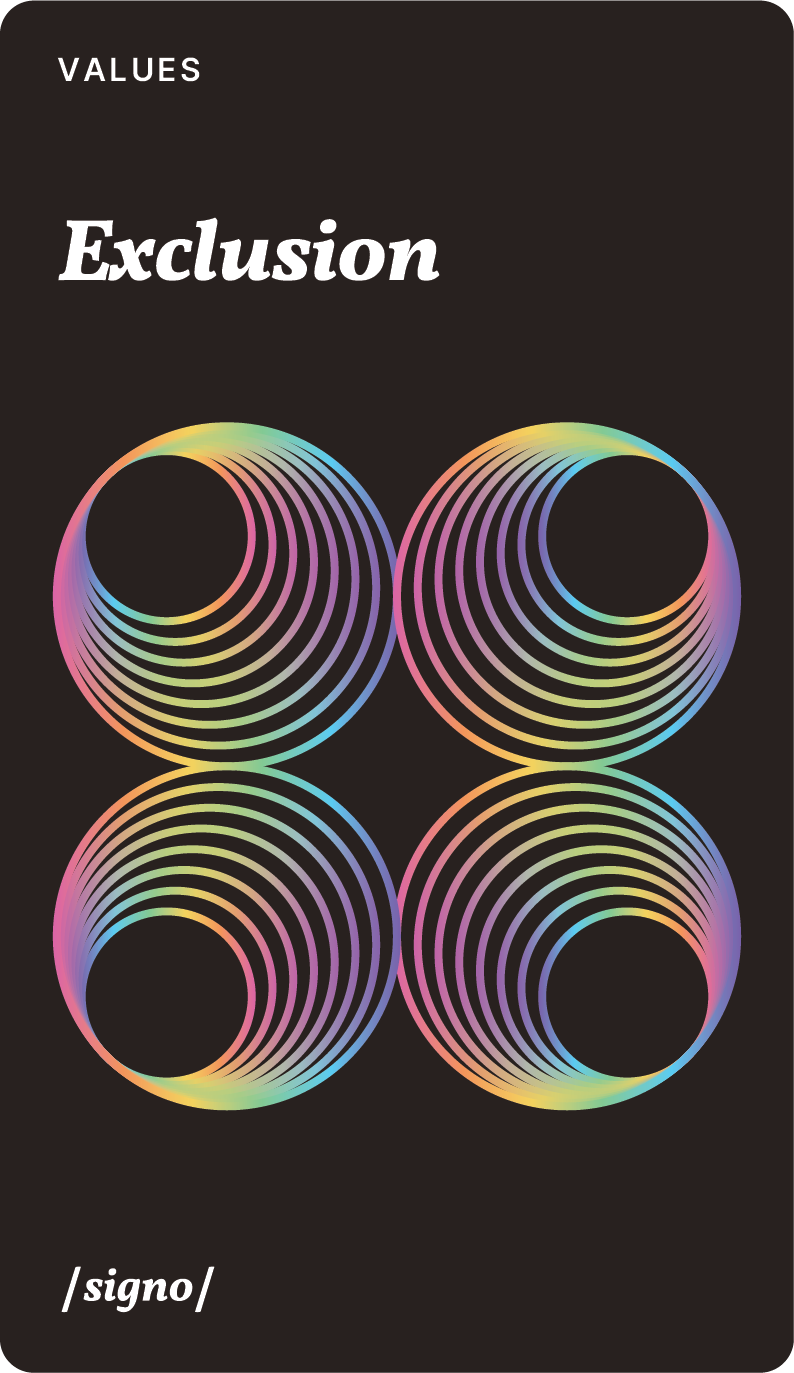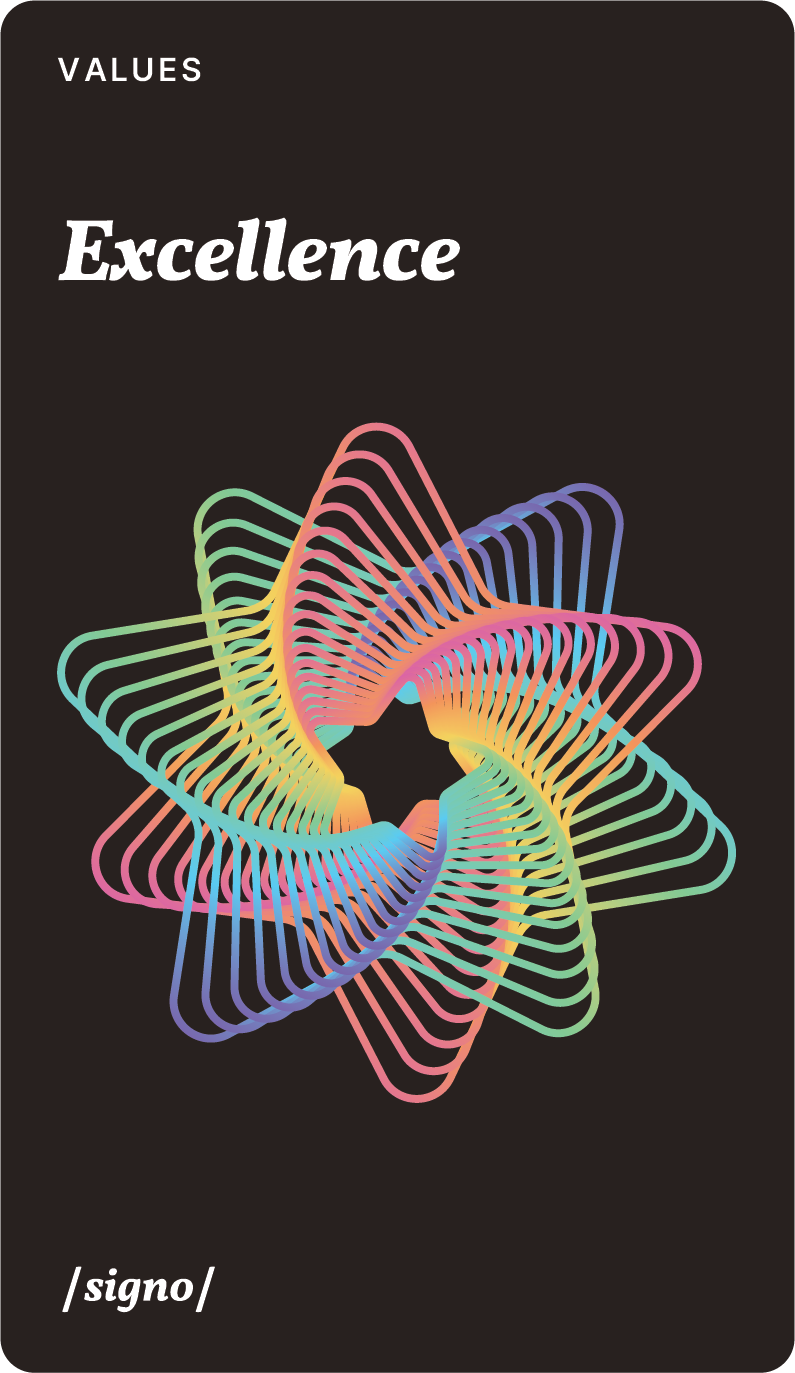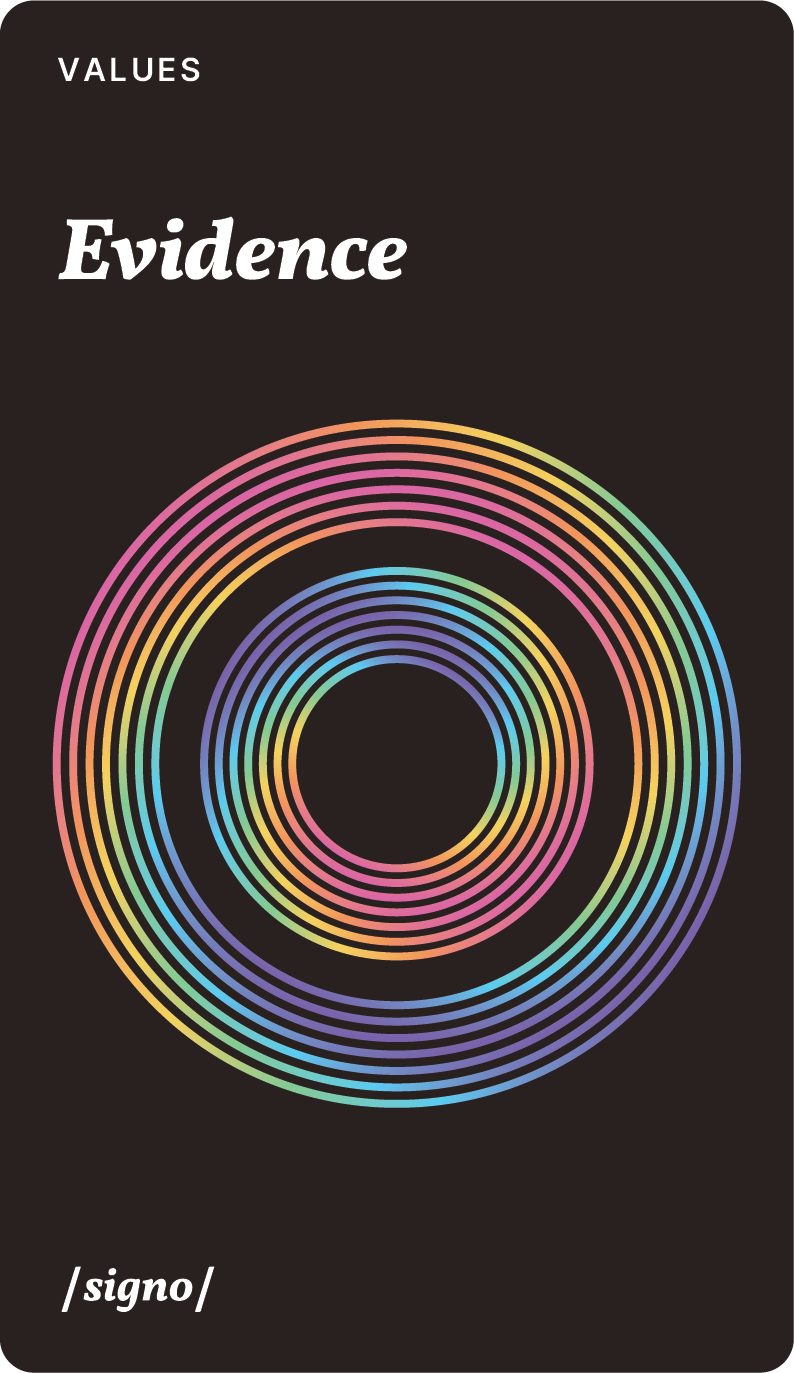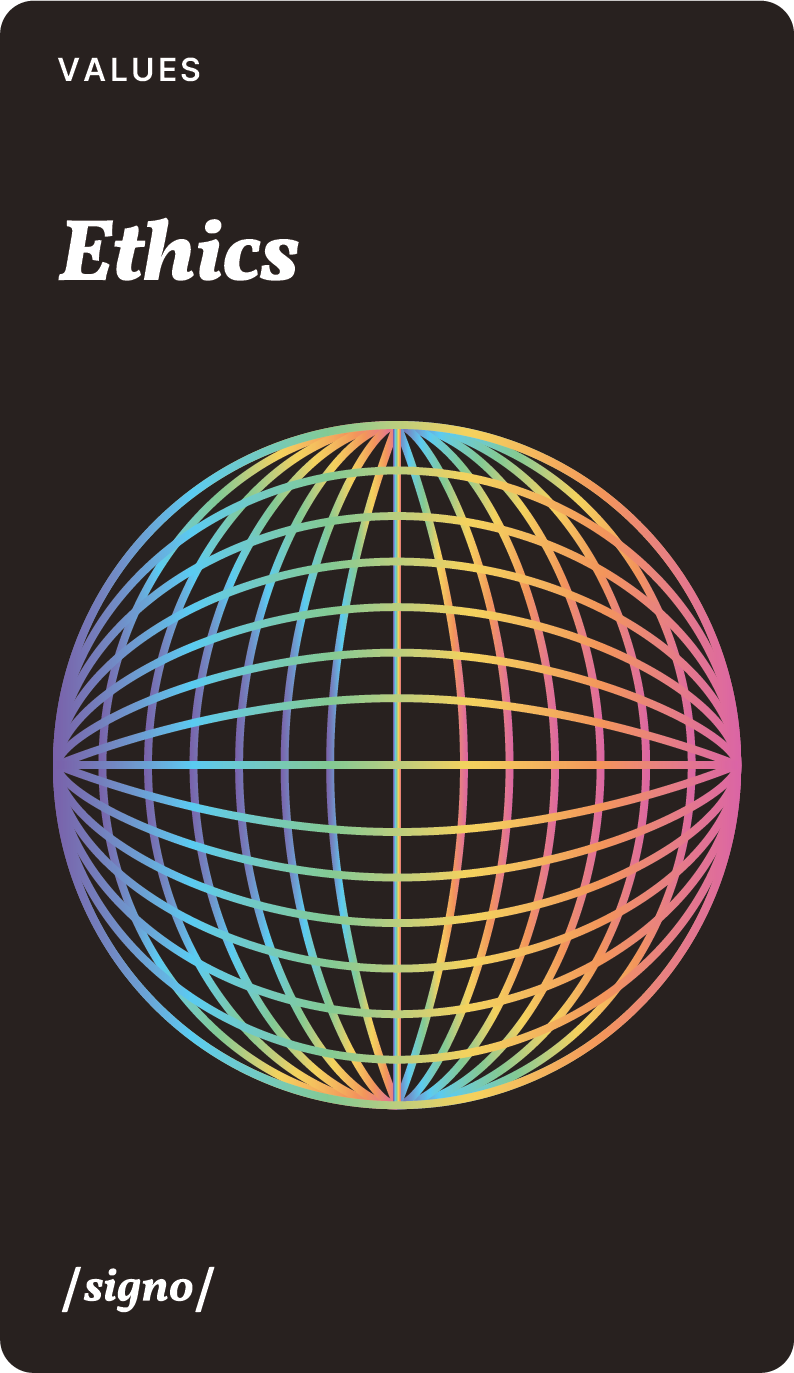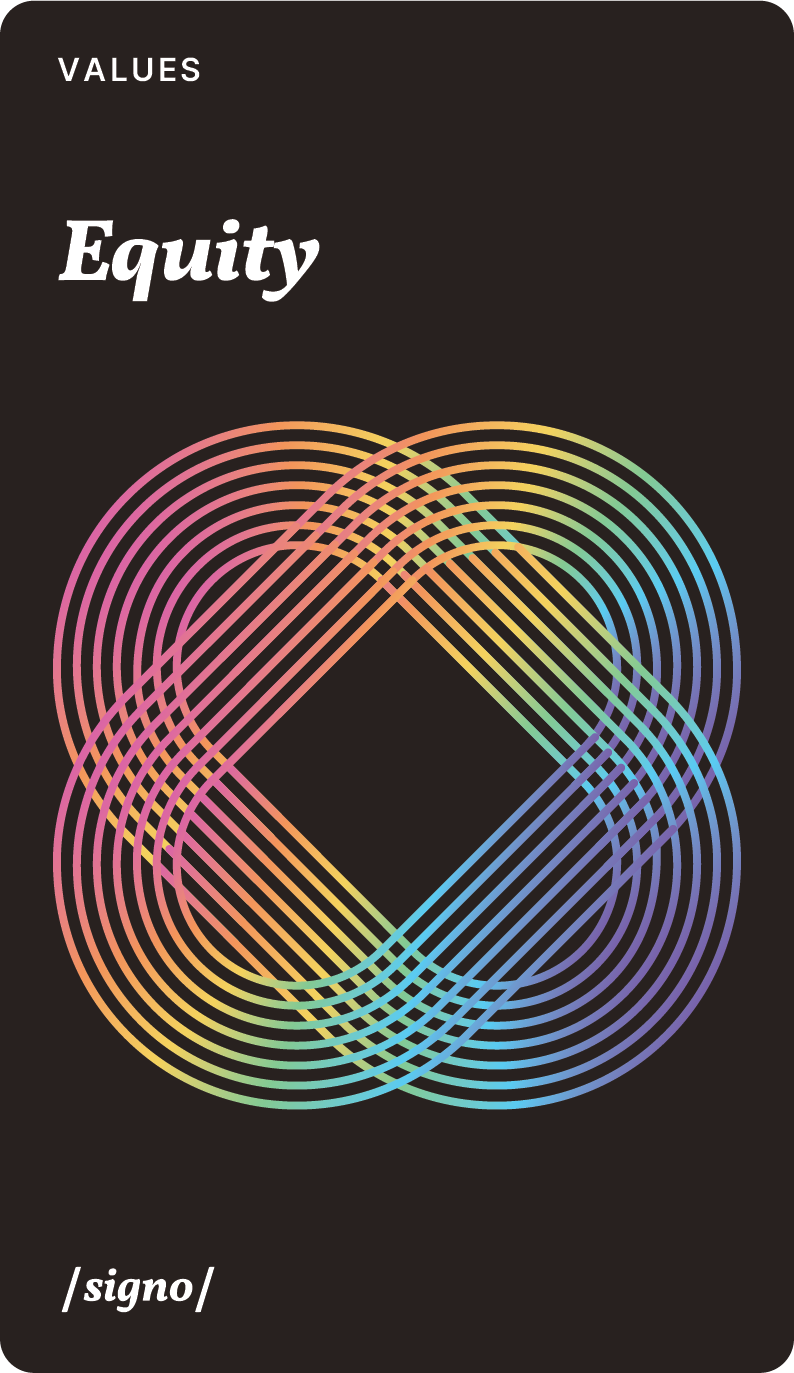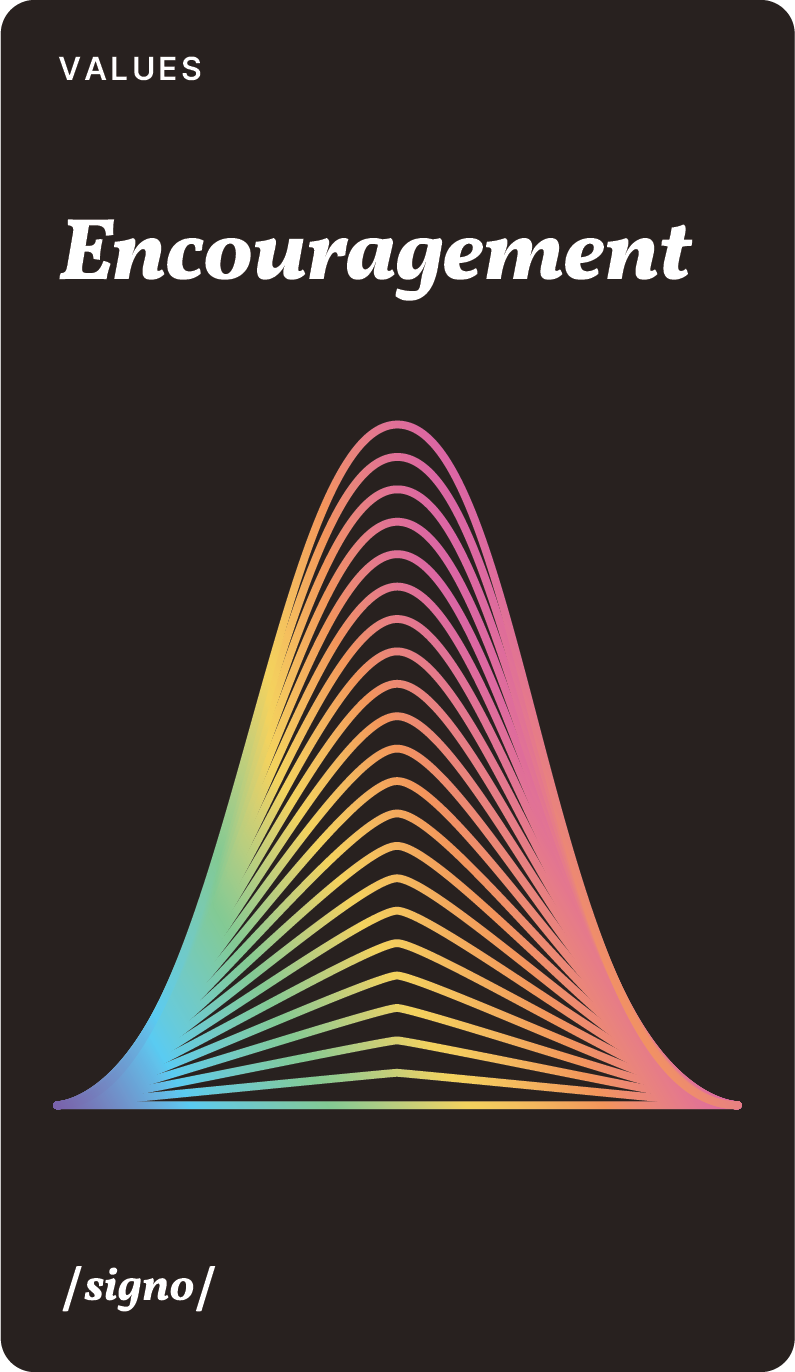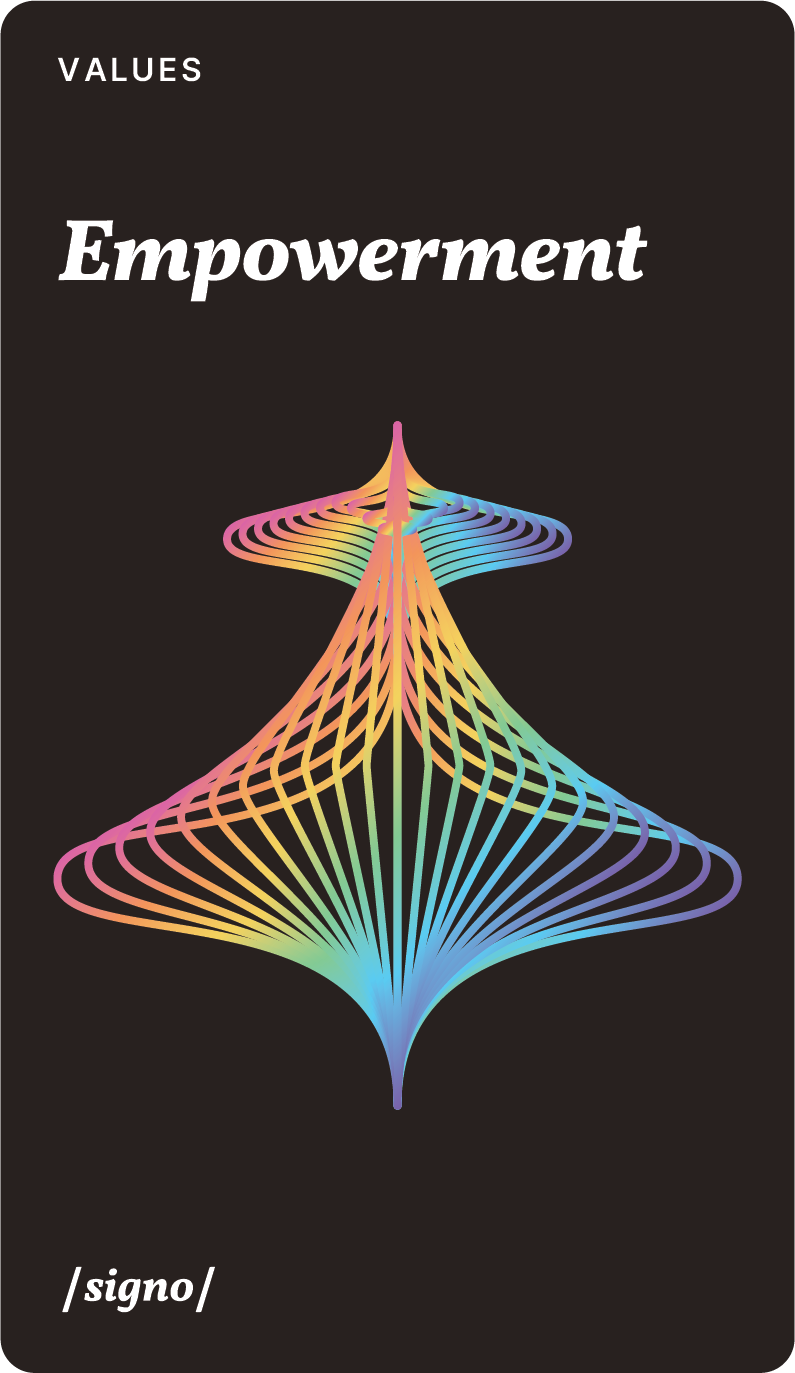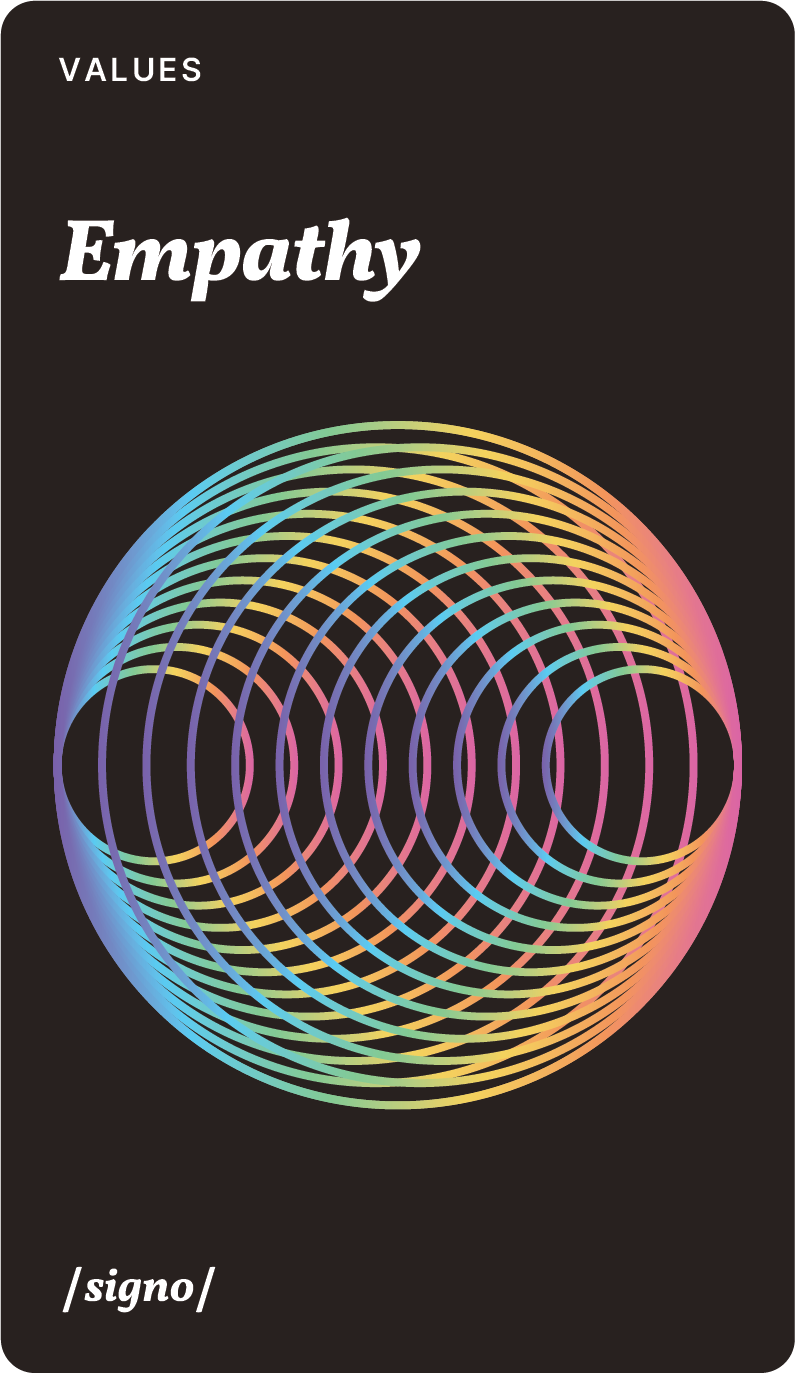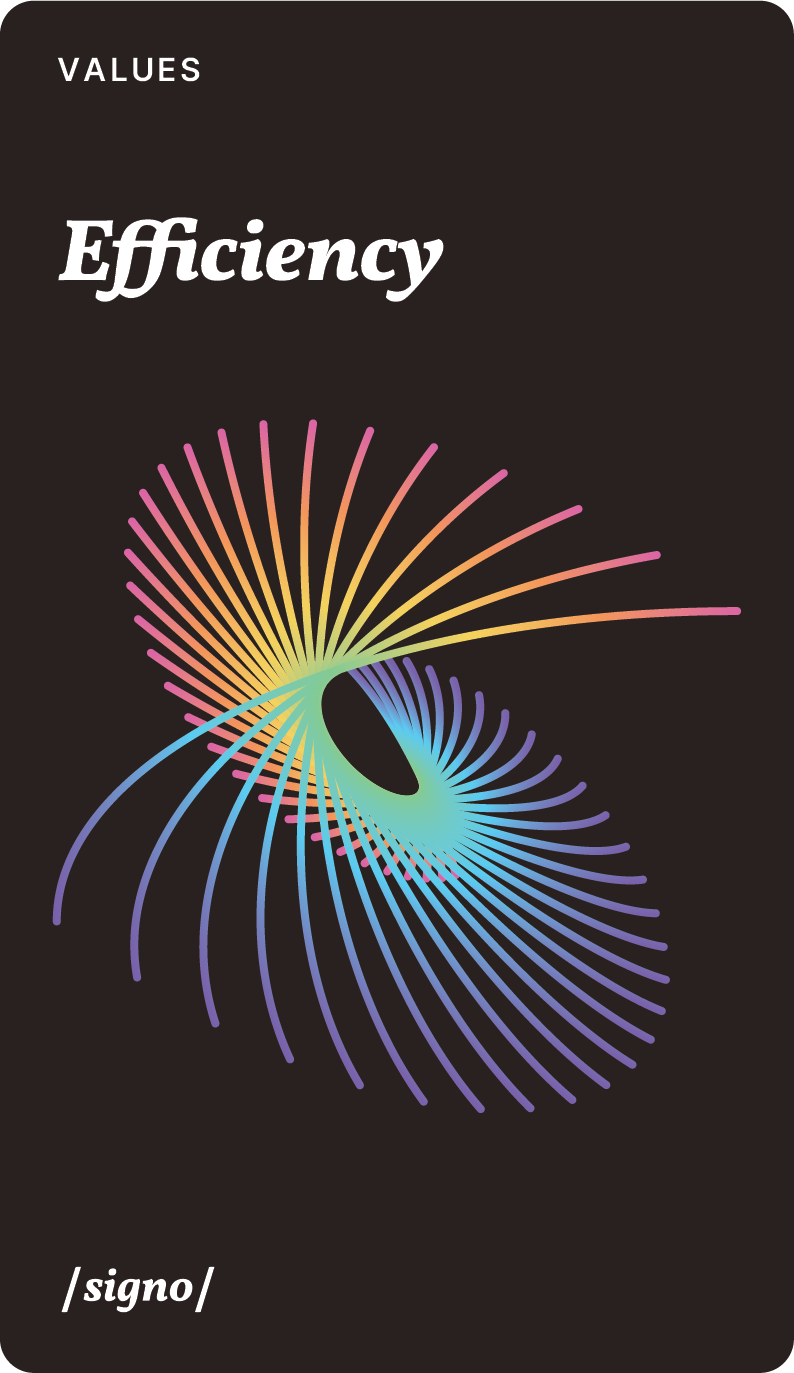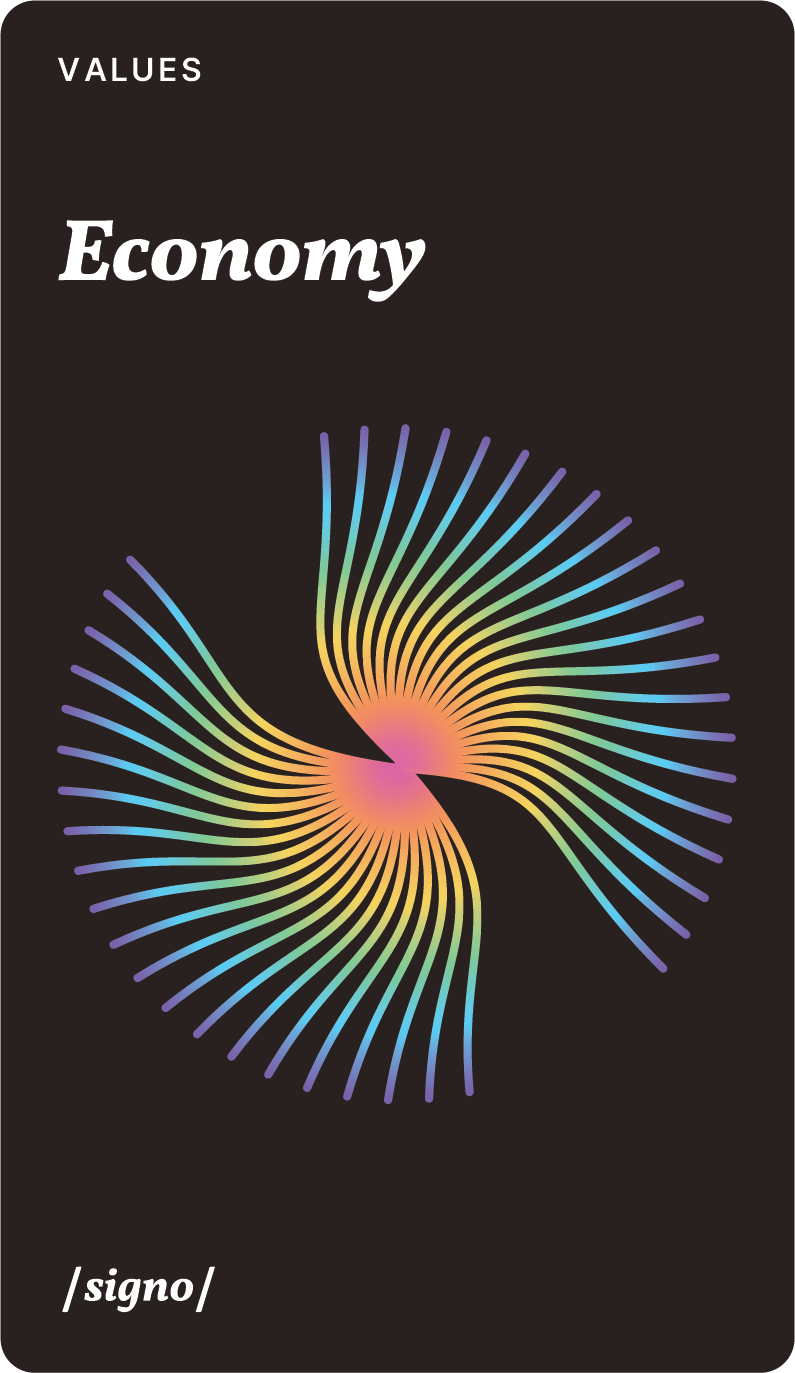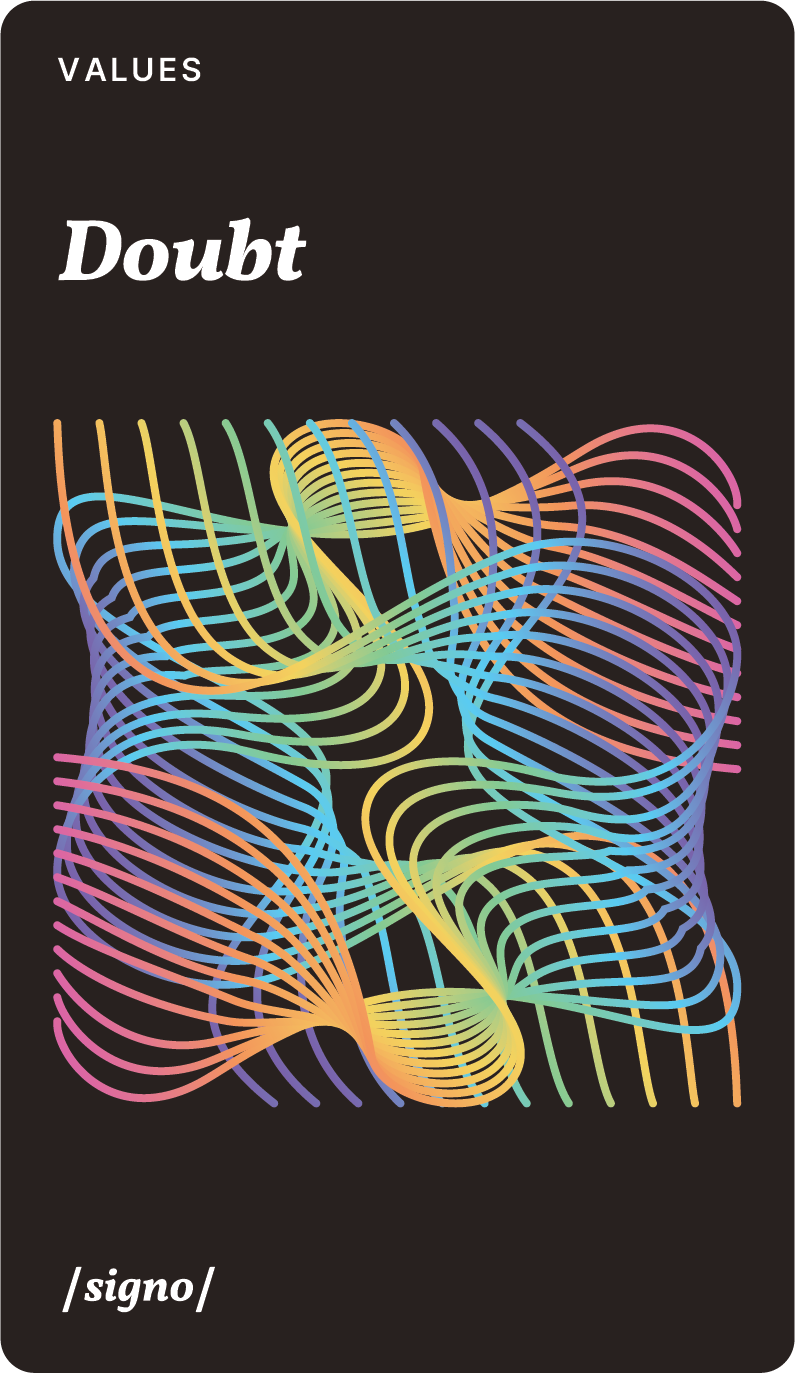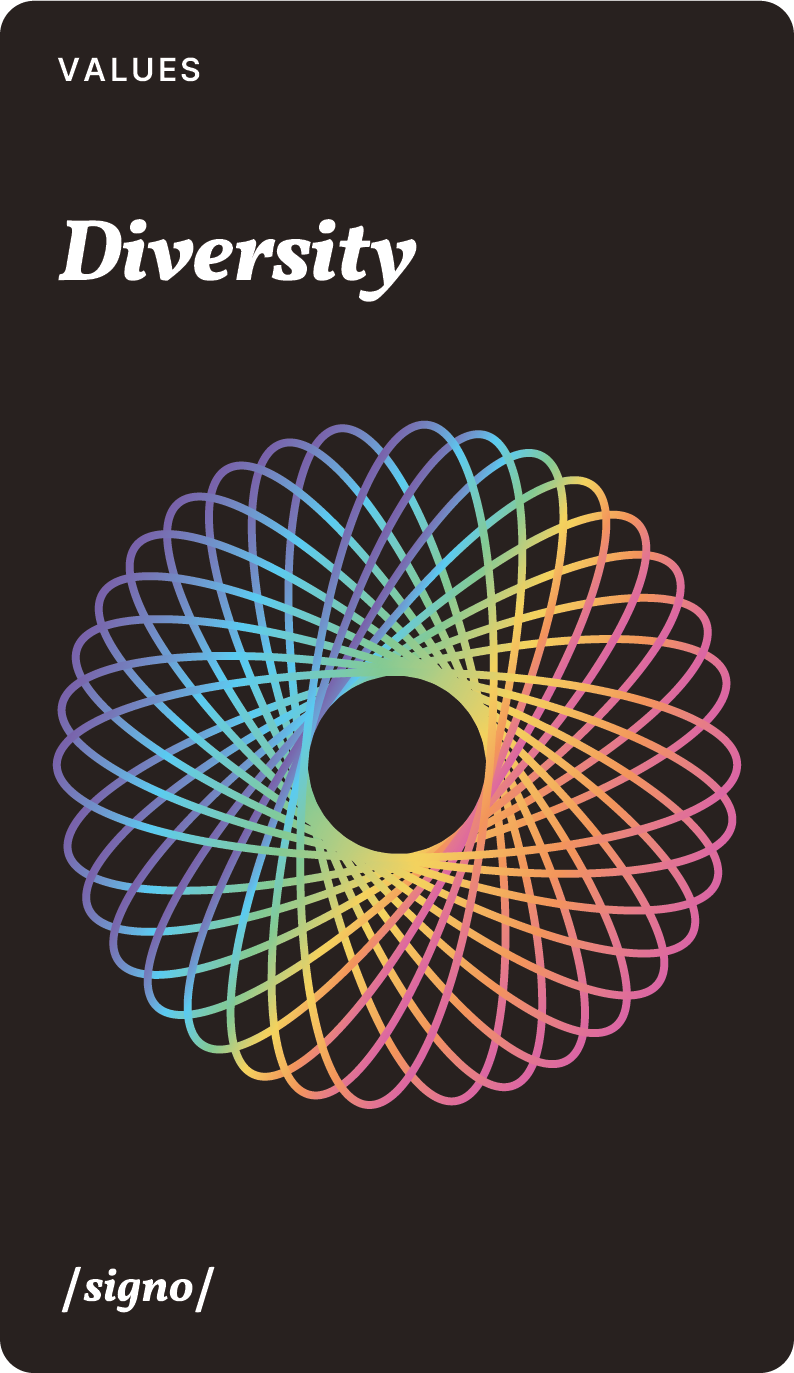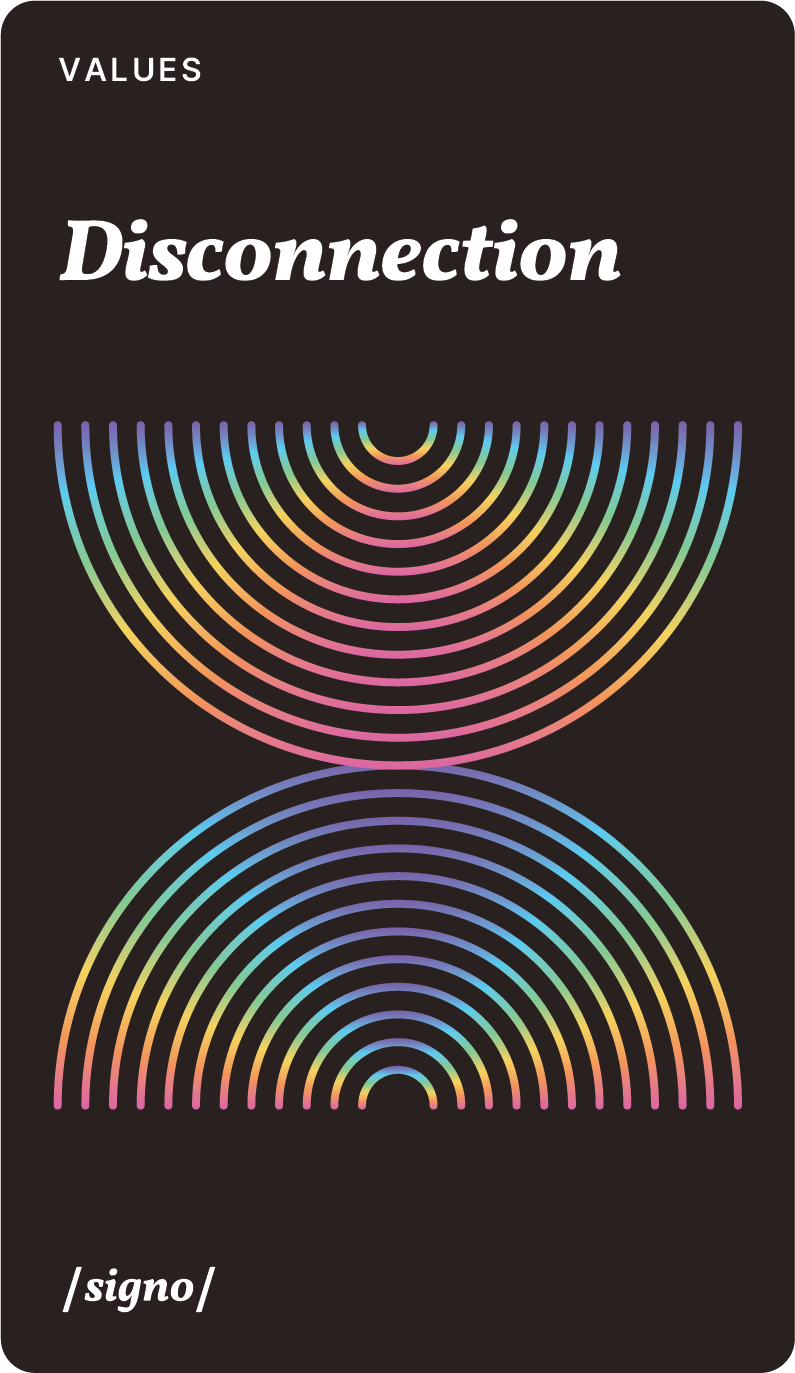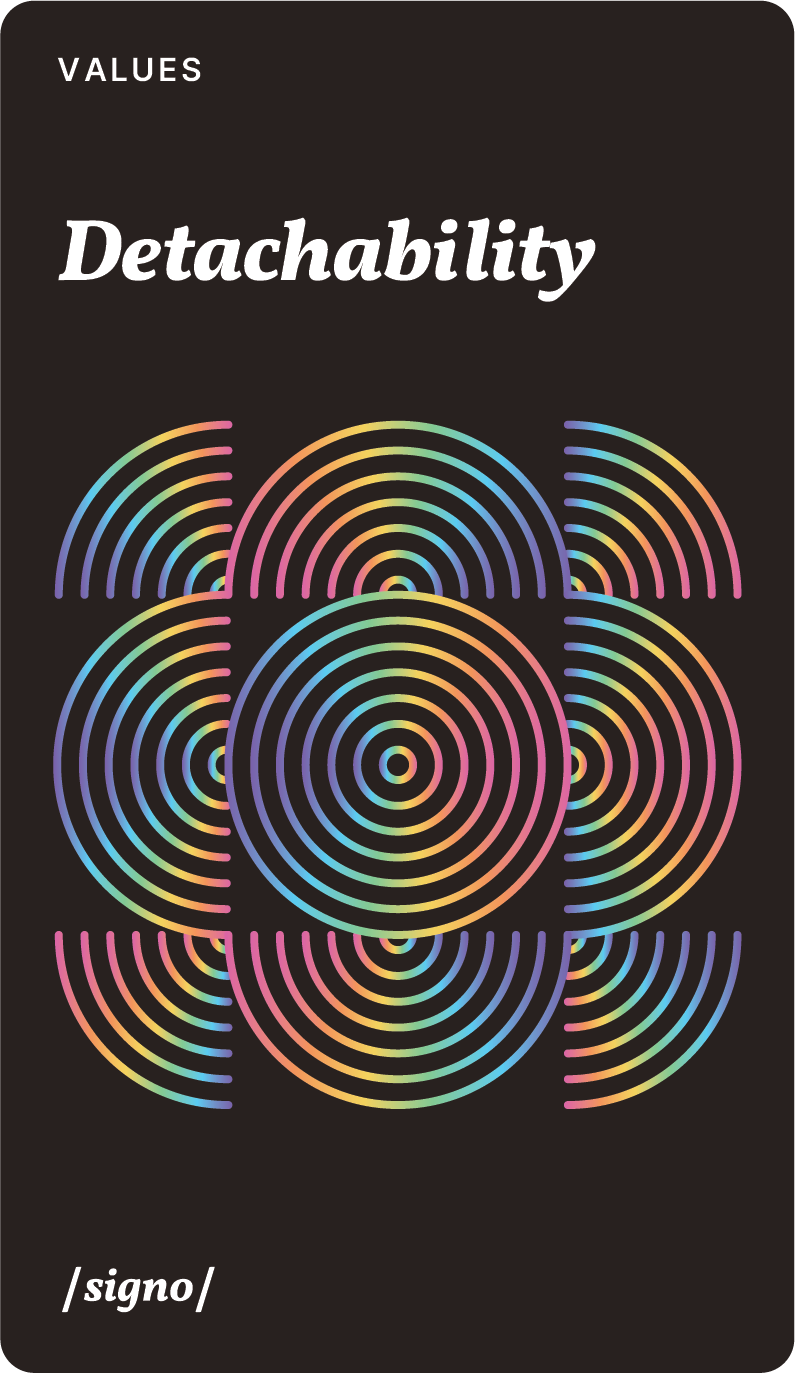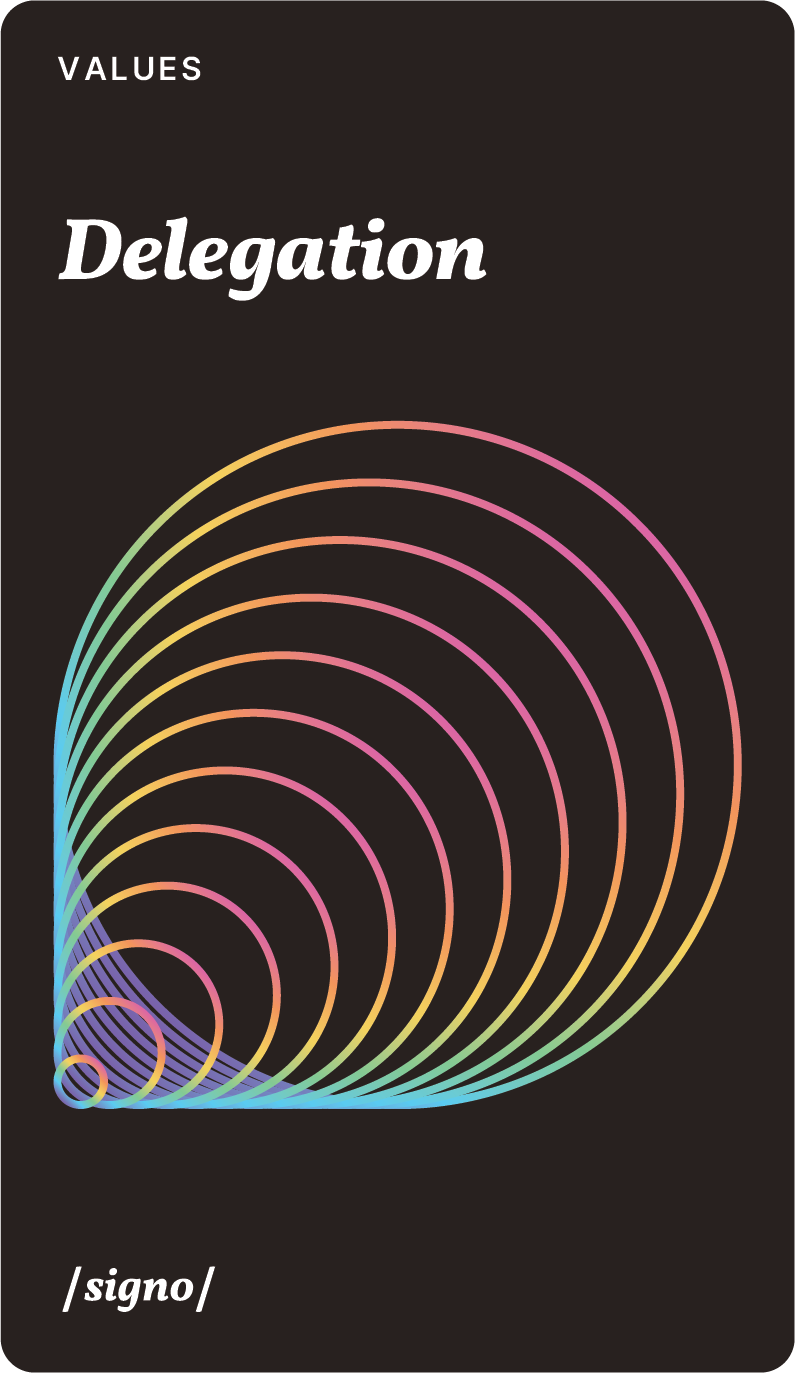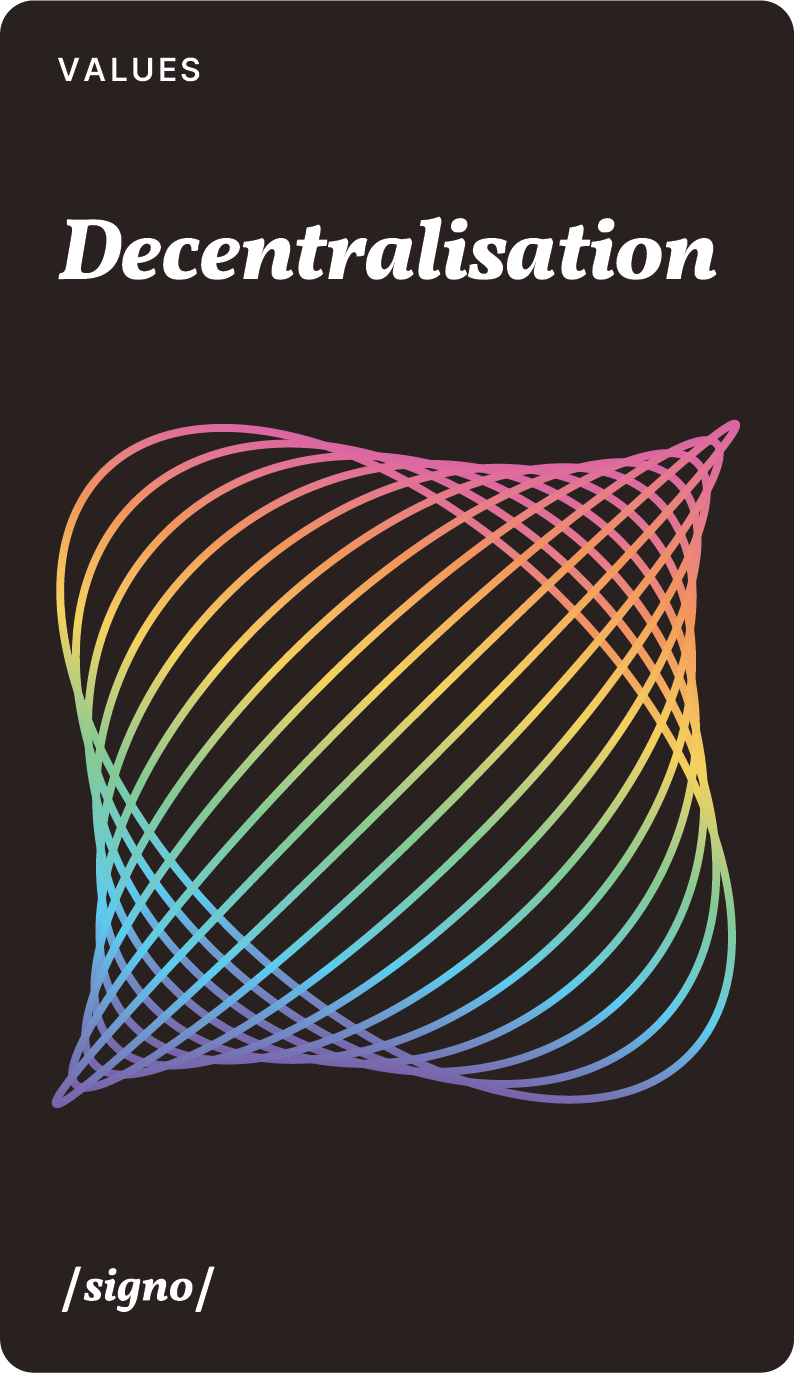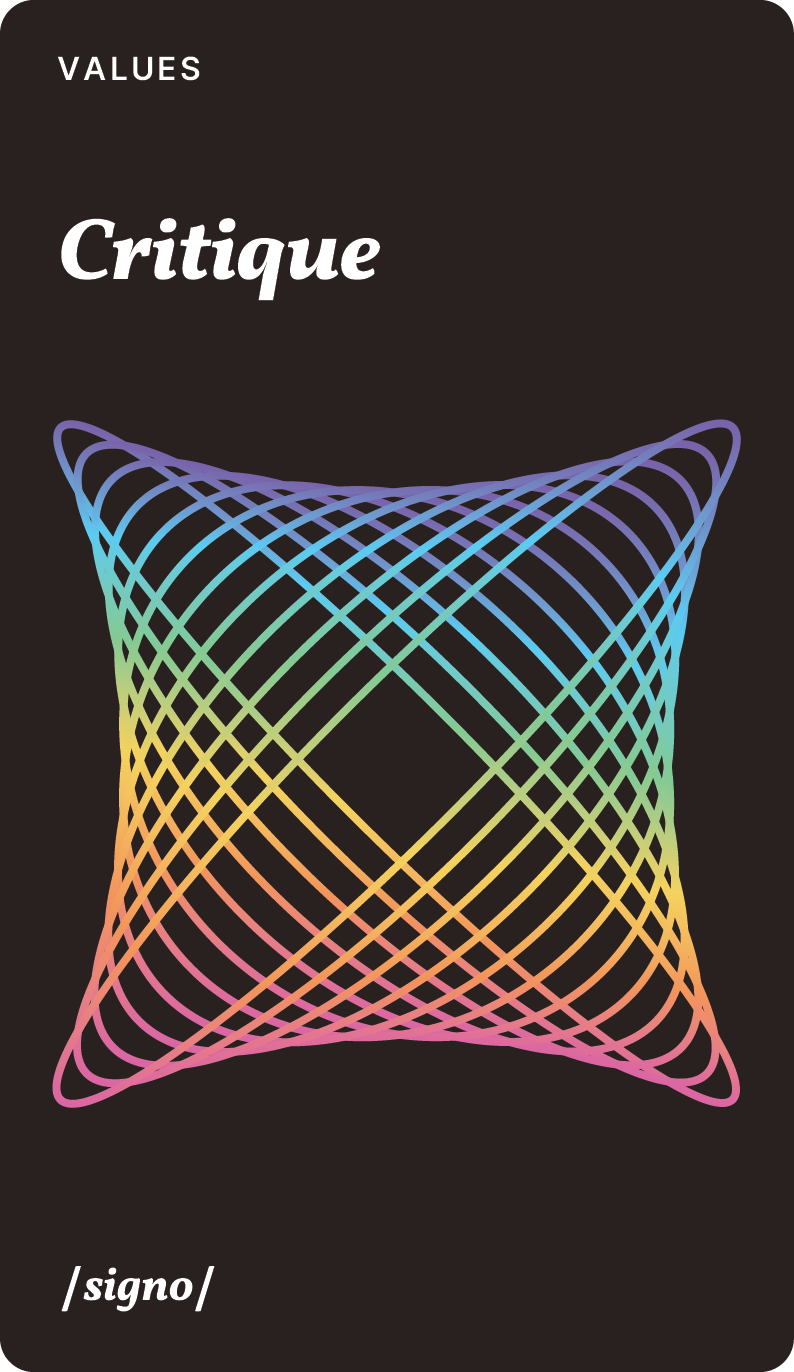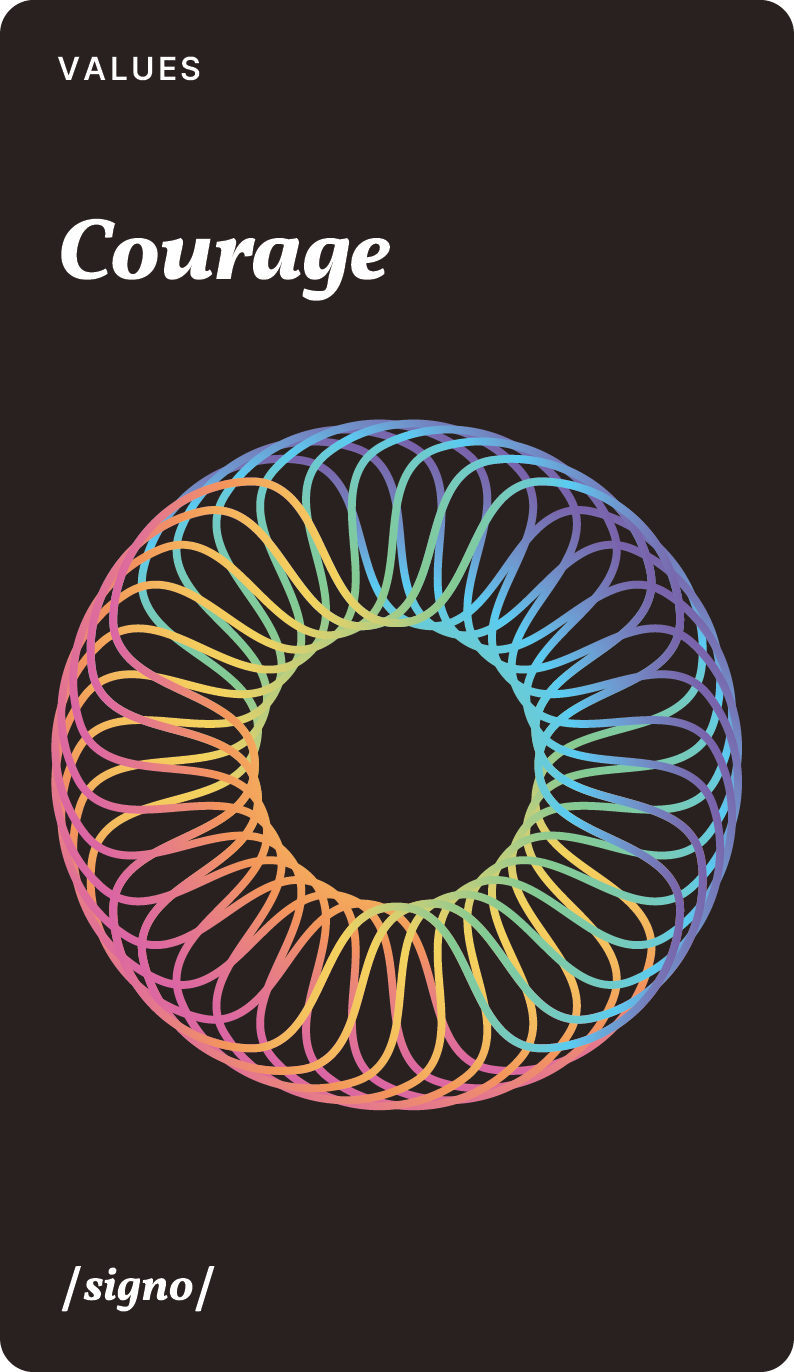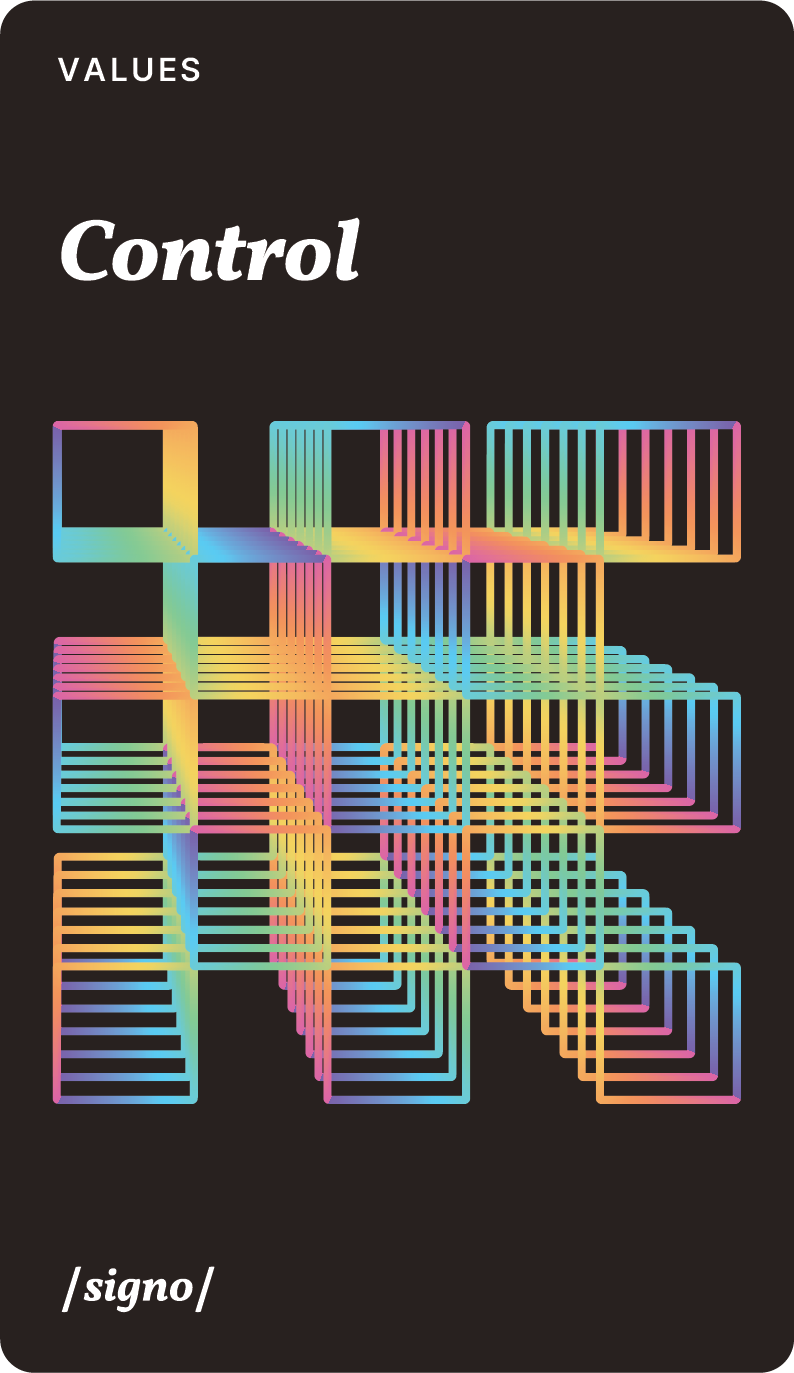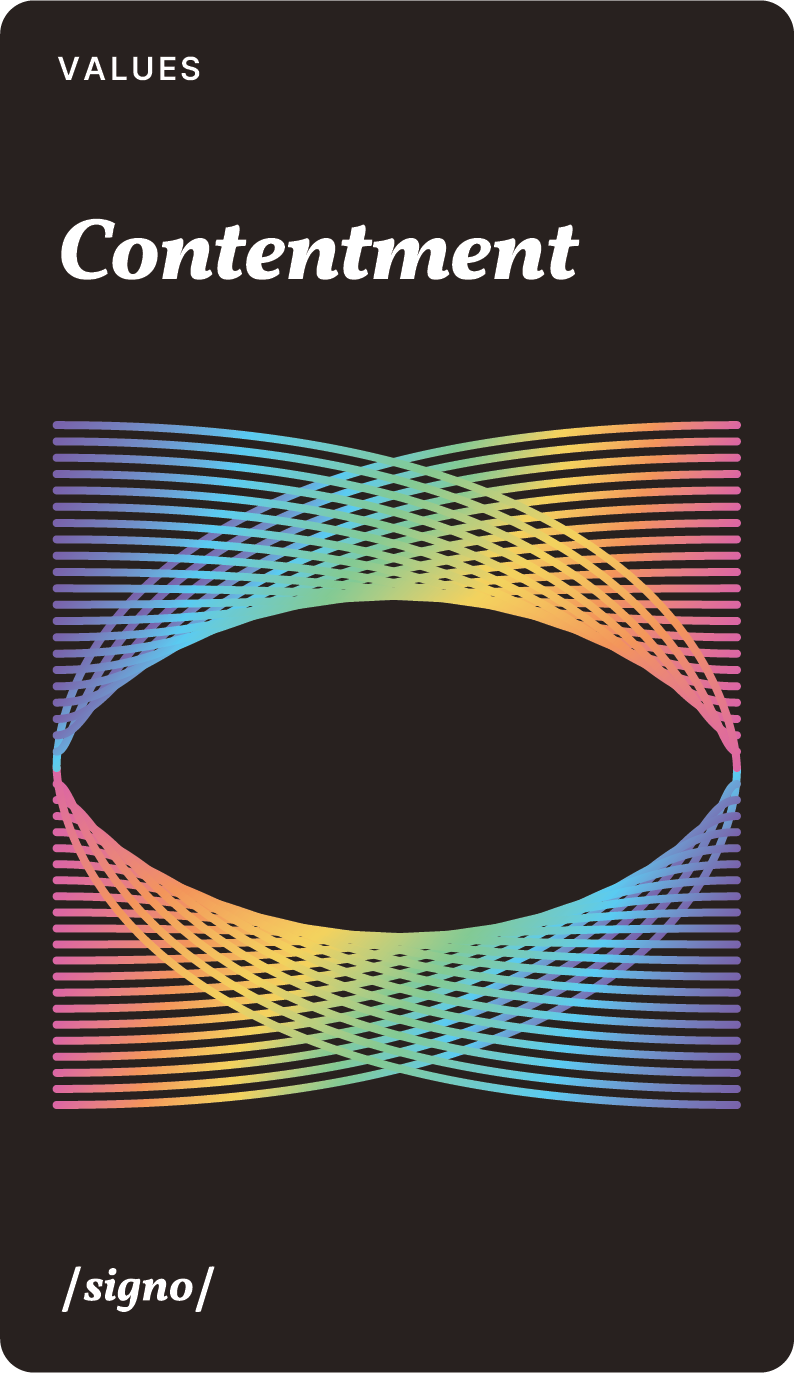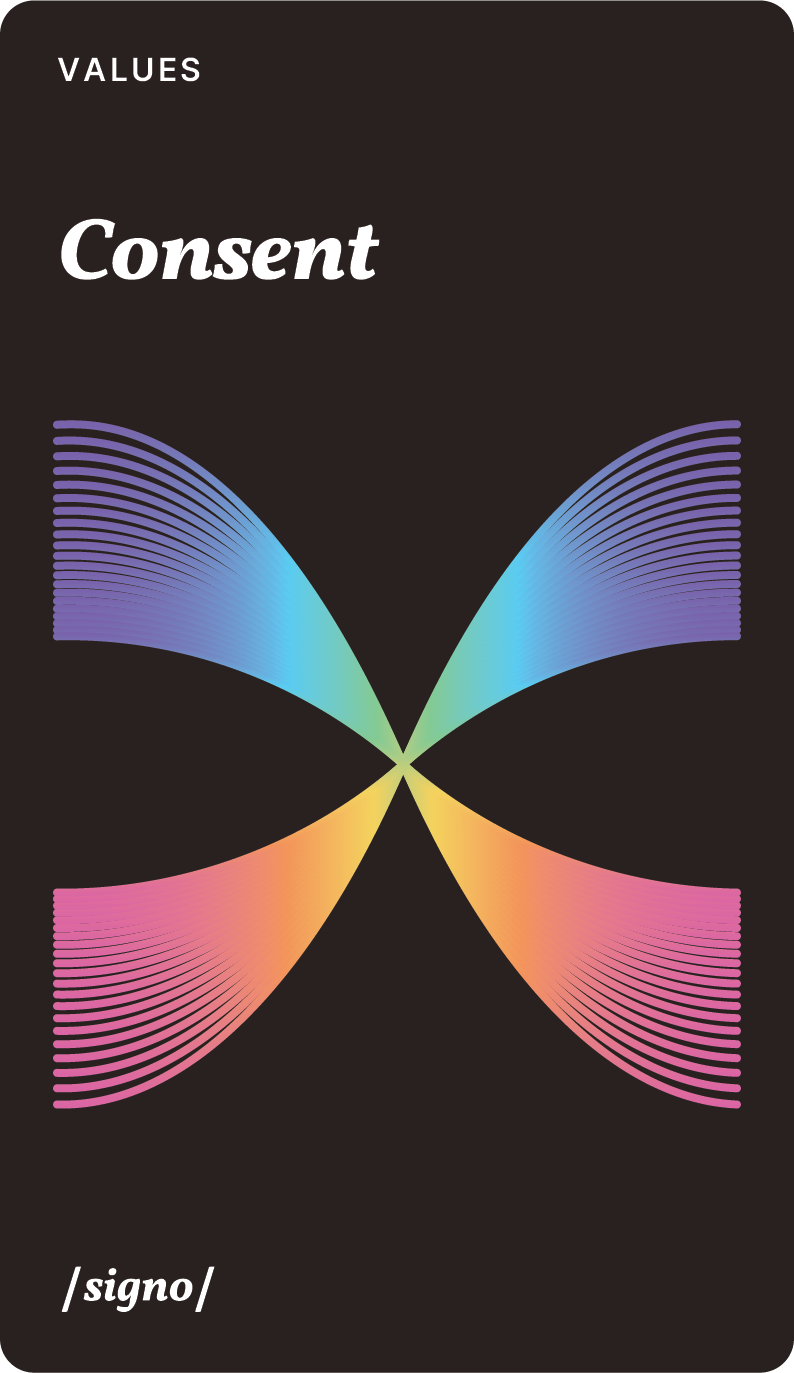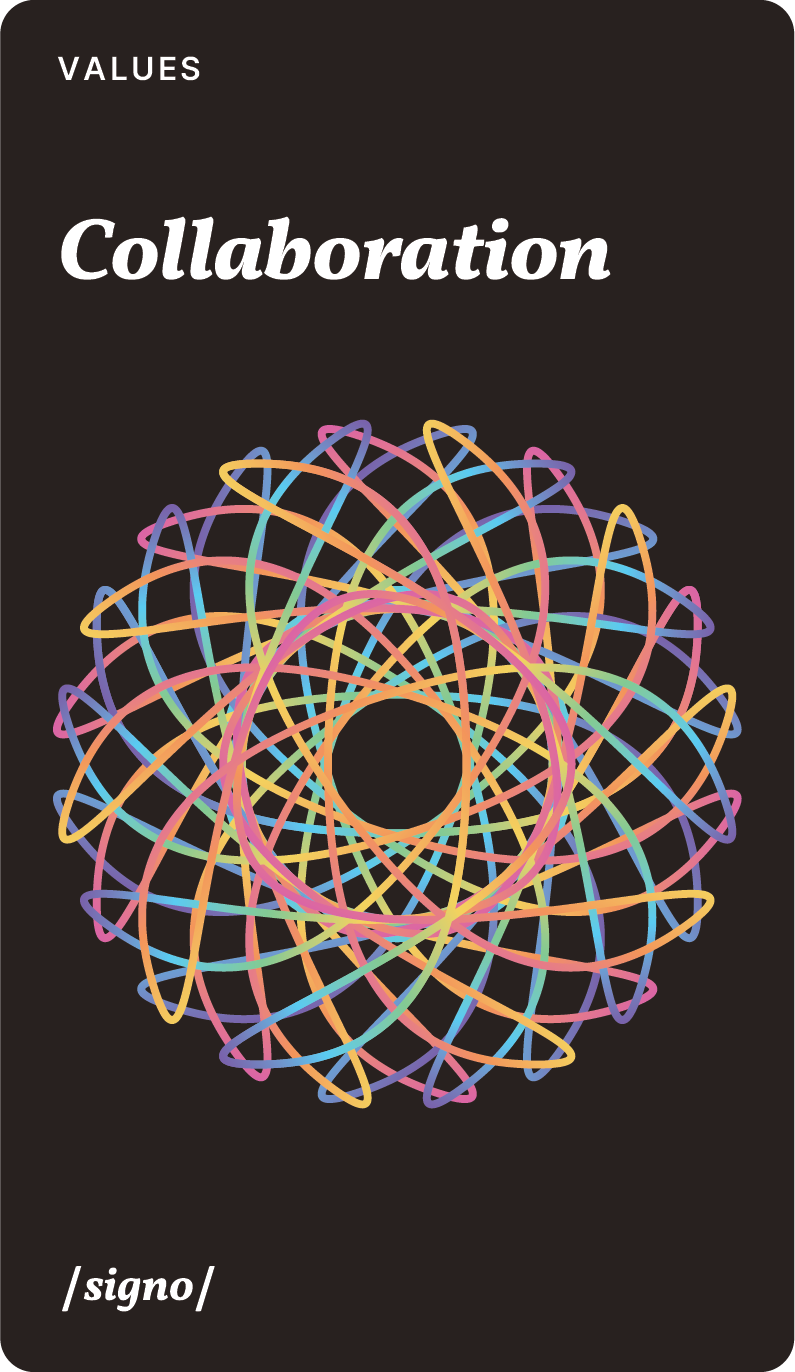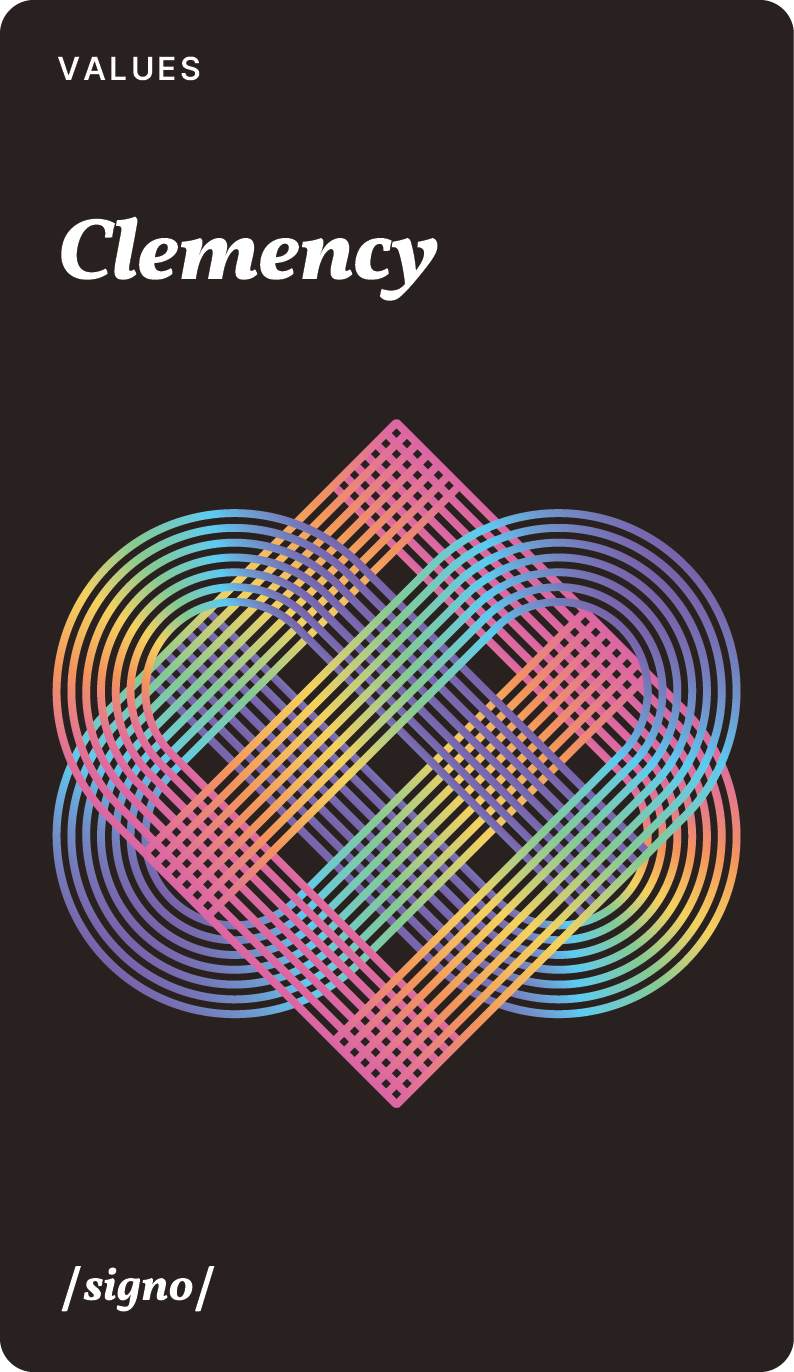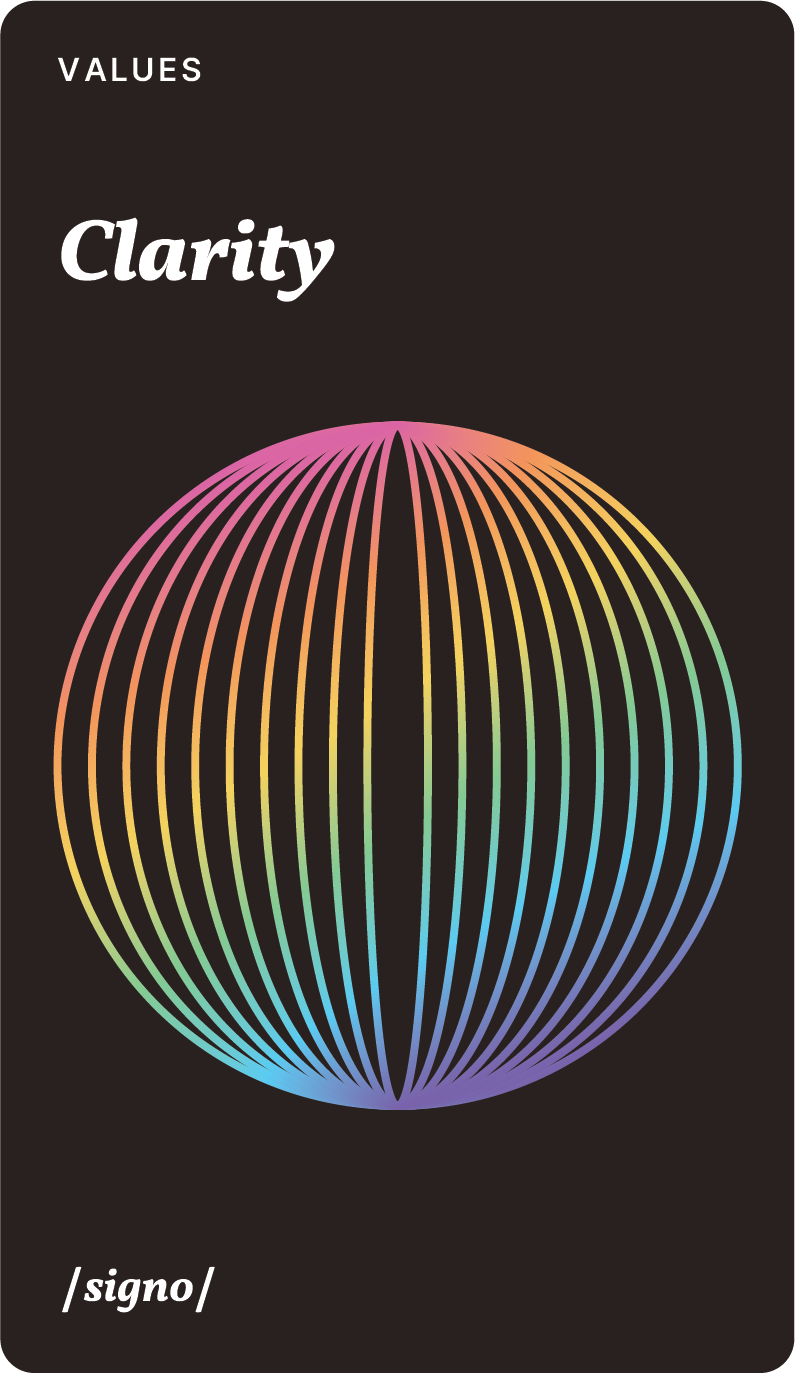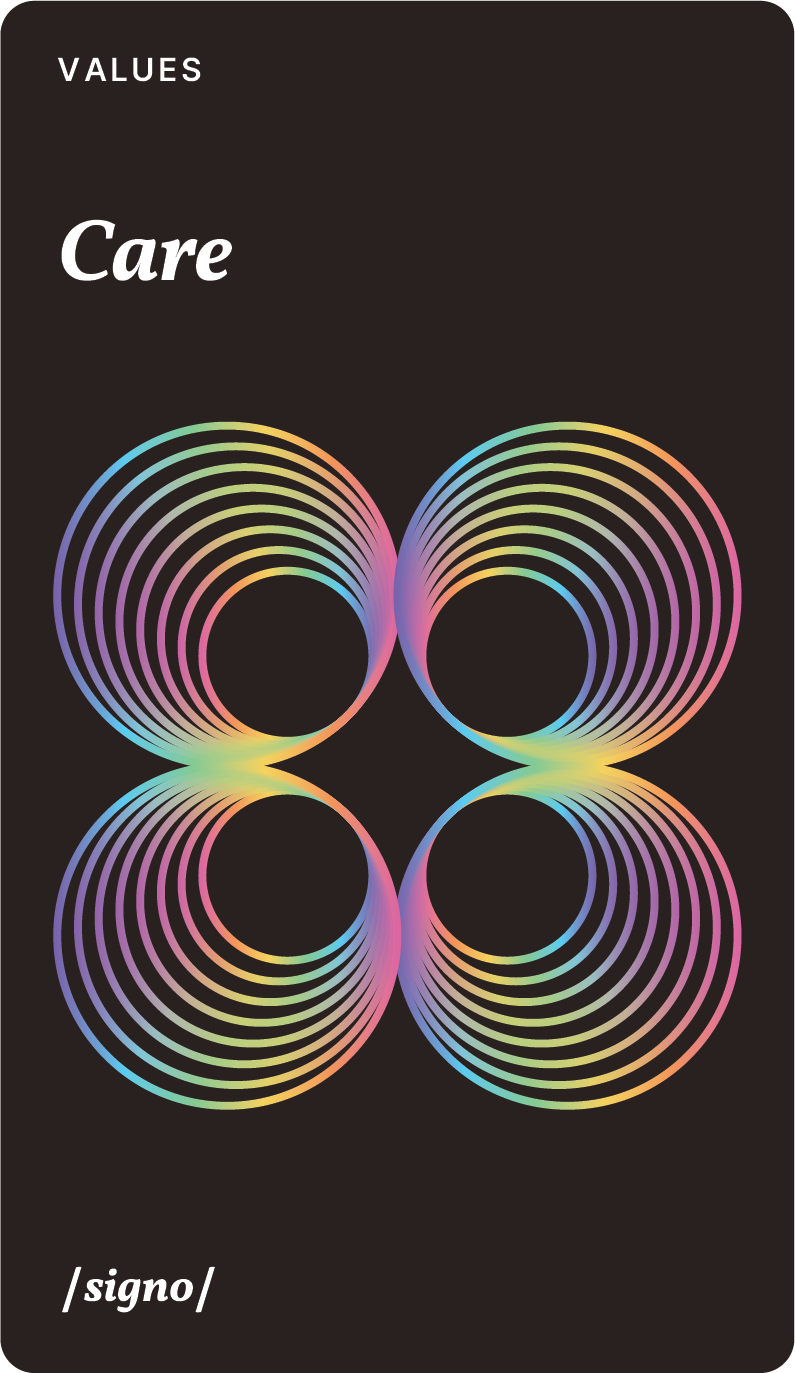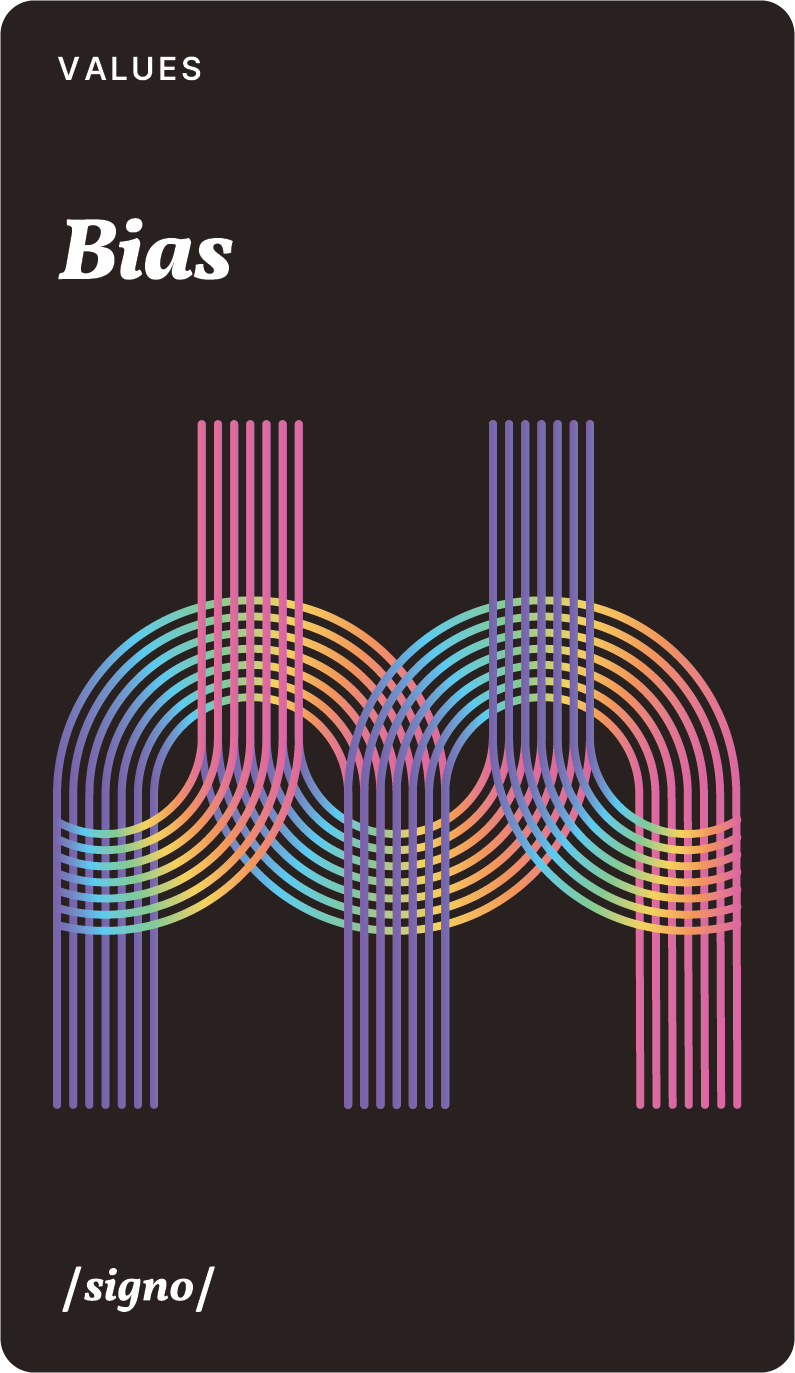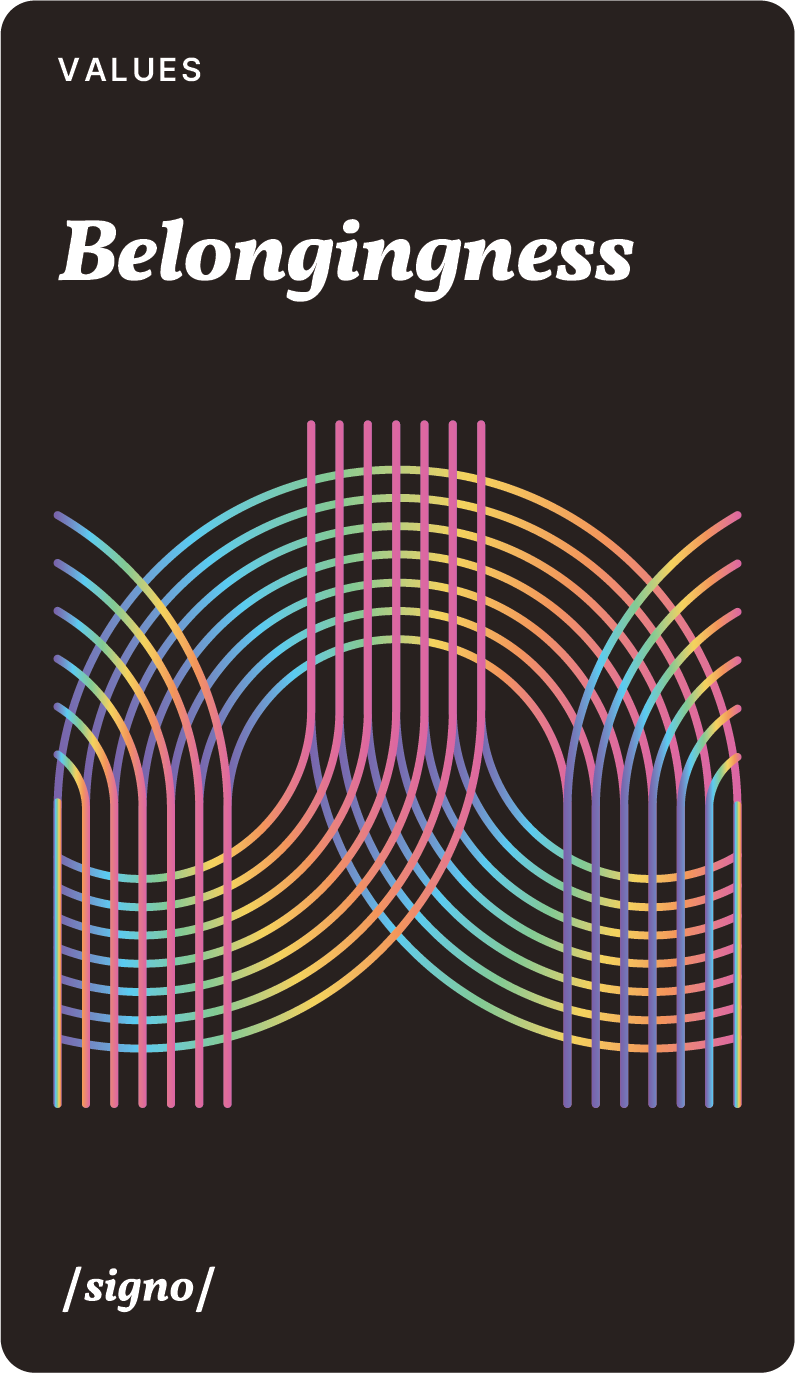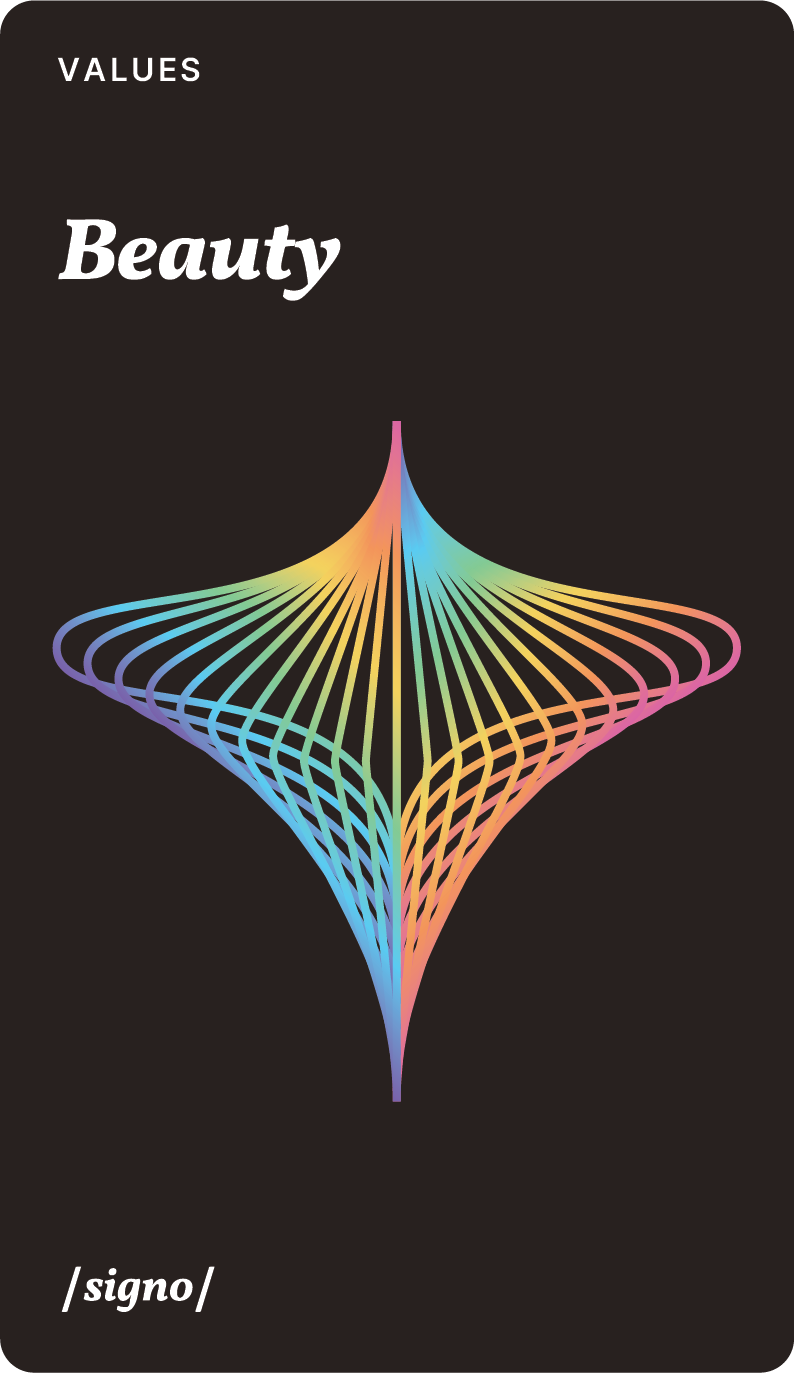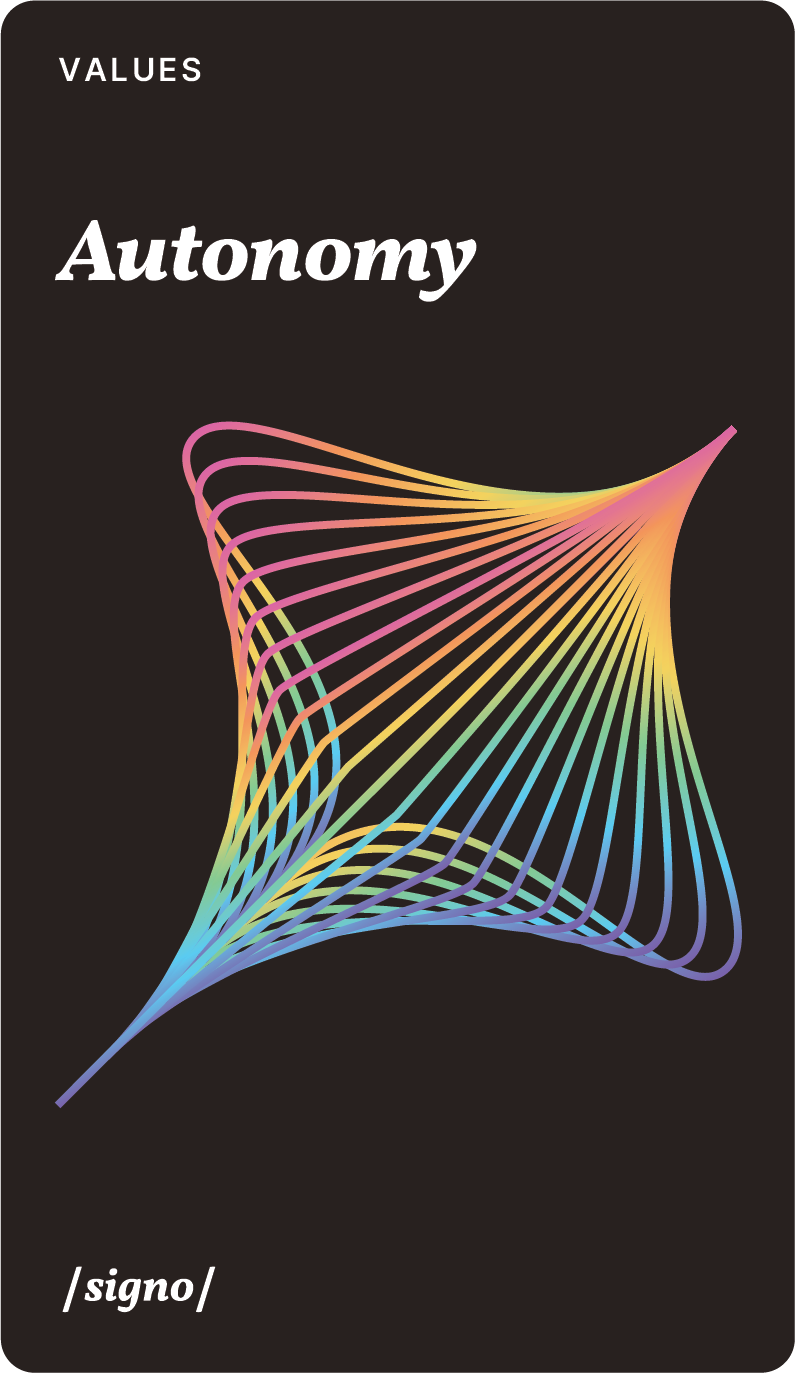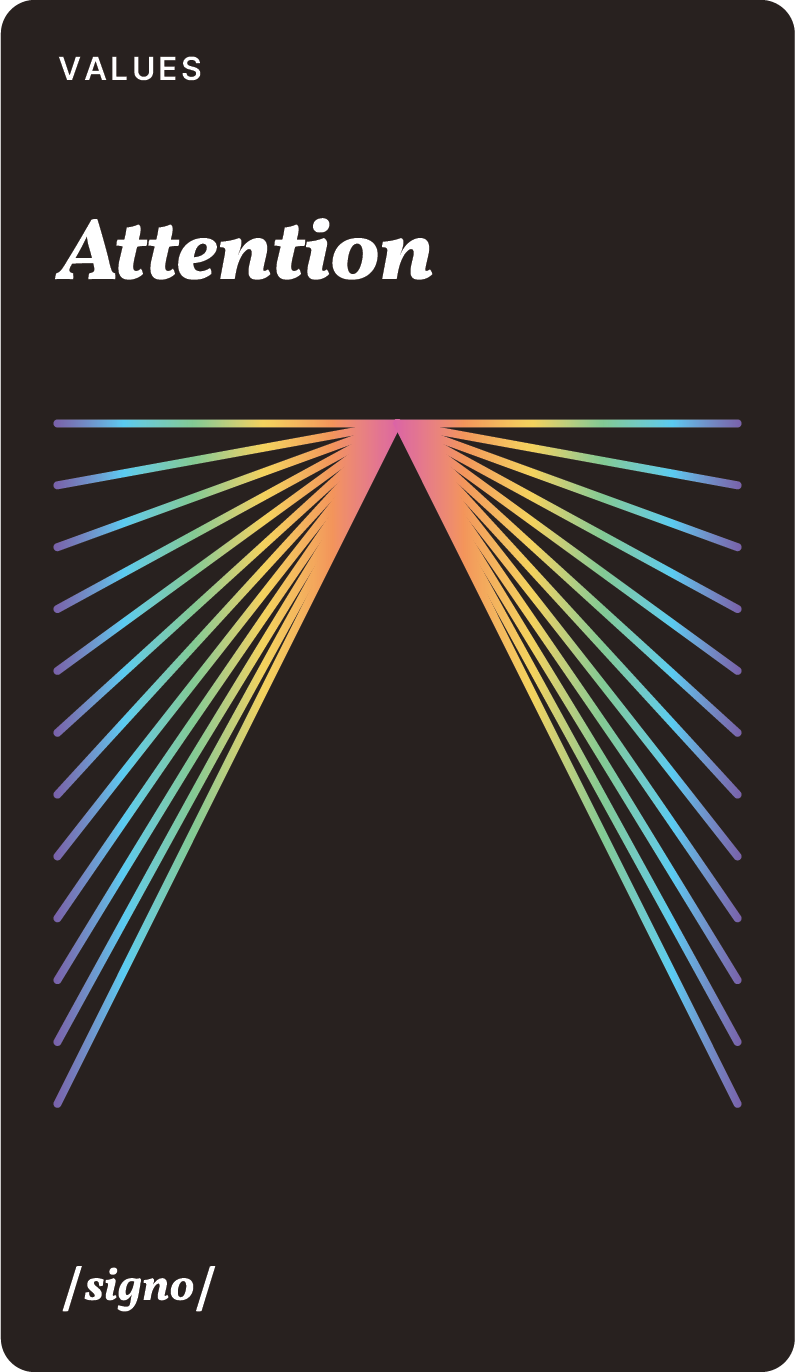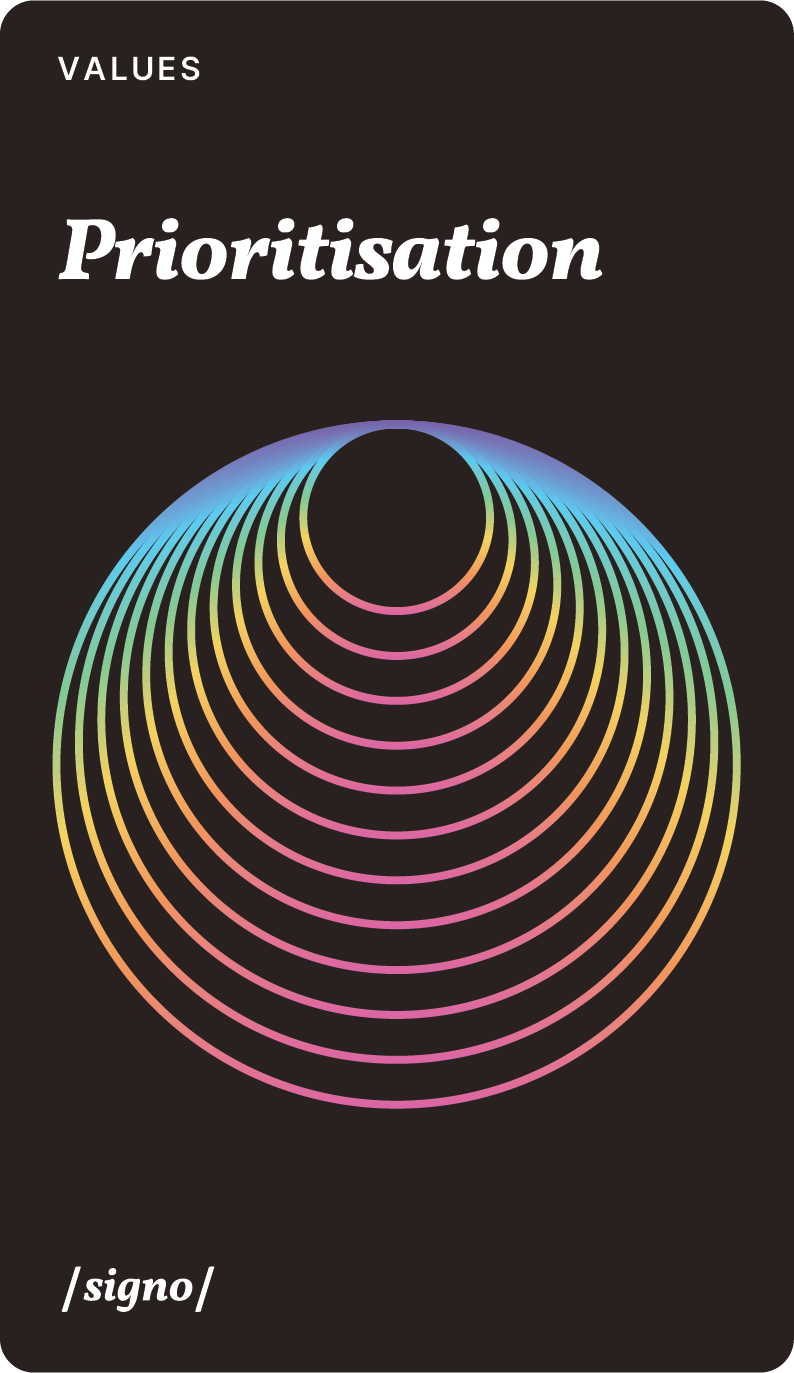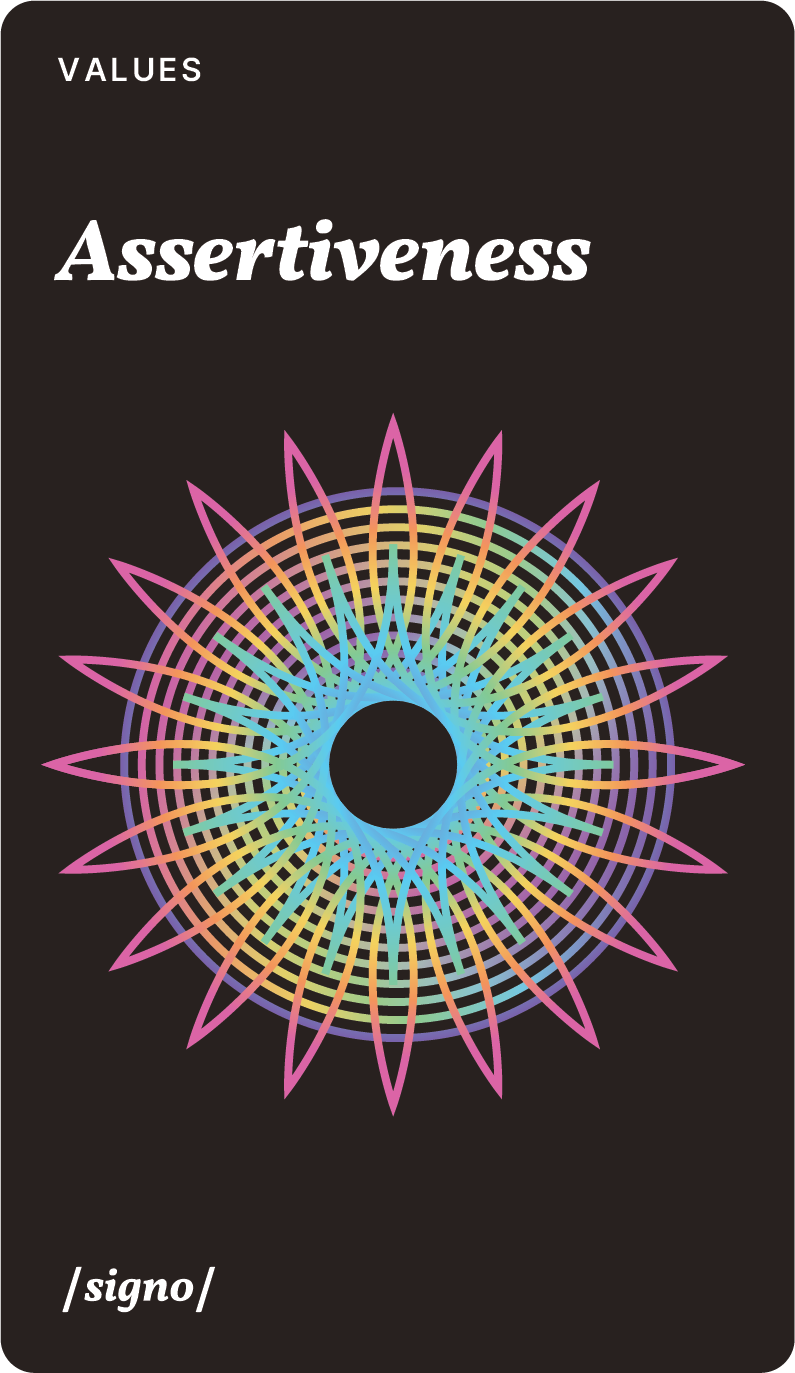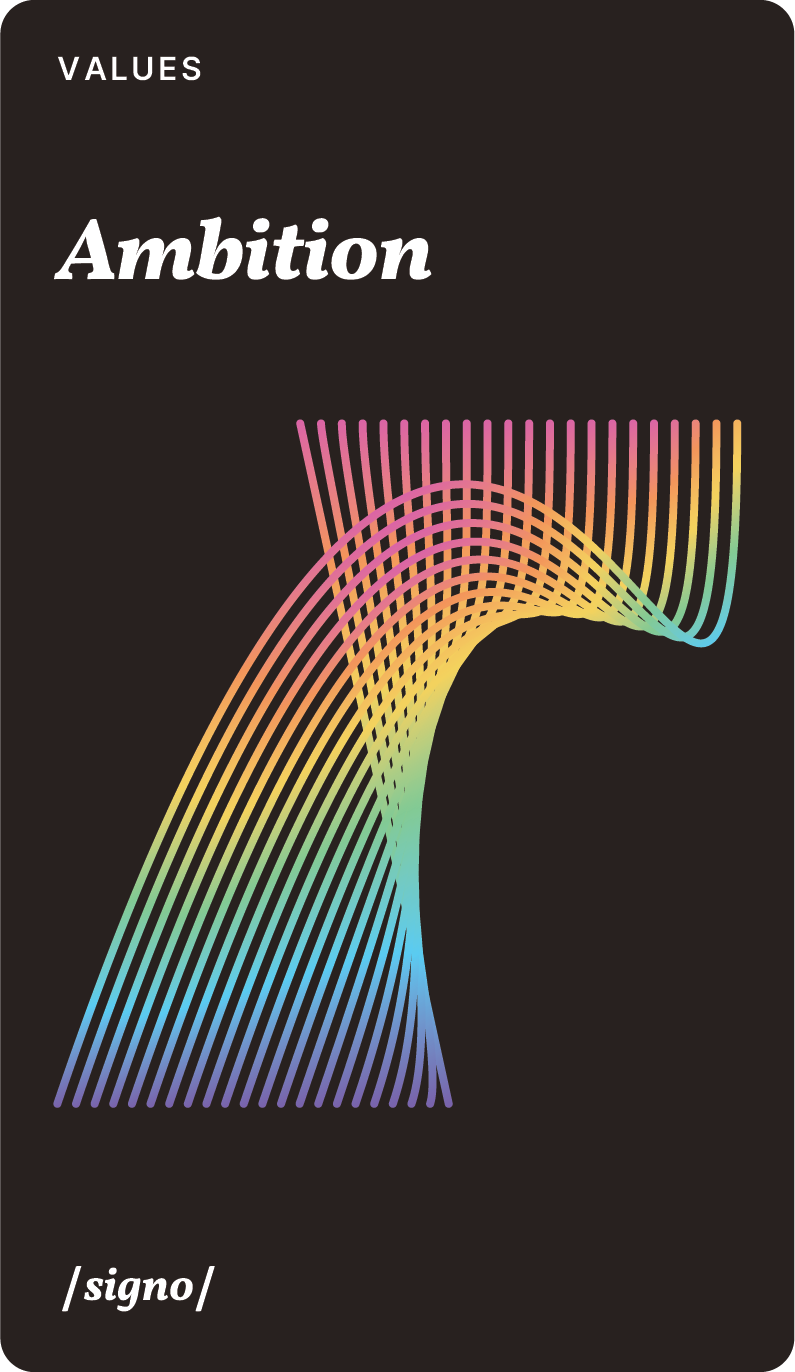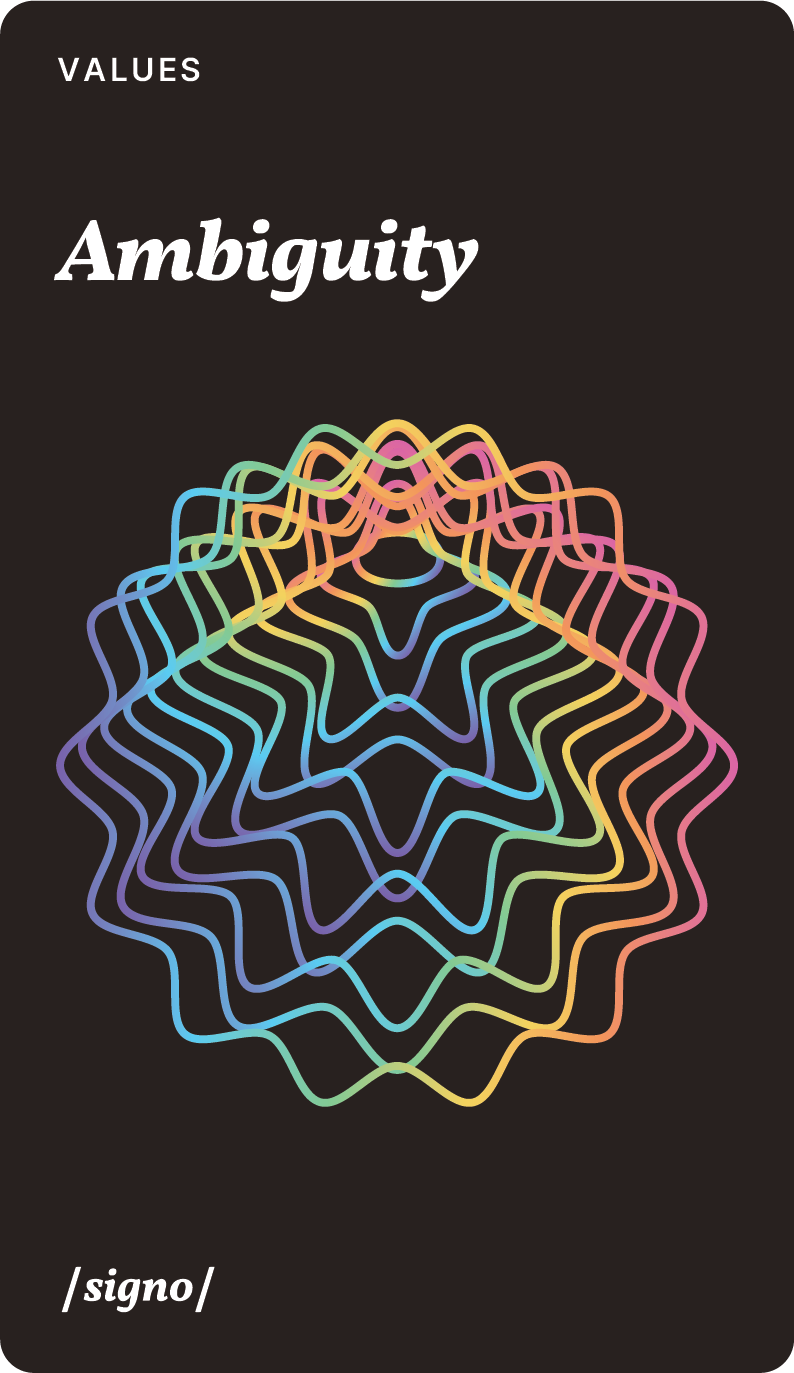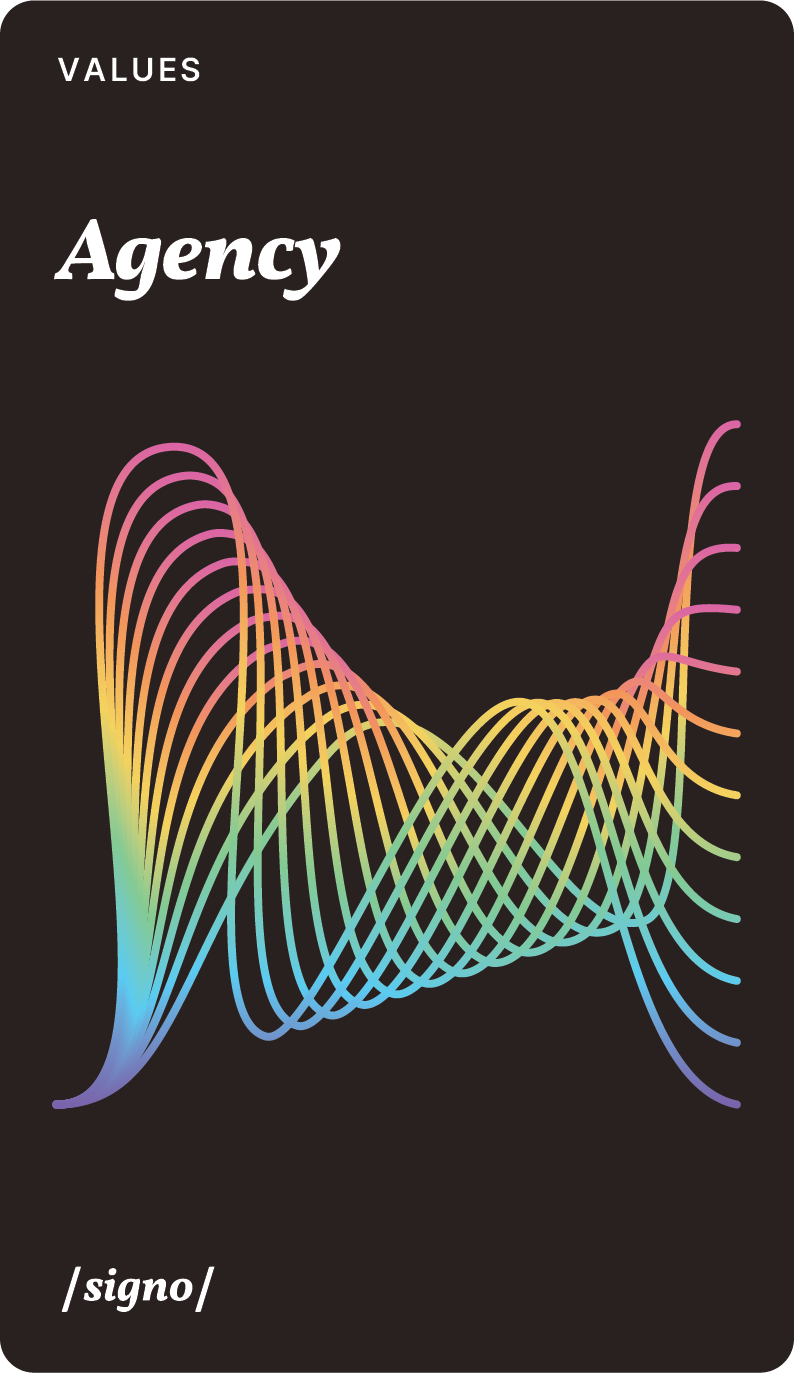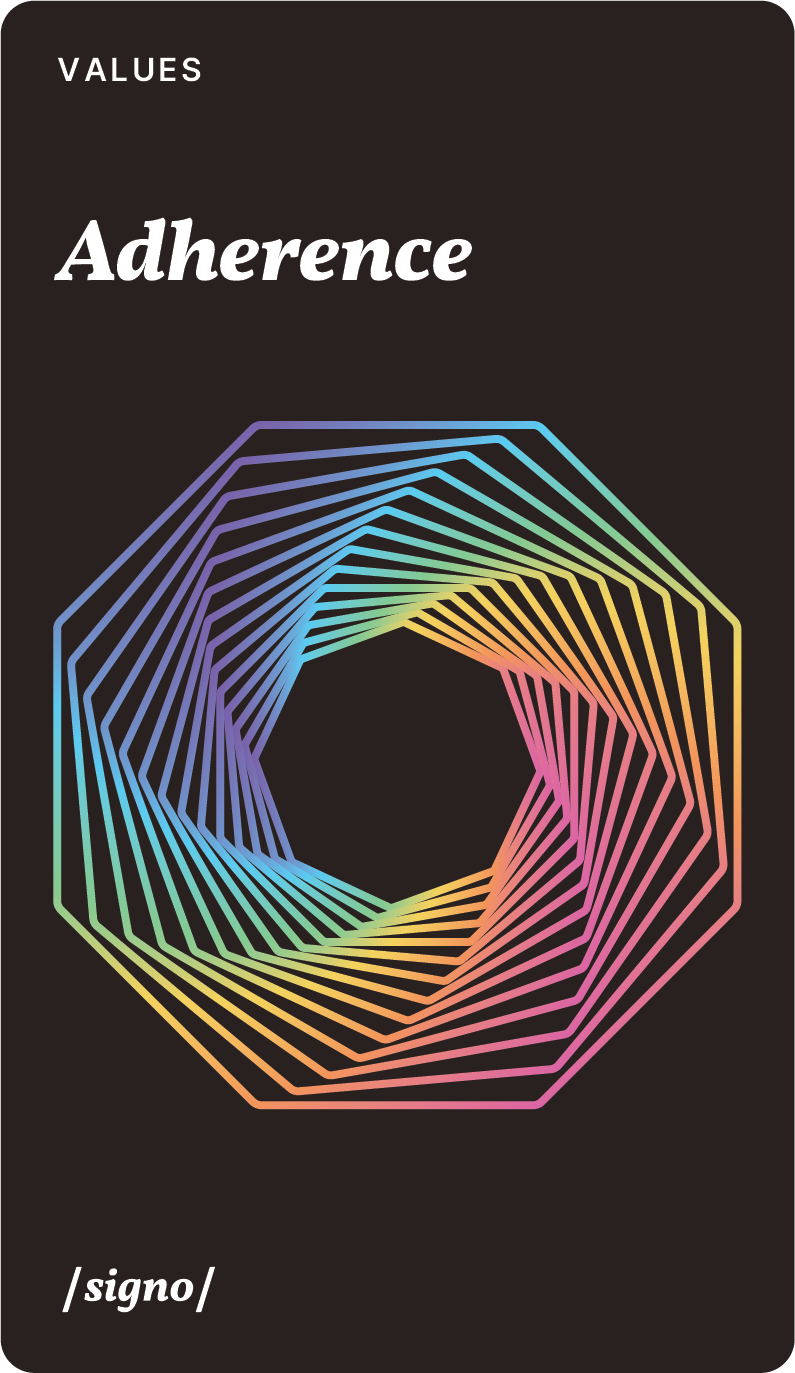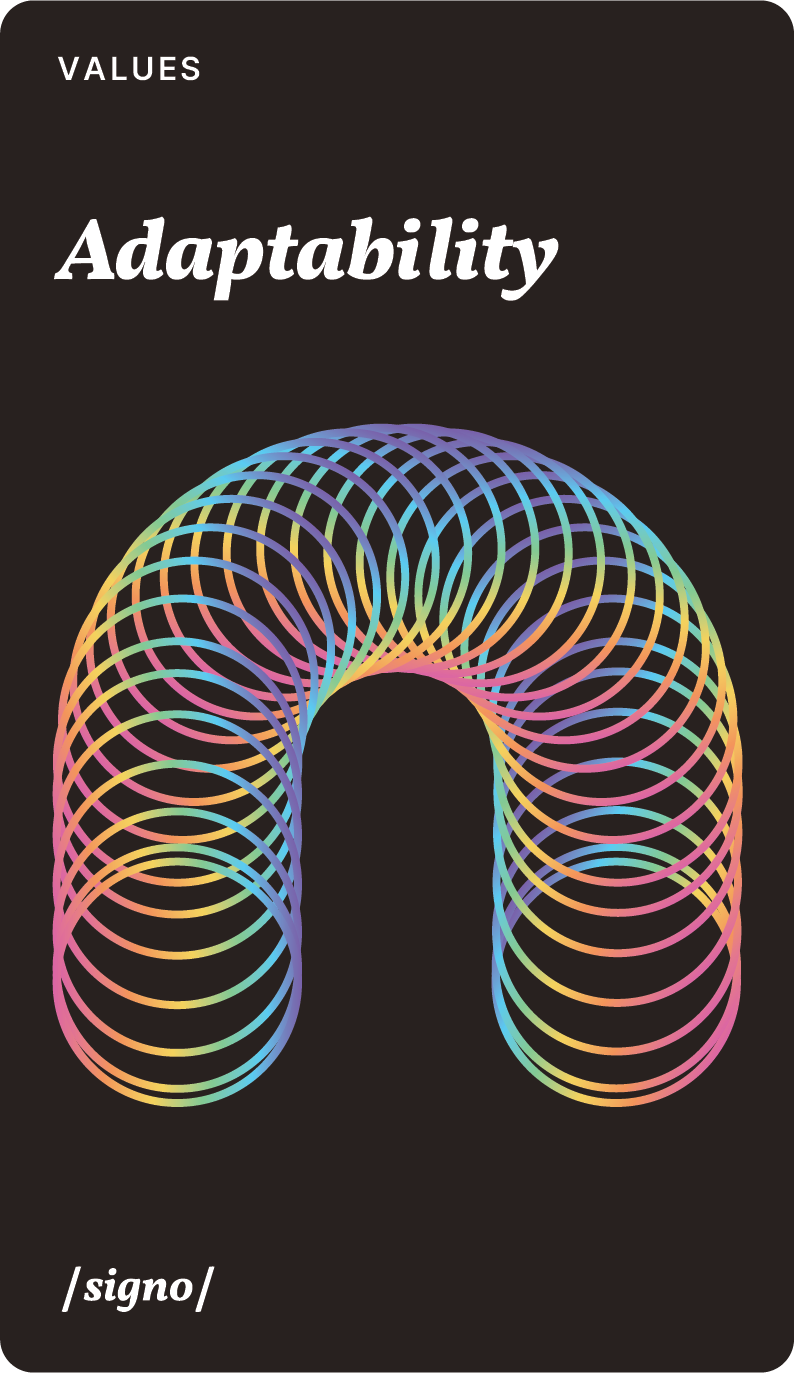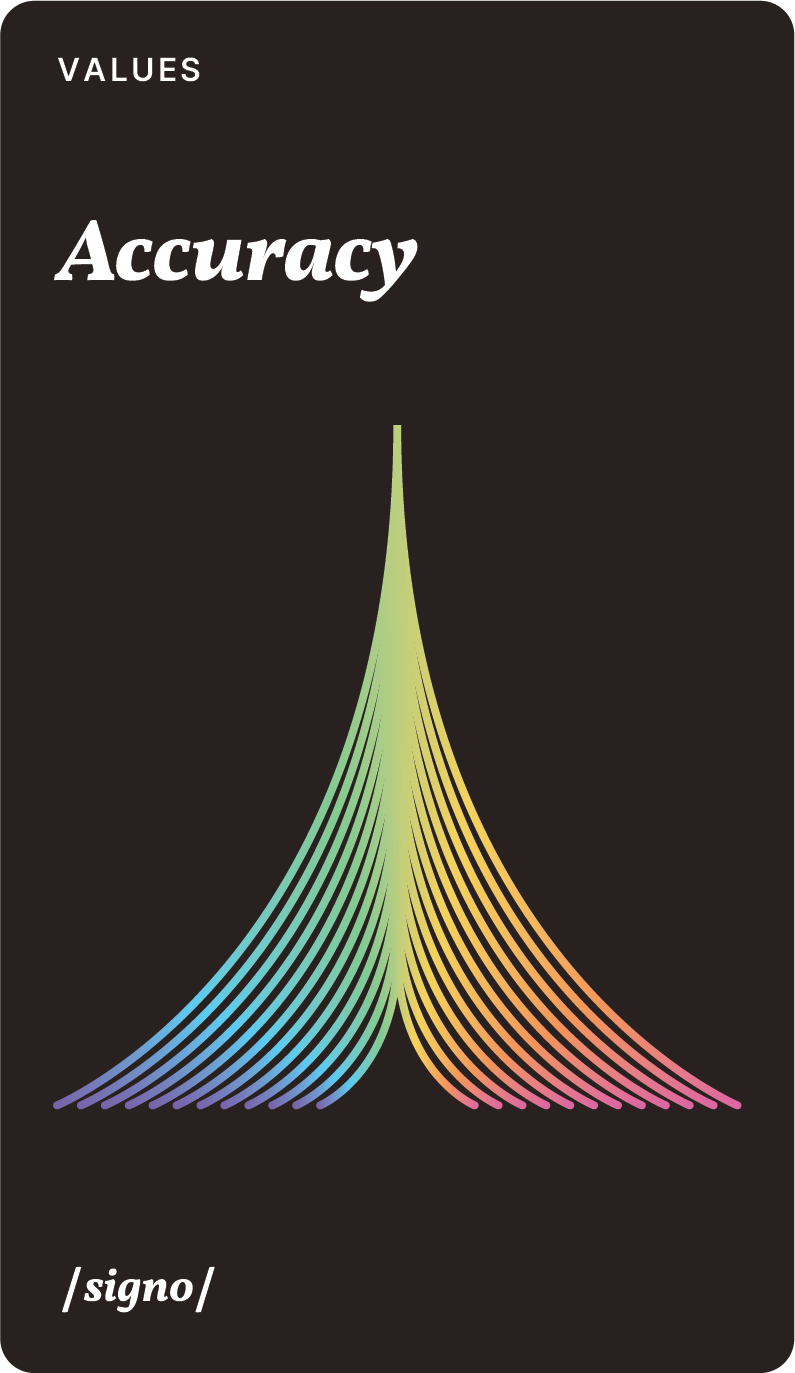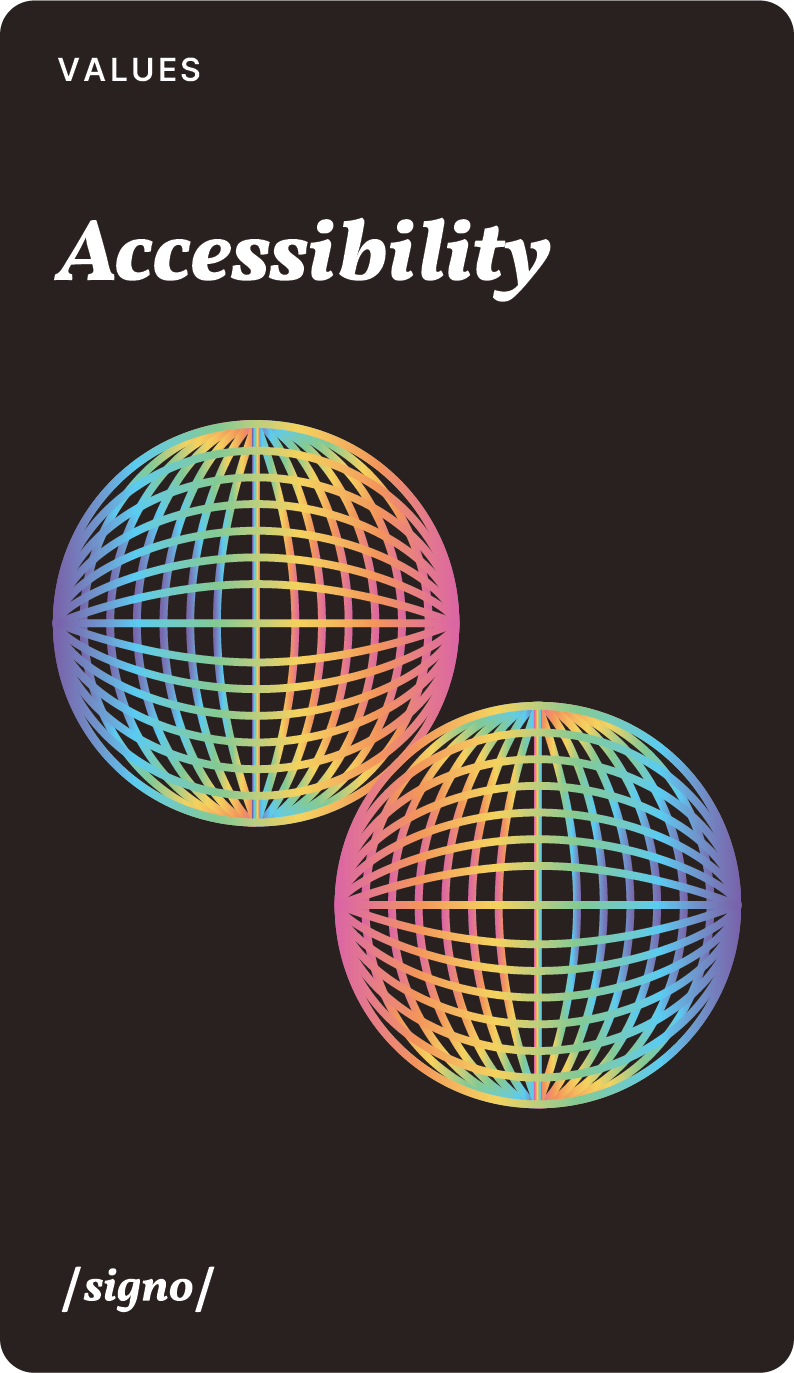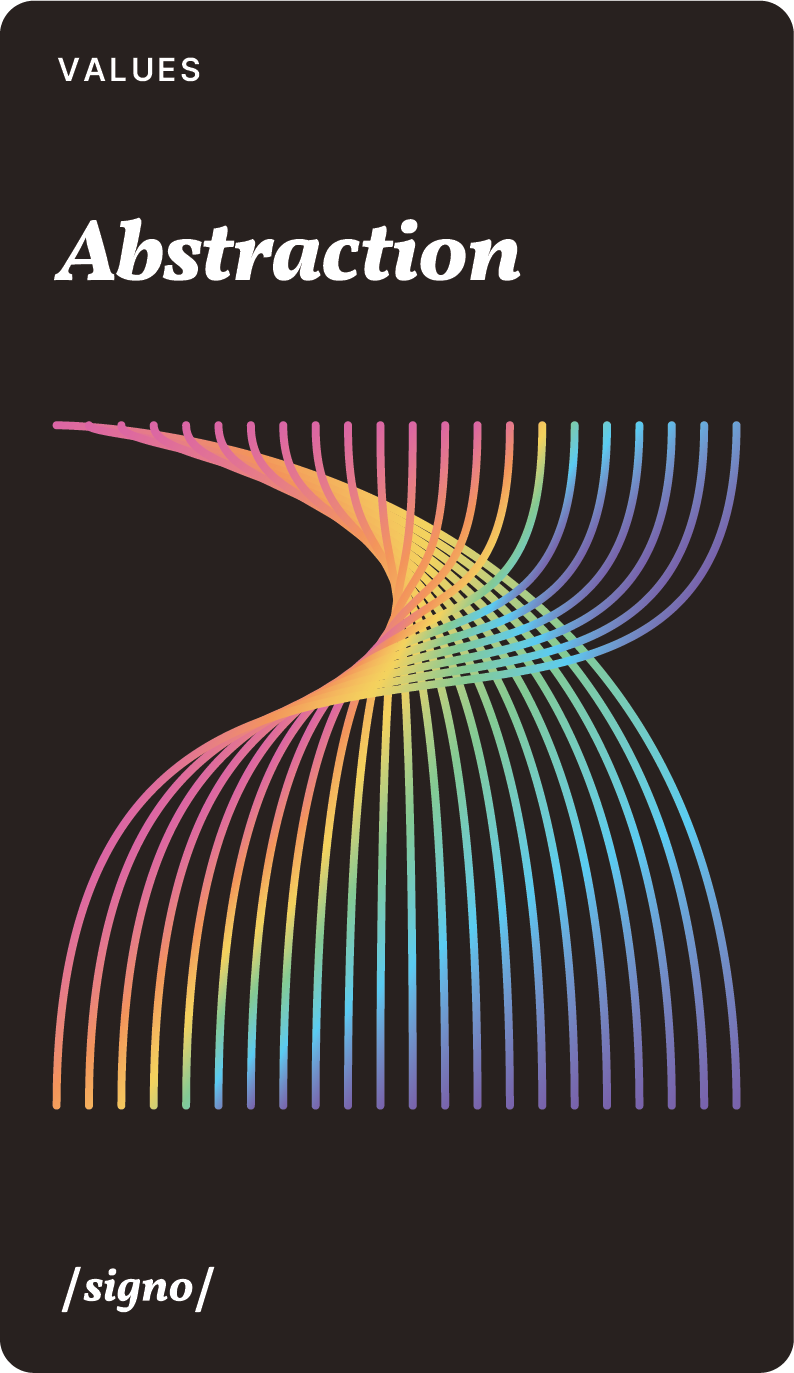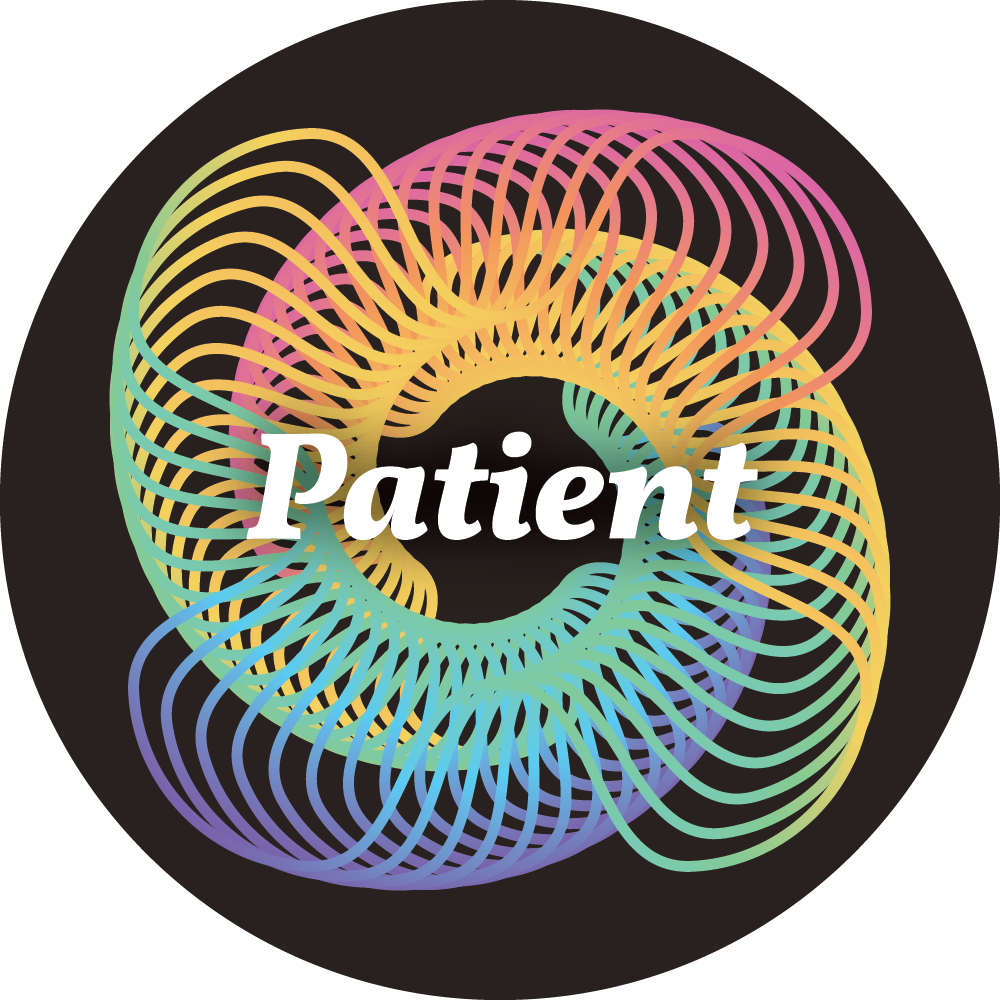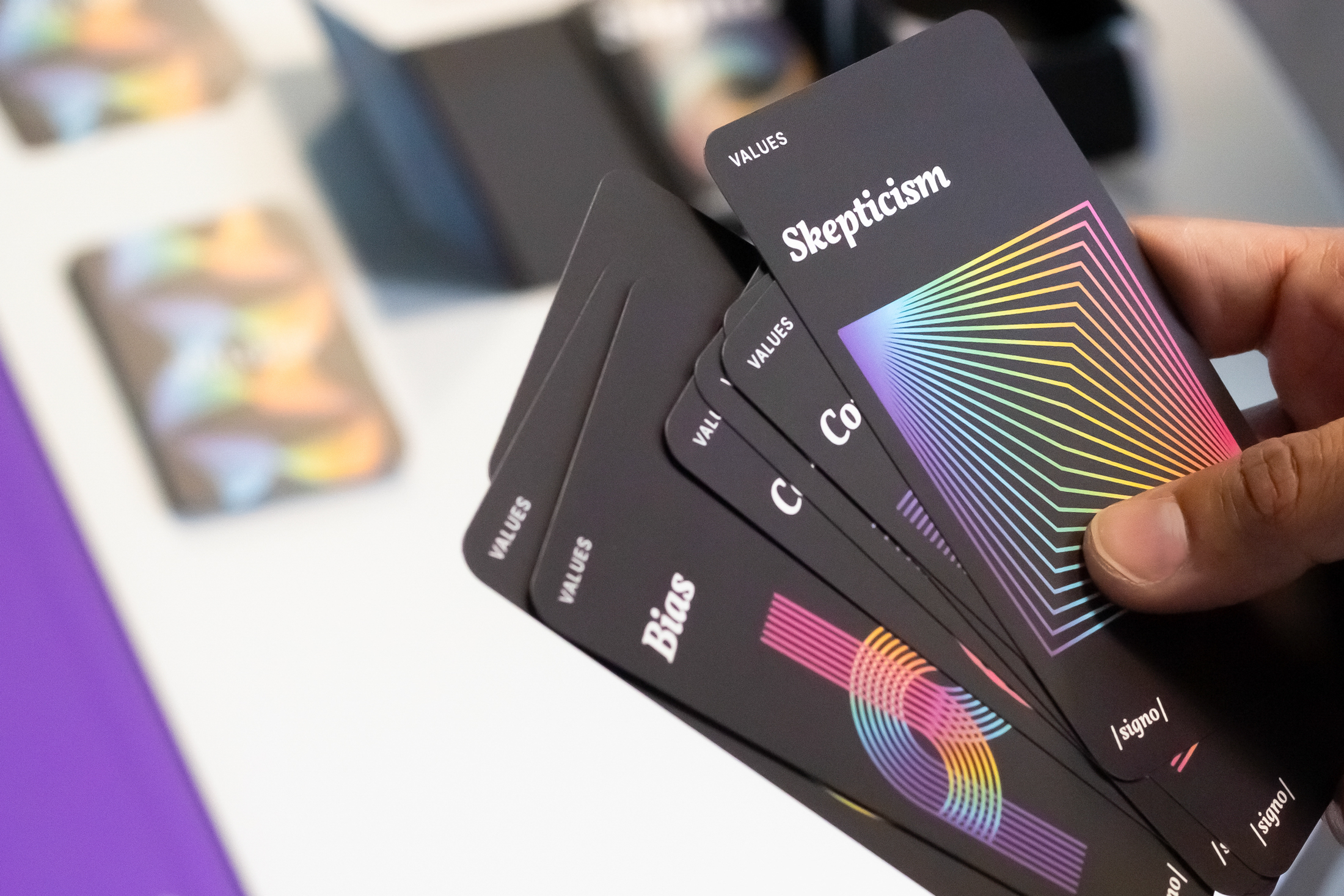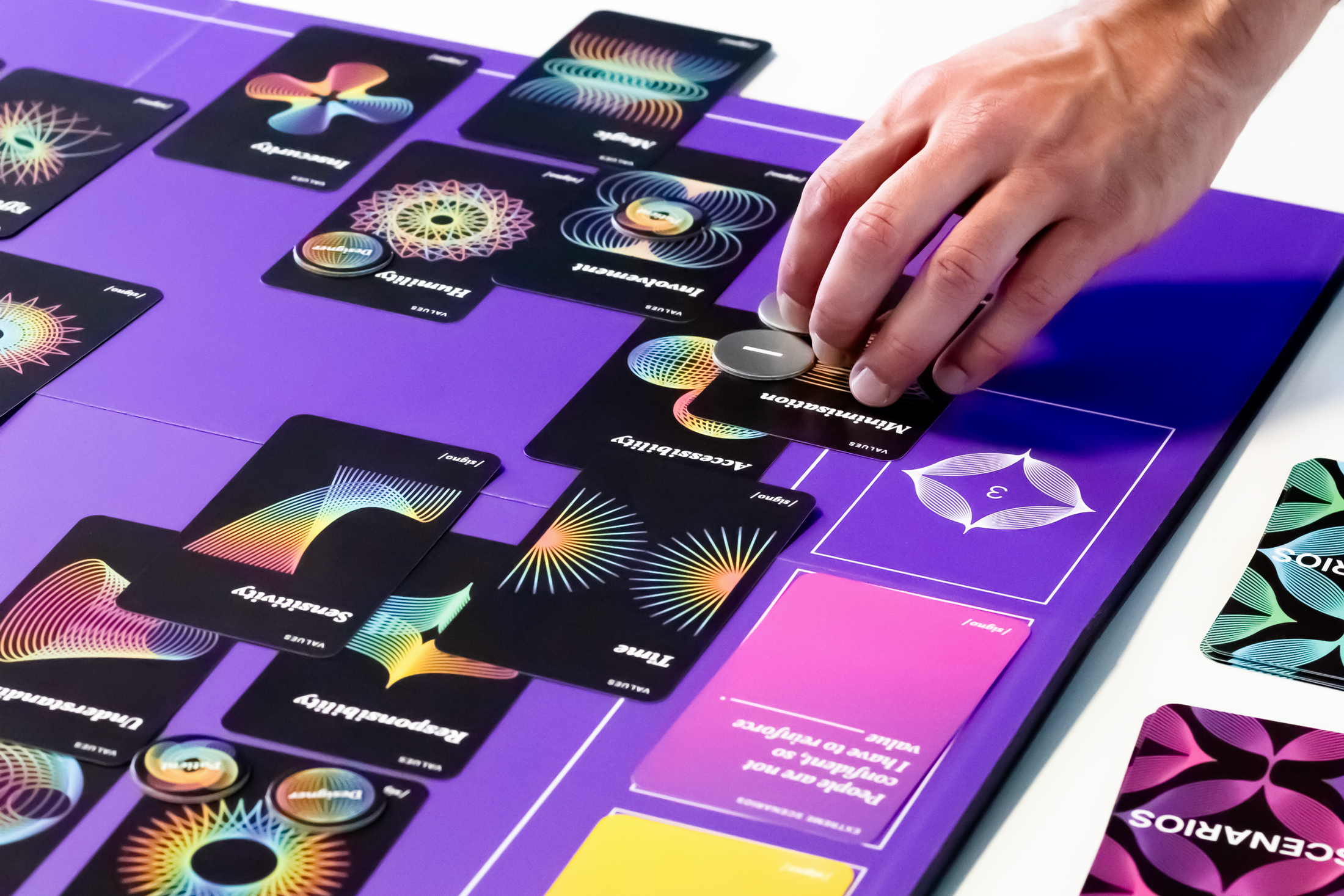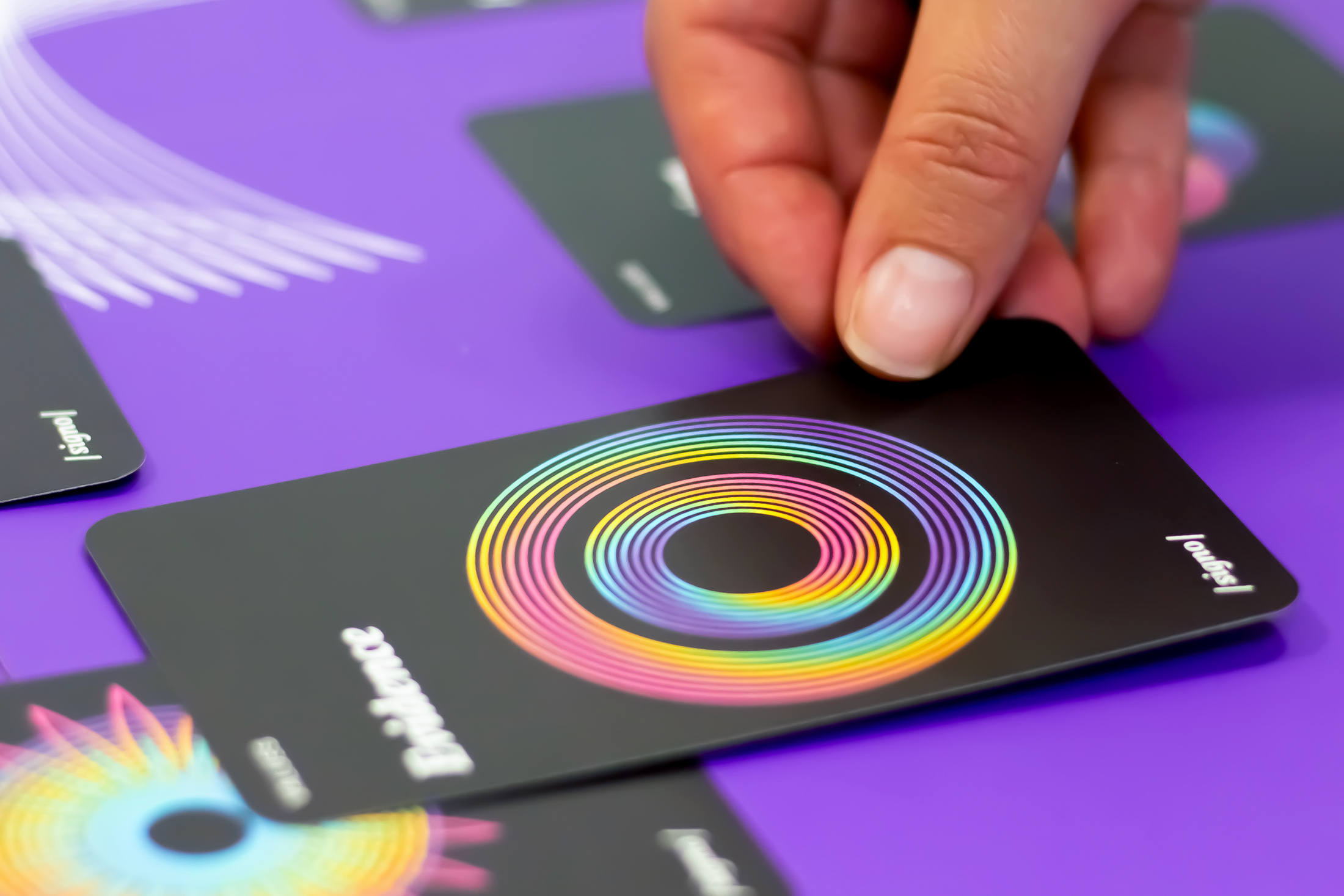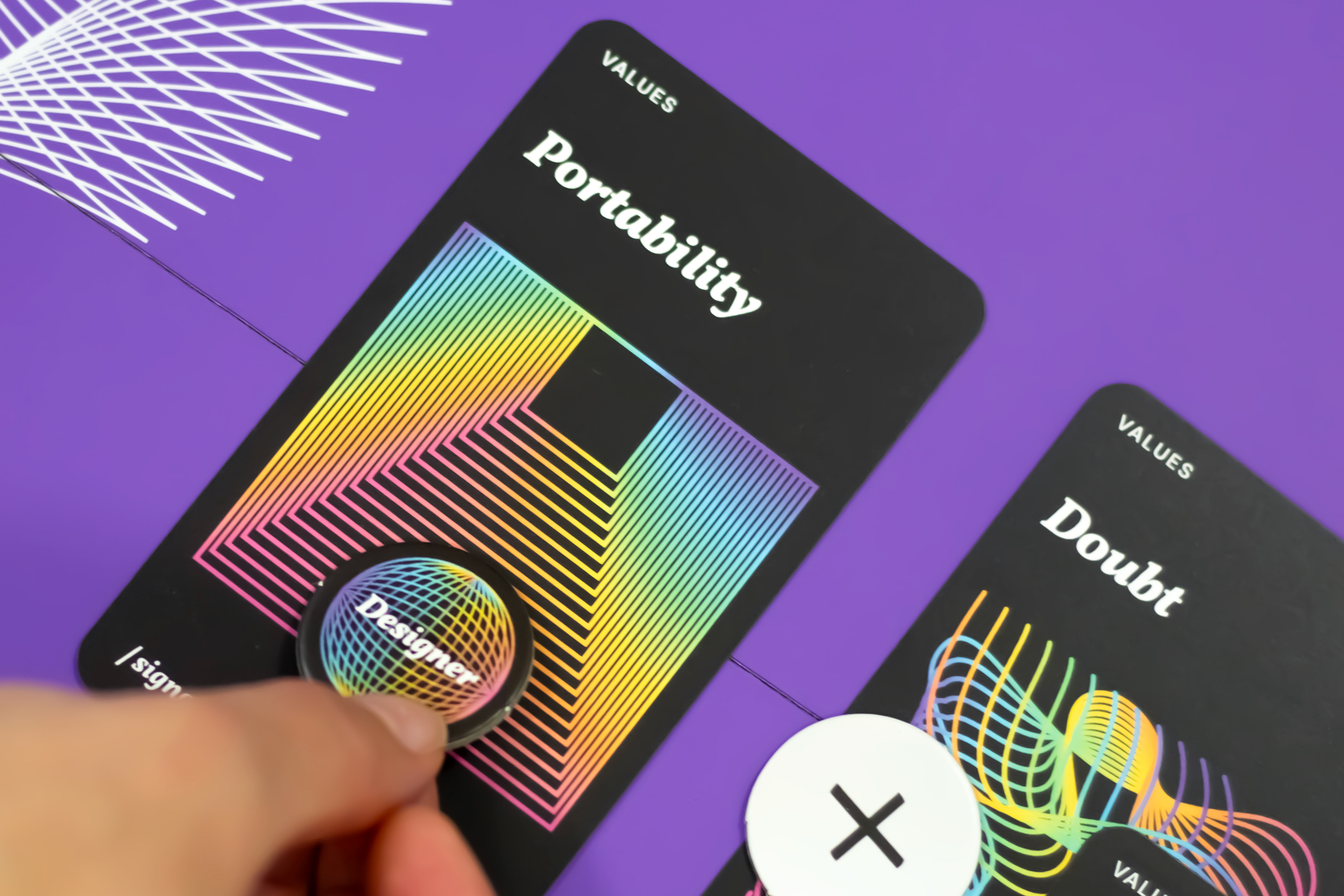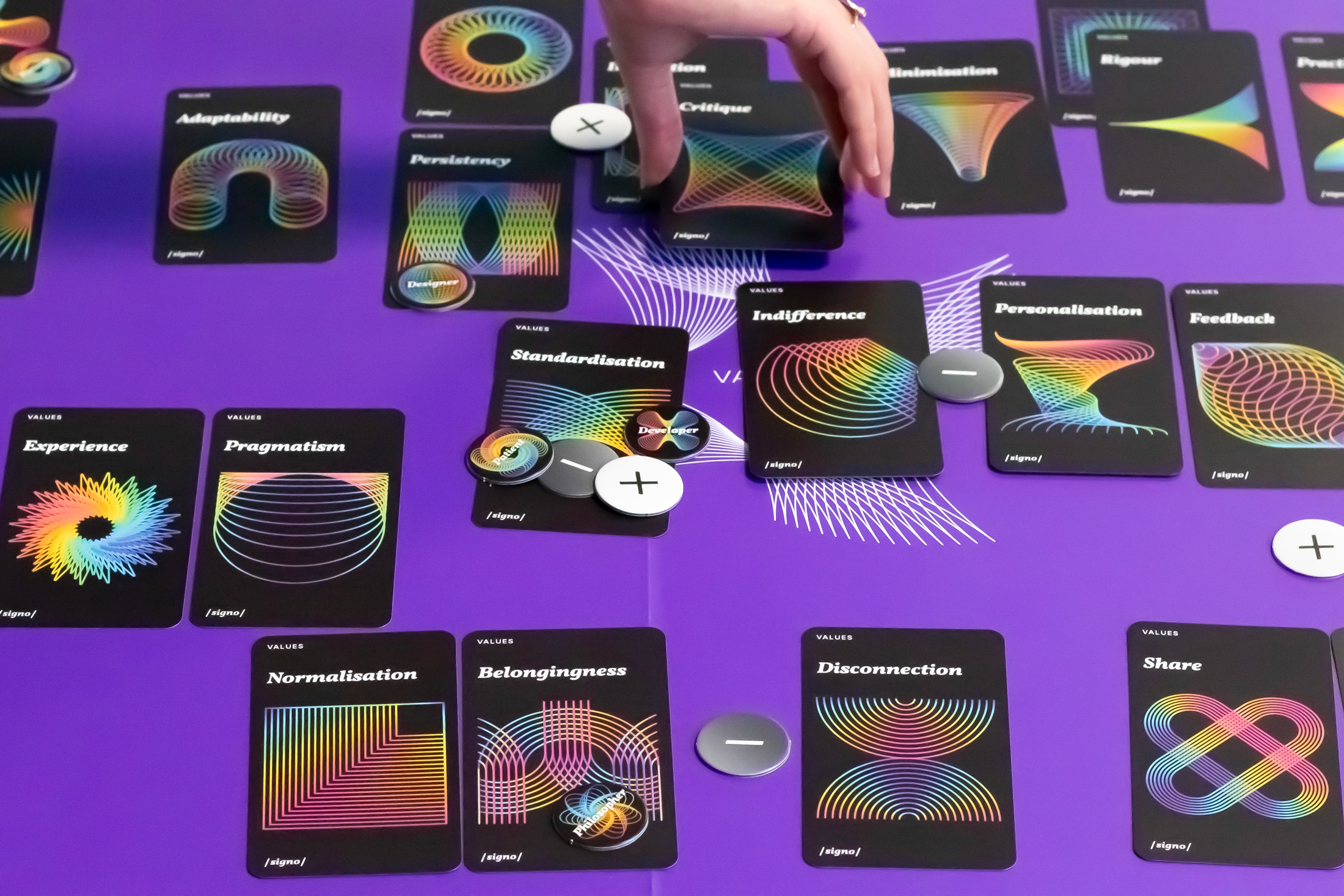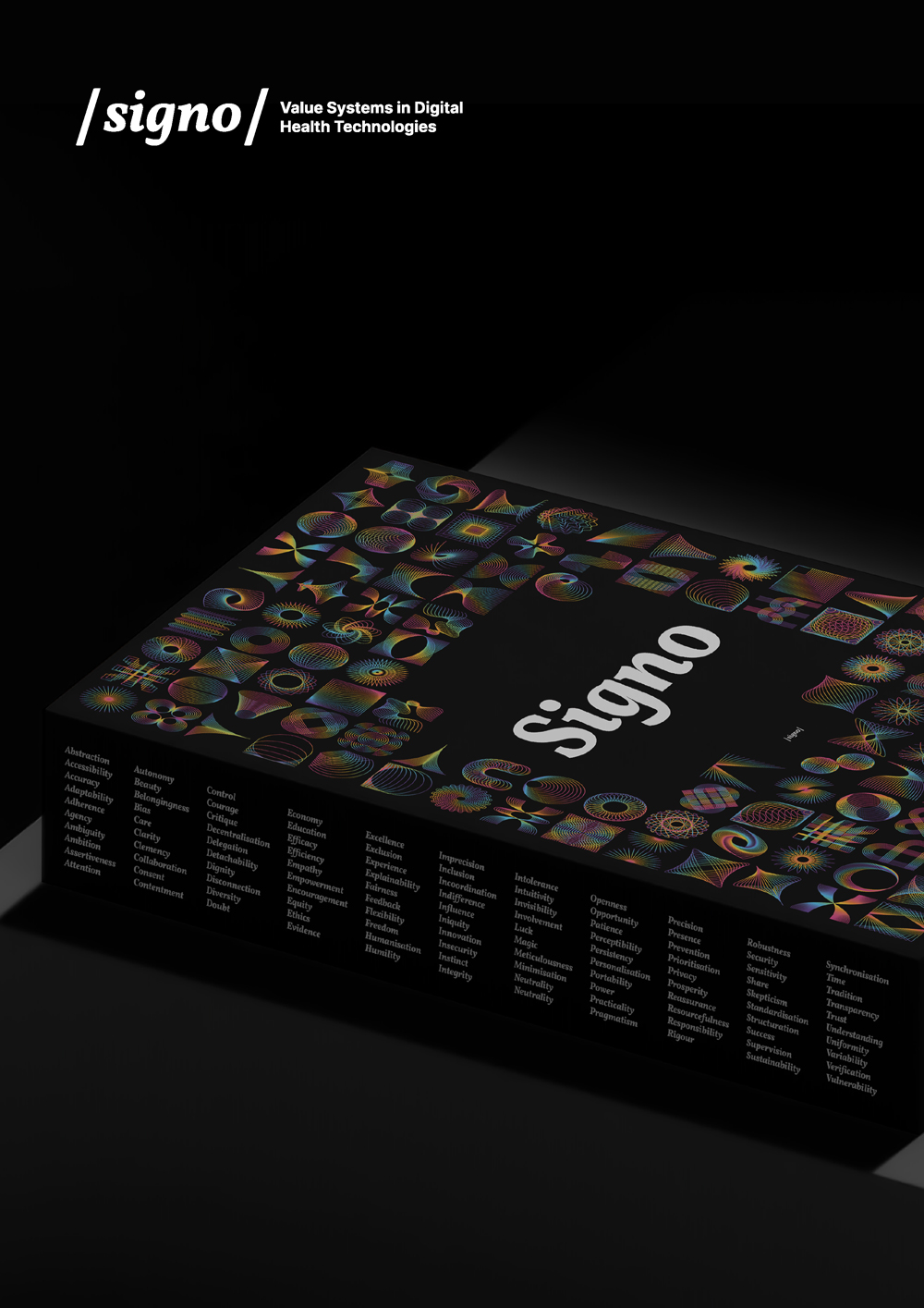Signo Card Game
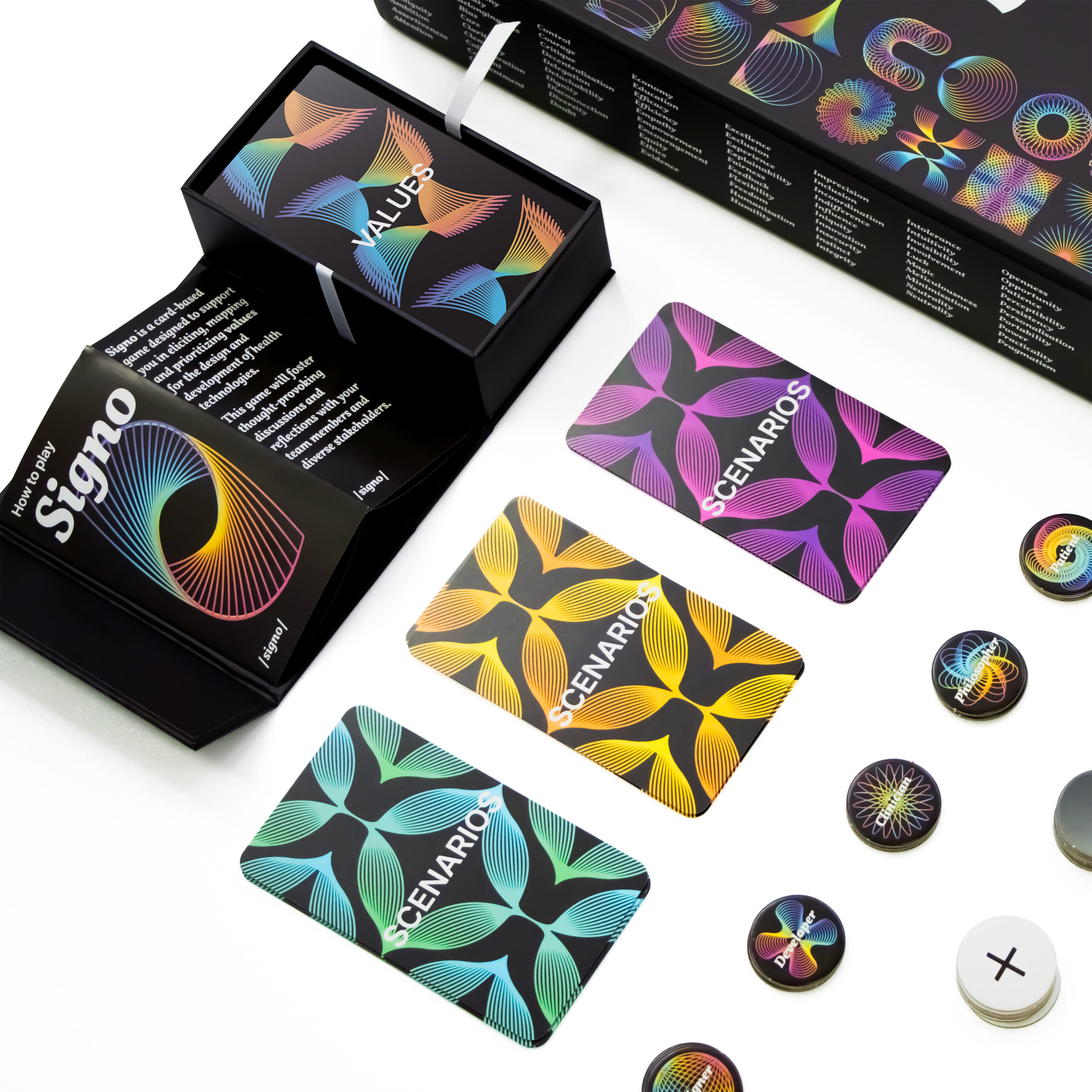
Signo is a card-based game designed to support eliciting, prioritising and mapping values when creating digital technologies. It brings diverse profiles from designers to developers, philosophers, and other stakeholders to encourage open conversations, diverse perspectives, and collaborative reflection.
Inspired by a bottom-up approach to Value-Sensitive Design, Signo provides a flexible, hands-on way to think about values during the design process. It can be played before, during and after technology development, from conceptualisation to implementation, allowing players to reflect on the values that change and adapt over time.
Signo’s tangible elements and flexible dynamics facilitate a shared space for reflection and thought-provoking discussions between diverse profiles, enabling these various perspectives to design more meaningful, inclusive, and human-centred digital technology.
Signo was co-designed using a participatory approach involving Human-Computer Interaction researchers, designers, engineers, data scientists, philosophers, and healthcare professionals.
We began with an ethnographic study, conducting observations and interviews with 9 clinicians to understand how values influence clinical decision-making, patient needs, and the use of AI and digital technologies in healthcare. These findings shaped the game’s scenarios and values and supported translating them into the cards.
After crafting a low-fidelity prototype of this tool, we ran two validation sessions with four Human-Centred Design experts to fine-tune the tool’s structure and flow.
Finally, we held three workshop sessions with 14 participants from diverse fields of expertise to test Signo in practice. Across these sessions, Signo proved to be effective in supporting players to identify, prioritise, and reflect on values, encouraging collaborative and candid discussions and inclusive and ethical thinking.
We designed Signo to be adaptable and flexible, allowing players to appropriate it as they see fit. To support this, we created a booklet with play suggestions – guiding without imposing restrictions. We recommend beginning by eliciting values: players choose three value cards and explain their relevance. Next, we suggest mapping these values onto the game board based on the selected scenario card. The game board depicts two axes deliberately open to interpretation, as players can attribute different meanings.
For instance, the horizontal axes can represent a timeline of events, and the vertical axes the level of importance or relevance. There are no right or wrong answers – players should feel free to change their minds, explore different perspectives, and engage in respectful dialogue. Moreover, during the tests we ran, we found that a large game board would be ideal to provide enough space to accommodate the abundance of elicited values during discussions.

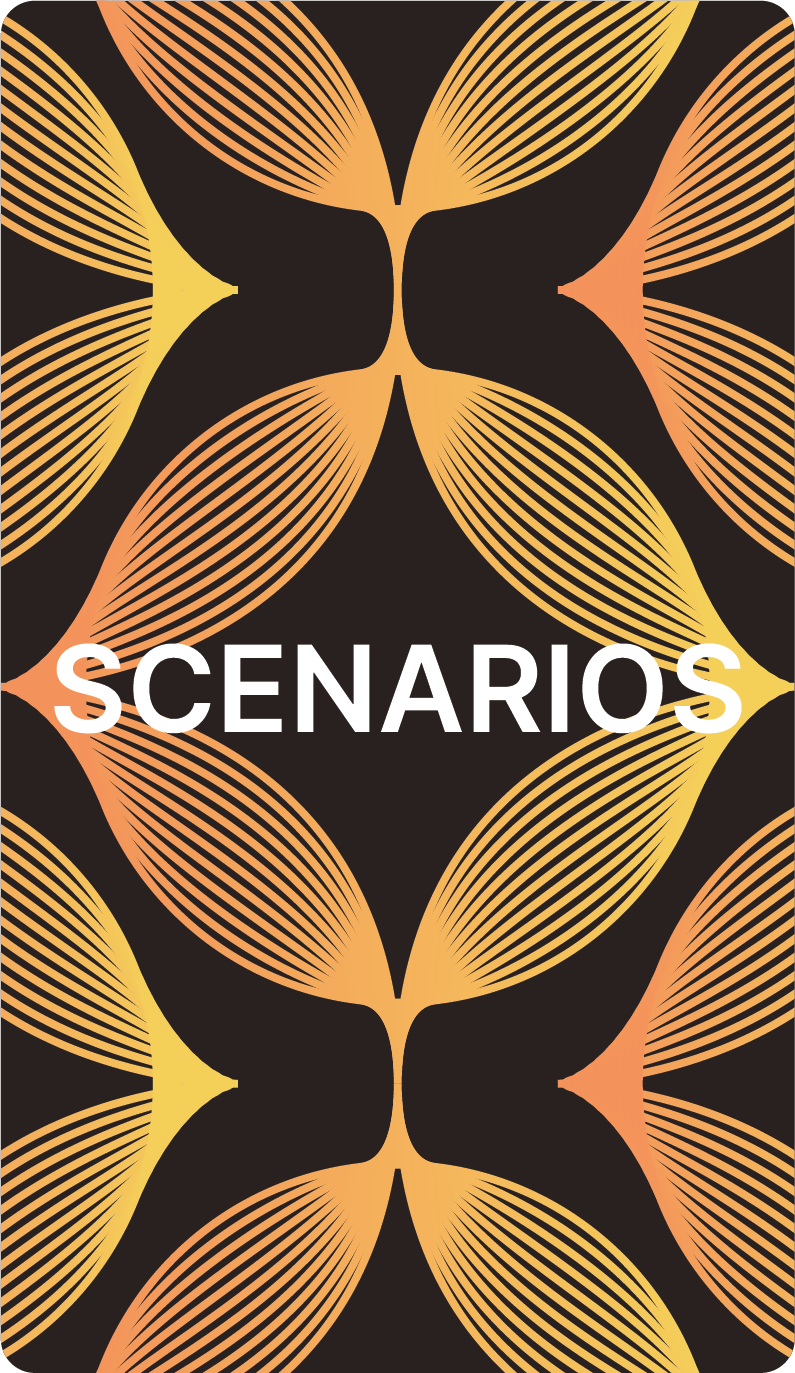
Signo has three scenario decks, each with five scenario cards, in which players can fill in the blanks by writing and using the value cards that best fit the situation posed by that scenario. Despite these being purposefully open, players can reflect on scenarios, situations and challenges they are currently facing. Thus, each deck has extra cards for them to write down a specific scenario.
Regarding the distinction between decks, the yellow scenario cards comprise common scenarios or situations. An example could be: “When designing a digital technology, I have to consider the value of Privacy.”
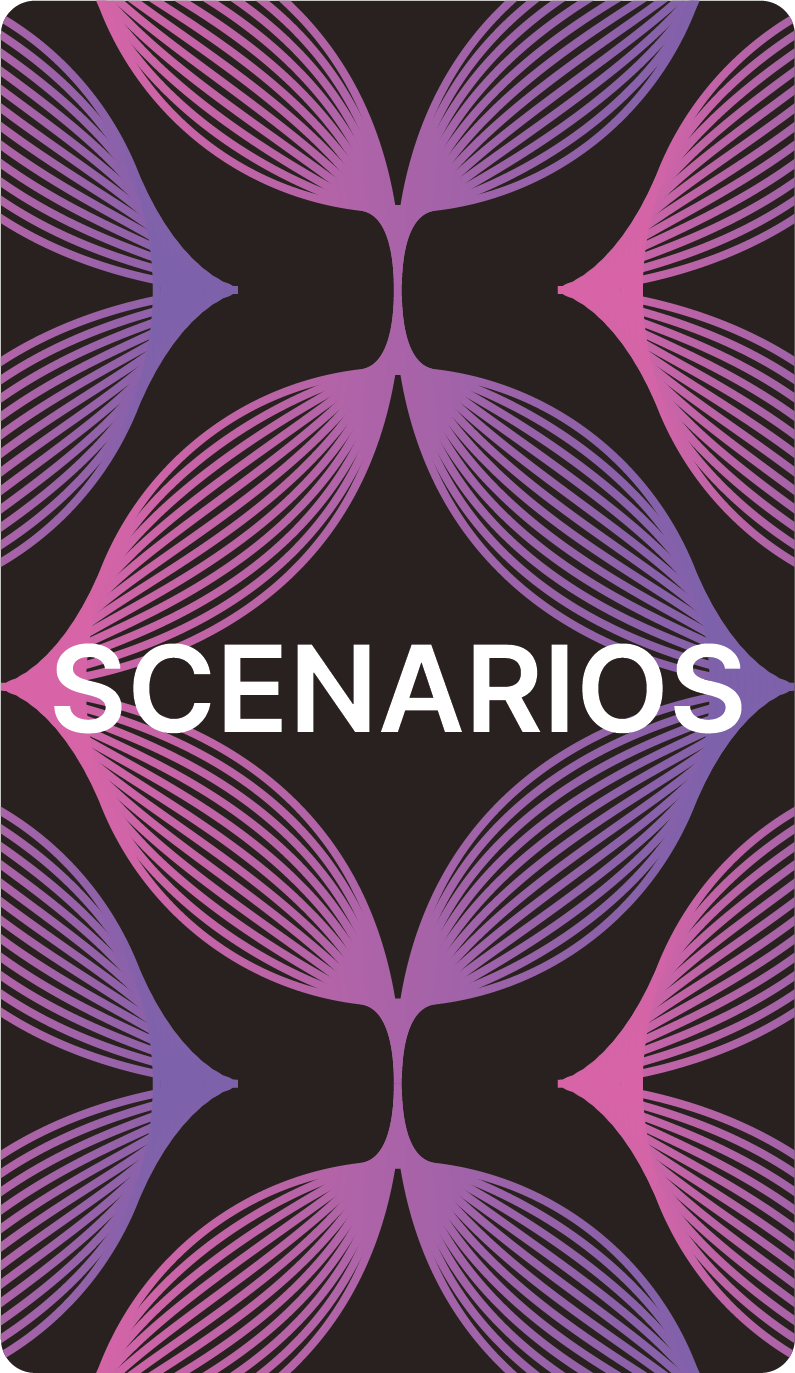
The purple scenario cards contain extreme scenarios or situations. These can relate to a lack of confidence or understanding from users, reluctance to share information or collaborate, and resistance to adopting technology. An example could be: “People are not confident, so I have to reinforce the value of Empathy.”

The blue scenario cards include technology scenarios or situations. These can be about which values should be considered for users to feel supported, to adapt to their individual needs, to help there’s no trust, to accommodate fully remote situations, or when technology fails. An example could be: “The value of Clarity, is crucial for people to feel supported by technology.”
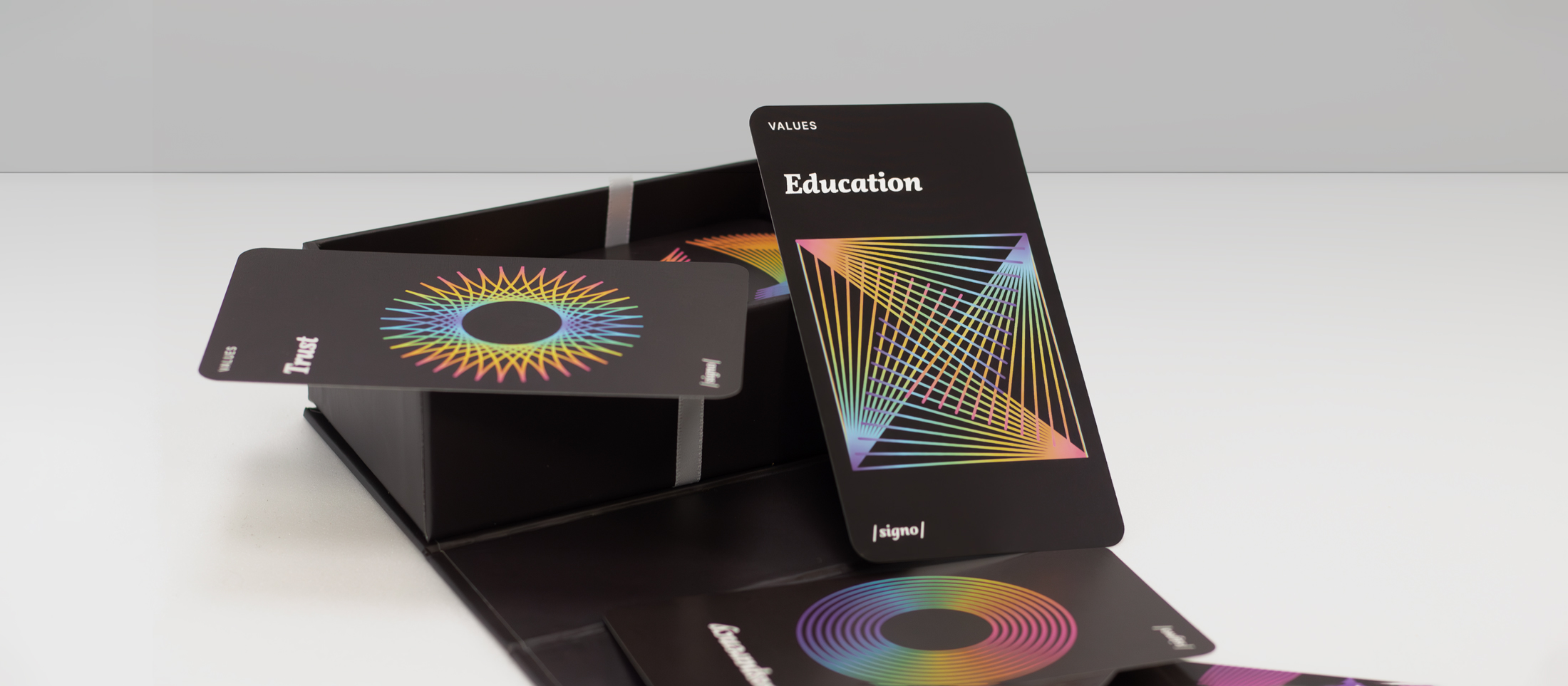
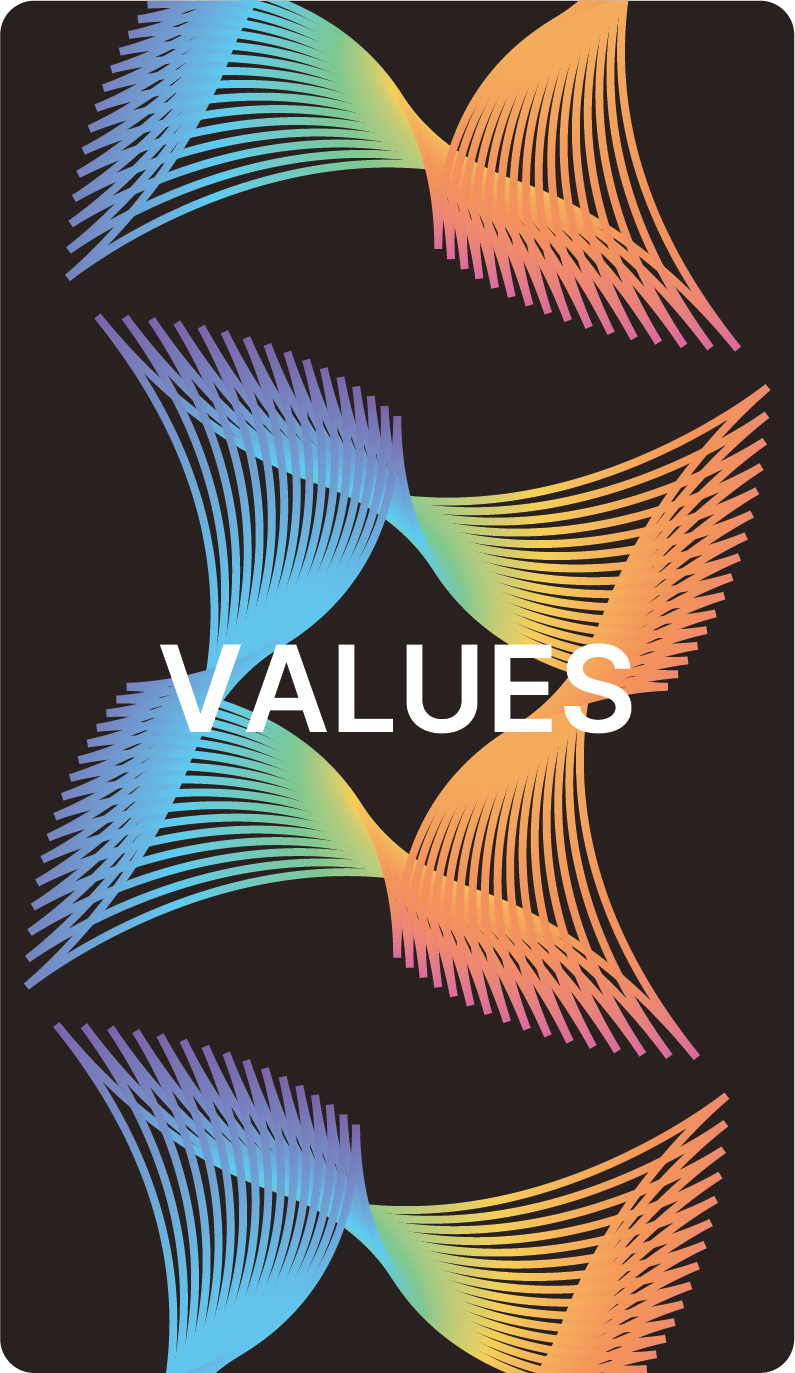
Signo has 110 value cards, each with a different abstract and evocative illustration, allowing values to be open to interpretation. Players can use these cards separately or place them on the game board. They can start by eliciting the values they most identify with and then map and prioritise these by placing them on the game board according to the meaning attributed to the axes and the scenario cards they are playing with.
Signo also contains extra blank cards to allow players to add more values not included in this deck.

Signo has two types of tokens that players can place on the top of the value cards. The profile tokens represent six different archetypes of profiles that affect or are affected by technology. These can be designers, developers, philosophers, clinicians and patients. Since each profile can consider different values when designing technology, players can use these tokens to highlight the values different profiles should account for. Nonetheless, these are suggestions, and players can attribute different meanings according to their needs.
For instance, the “developer” token can represent the “technology”, and the “patient” token can represent the “user” of that technology. Players can also use the polar tokens to highlight value cards according to a positive or negative perspective, depending on their context. Additionally, players can use these tokens to make arithmetic connections between values. For instance, adding, subtracting, multiplying or dividing values near each other.
